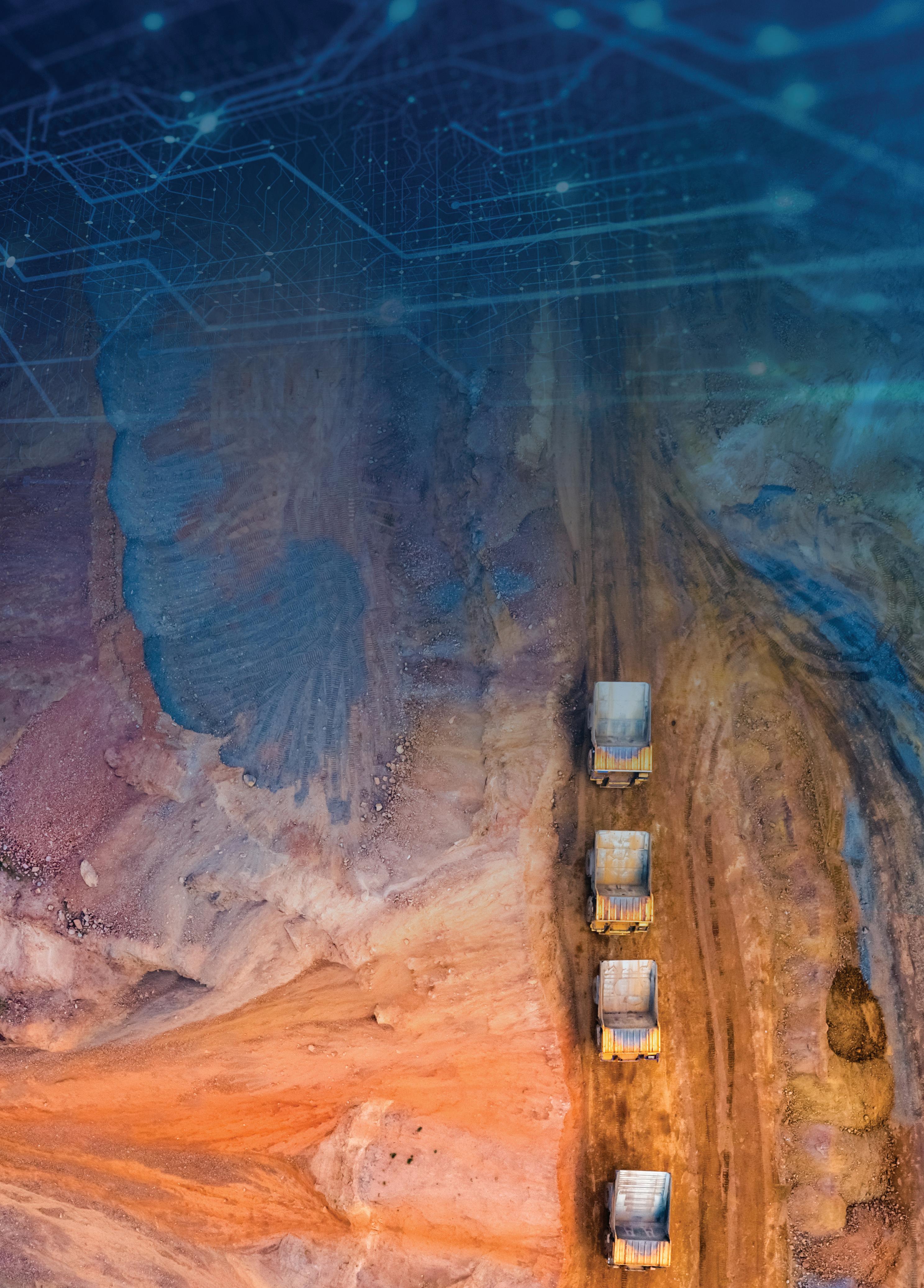MAKING MINING SAFE R WITH EMERGENCY RESPONSE TRAINING

MADELEINE KING: AUST R ALIA’S NEW C R ITICAL MINE R ALS ST � ATEGY
DEEP SEA MINING MA K ING WAVES

MAKING MINING SAFE R WITH EMERGENCY RESPONSE TRAINING

MADELEINE KING: AUST R ALIA’S NEW C R ITICAL MINE R ALS ST � ATEGY
DEEP SEA MINING MA K ING WAVES
Aid in fire prevention and supression and limit costly stoppages caused by dangerous hot tyre events with on-site nitrogen.
Extended range of nitrogen generators including:
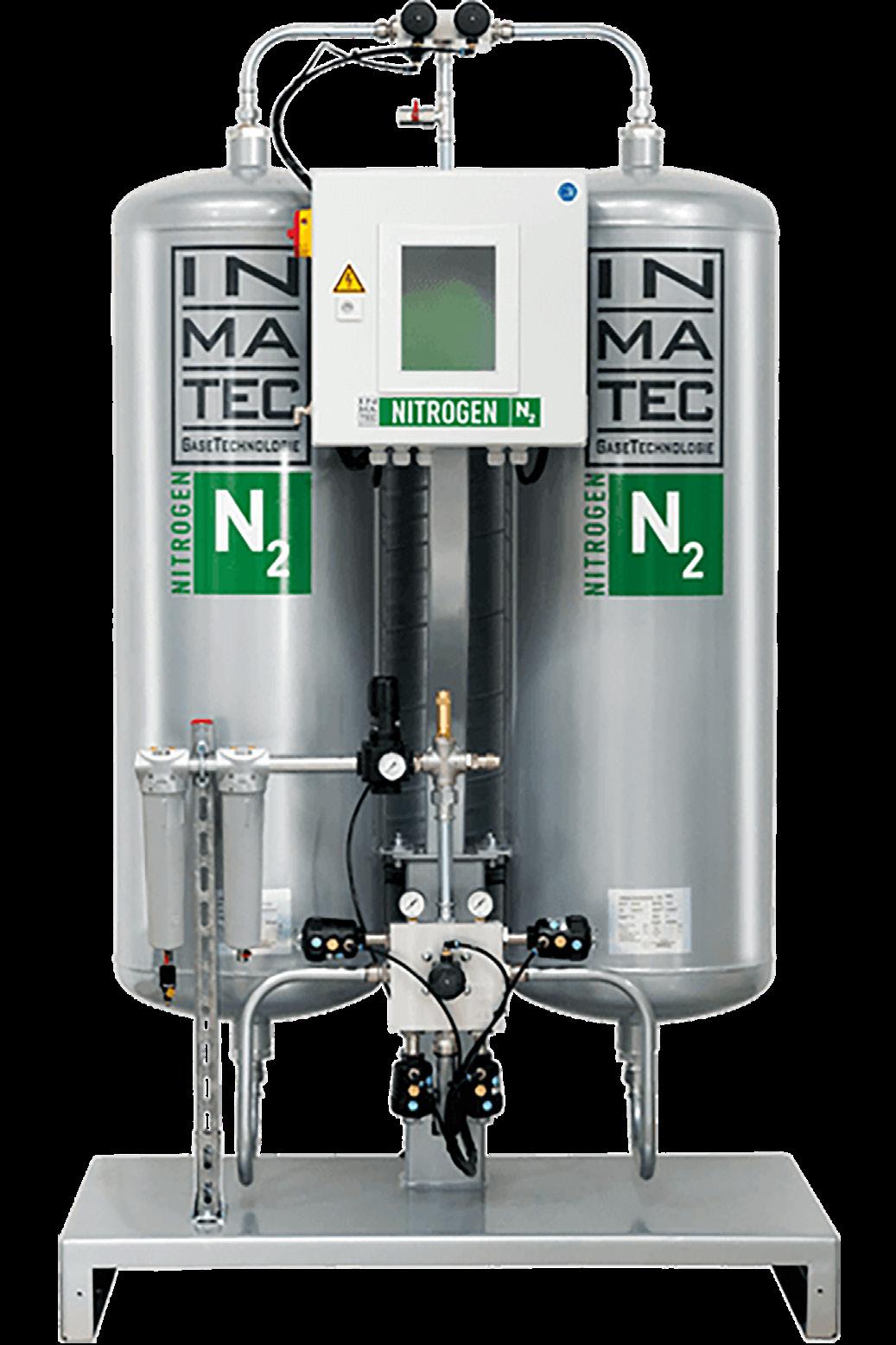
• Flow from <1 Nm3/hr to over 3000 Nm3/hr
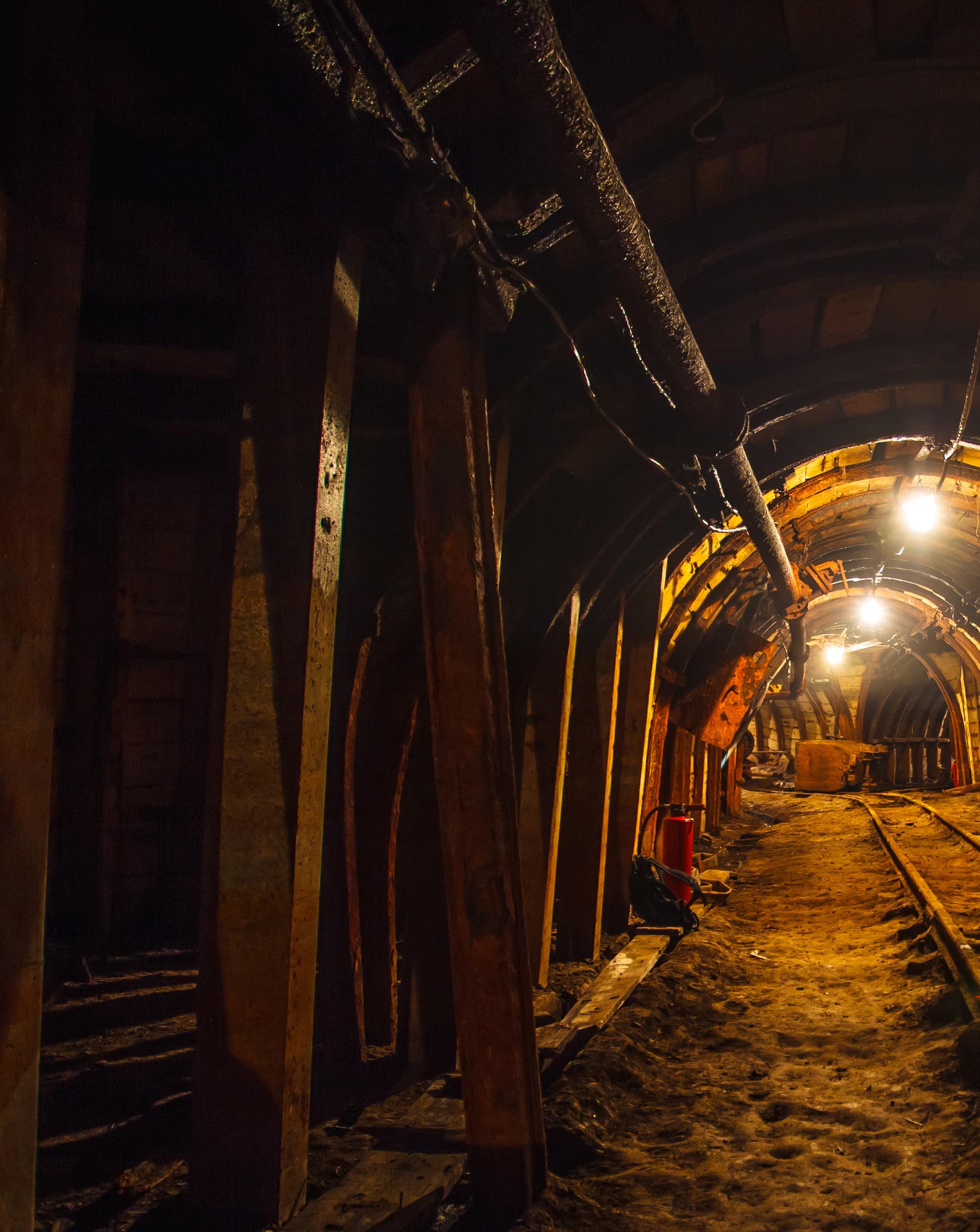
• Purity from 95% to 99.9999%
• Offered in PSA and membrane
Available in fixed and portable installations
CALL 1800 800 878 OR VISIT CAPS.COM.AU
The Spring issue of Mining Magazine accompanies the beginning of a new financial year and, with a large number of organisations across the industry reporting strong results from the previous financial year, many are looking towards how the industry will continue to evolve and innovate in the future.
The buzz around critical minerals has heightened over the last few months, spurred along by the recent announcement of a new Critical Minerals Strategy. In addition to this, the Federal Government announcing its intention to update Australia’s Critical Minerals List has helped cement critical minerals at the forefront of the industry’s focus.
In this issue, we spoke to Federal Minister for Resources, Madeleine King, about all things critical minerals, including current exploration initiatives and Australia’s role in building secure supply chains.
As the frost of winter slowly gives way to the green of spring, so too, does the industry turn towards greener solutions to continue driving progress forward. This feature explores Curtin University’s work on accelerating the natural mineral carbonation process and drafting a decarbonisation roadmap for Western Australia.
Concurrent with the evolution of mining processes is the advancement of mine safety protocols and training. In this issue we discuss the mine safety competitions that are simulating real-life emergencies to train the next generation of safety response teams.
This issue also features a strong focus on something that is close to my heart – women in the mining industry. Recent data is showing a steady increase in women in the resources industry and in compiling this issue I had the opportunity to hear from a number of these experts. From research to leadership, I am proud to share the stories of the women who are making their mark in the resources industry.
As always, I am open to new things so if there’s a topic, project, technology or challenge you’d like to read in future editions, I’d love to hear from you. Please feel free to flick me an email.
Rebecca Todesco Editor
22
Critical minerals is the buzzword on the lips of the mining industry, with a multitude of state and federal funding and initiatives underway to further drive Australia’s critical minerals strategy. Federal Minister for Resources, Madeleine King, spoke to Mining Magazine Editor, Rebecca Todesco, to discuss the recently released Critical Minerals Strategy, and provide a snapshot on how the industry is shaping up in Australia.
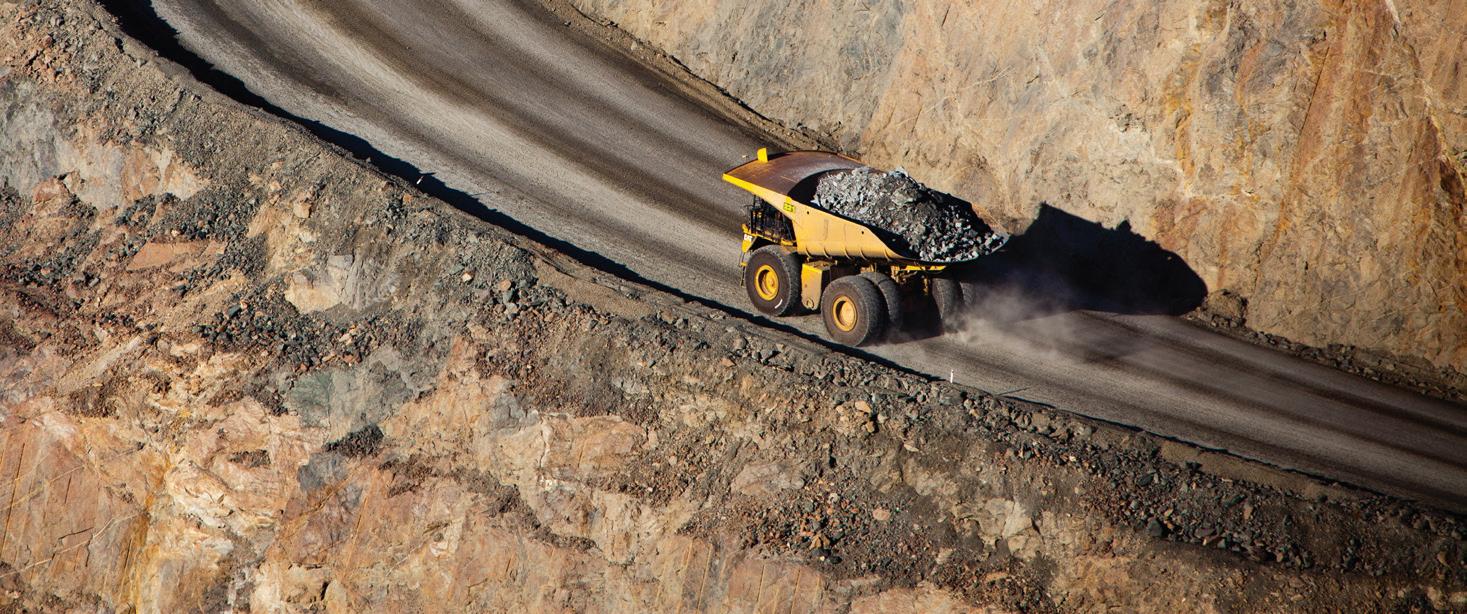
A LEAP OF FAITH: THE JOURNEY FROM PERFORMING ARTS TO STEM
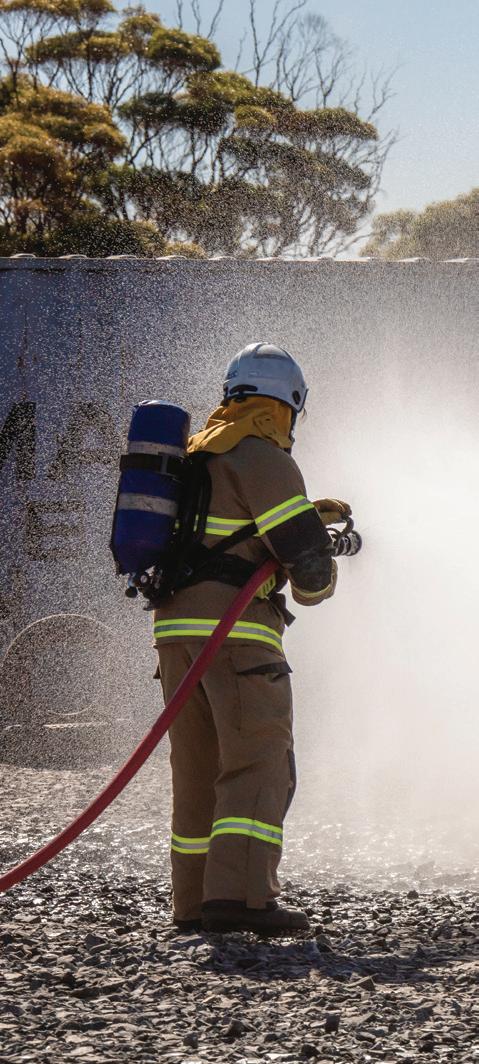

10
Following her graduation from the University of Newcastle, Kelsie Clarke threw herself into the deep end, packing up her life in New South Wales and moving across the country to take a job in Western Australia. Kelsie sat down to chat with us about how that decision led her to a role in leadership, a visit to Antarctica and being awarded the 2023 Chamber of Minerals and Energy’s (CME) Outstanding Young Woman in Resources Award.
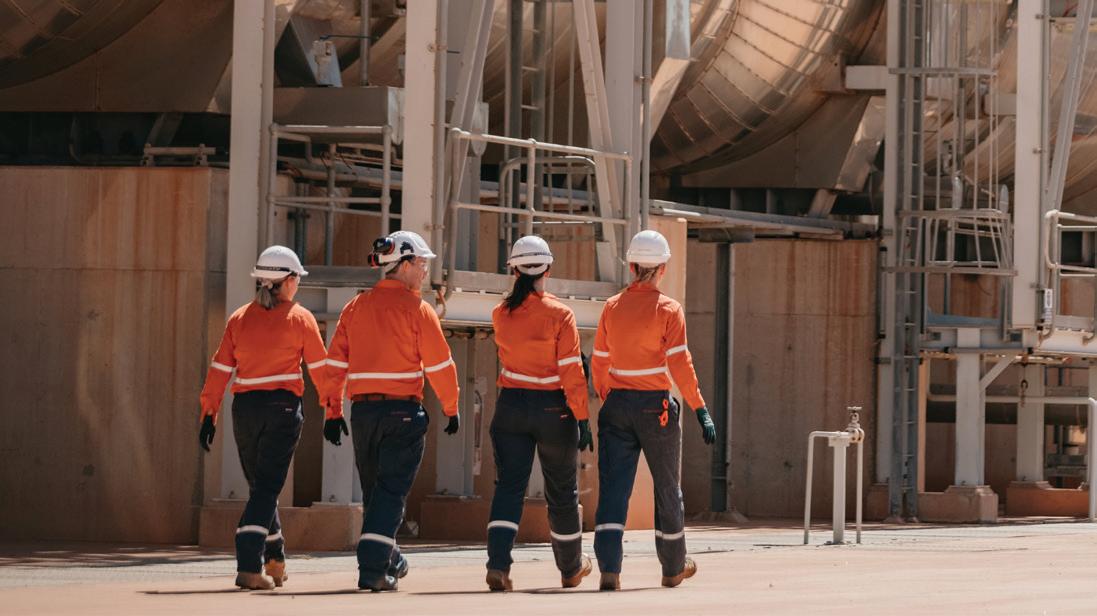
16

Making dreams a reality takes work; something that CSIRO’s Dr Suneeti Purohit knows more than most. Here, Dr Purohit shares the barriers she overcame as she followed her ambitions halfway around the world to where she is now – working for Australia’s national science organisation and the winner of the 2023 Exceptional Woman in Victorian Resources award.
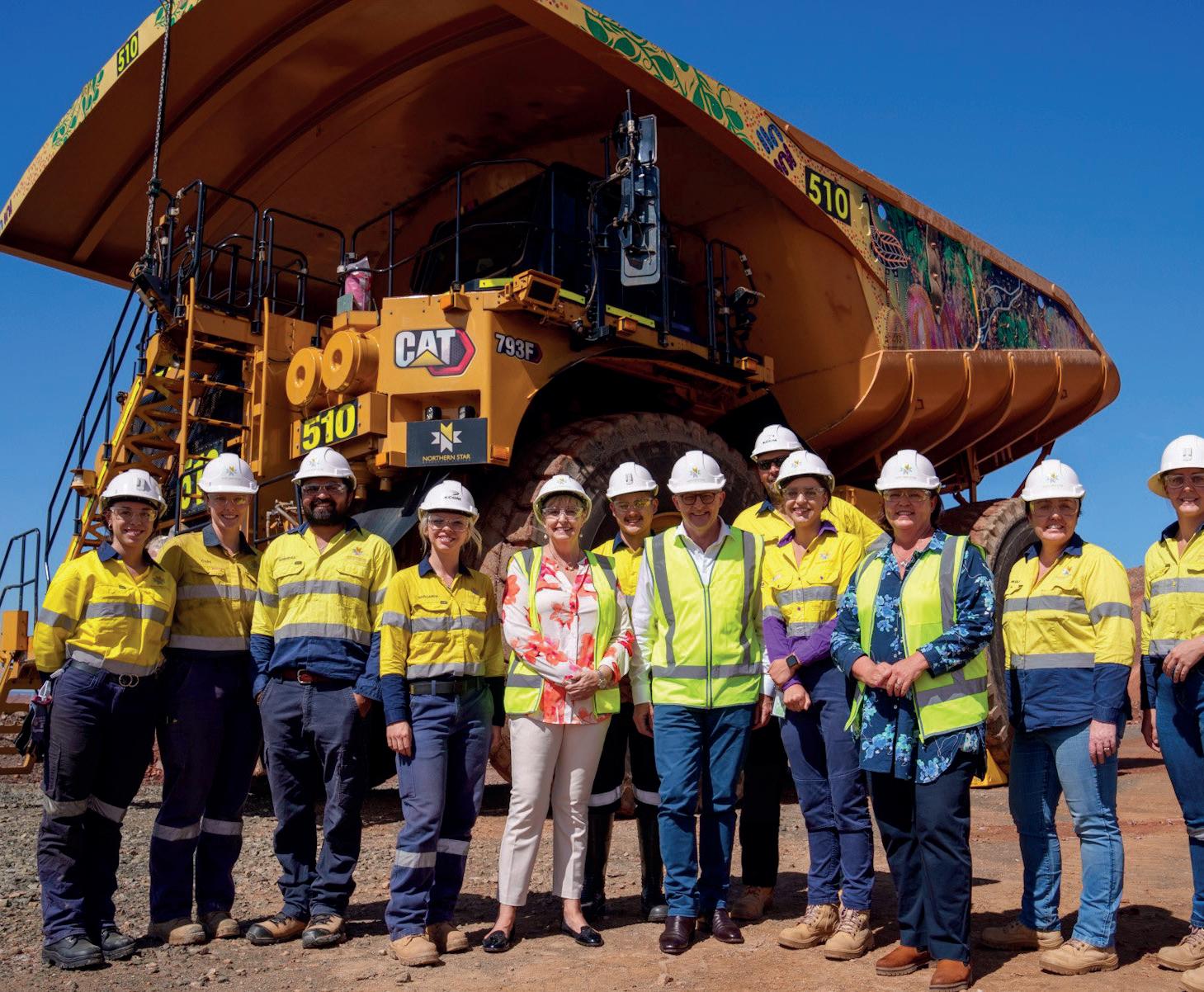
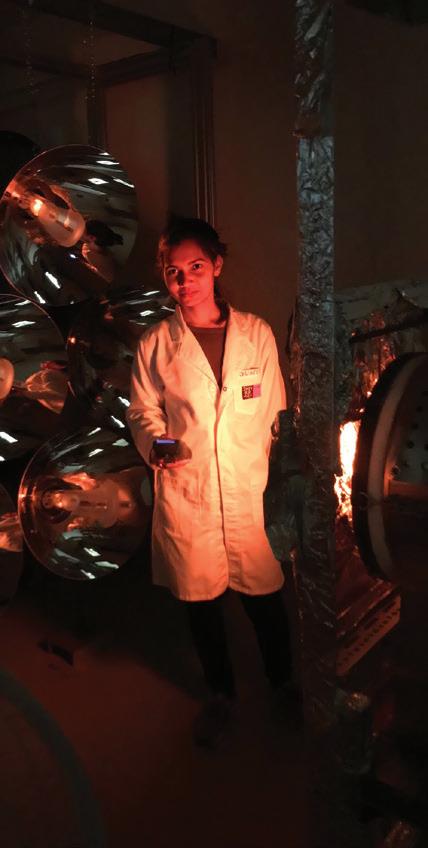




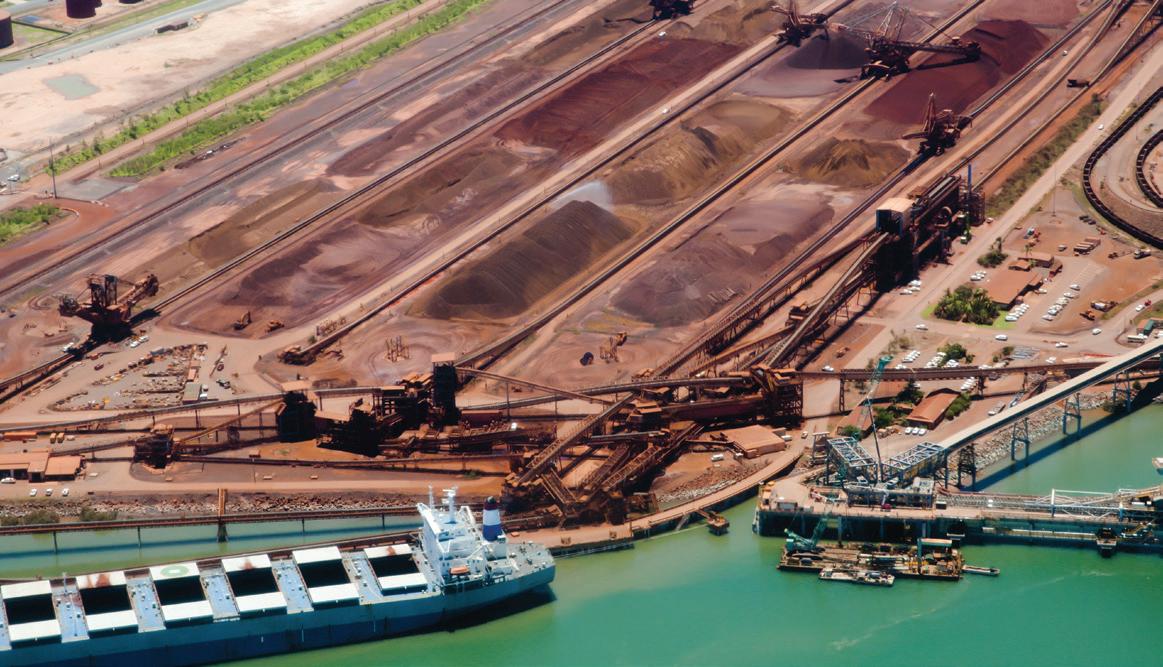

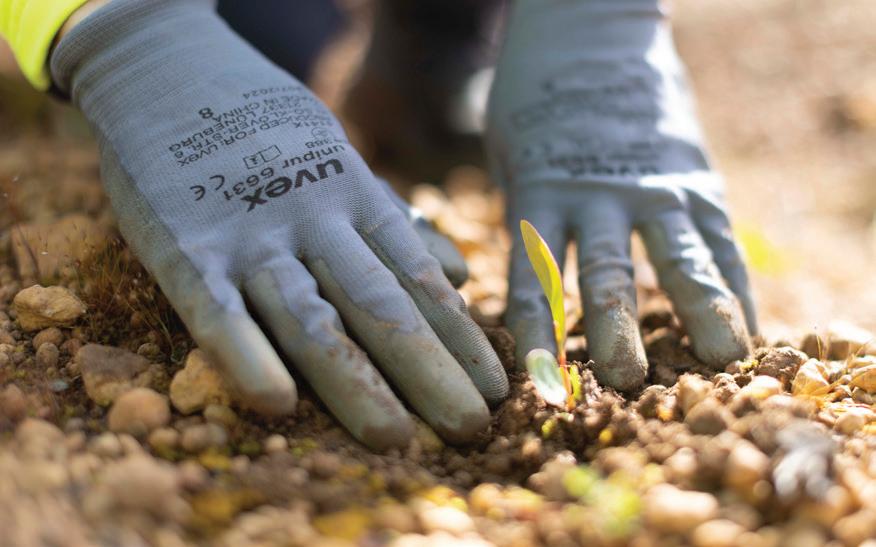
BHP has awarded an $8 million contract to an Indigenous Australianowned car hire company that will offer its employees an alternative for short or long-term vehicle hire across its Western Australian and South Australian operations.

Cedrent Enterprises has been awarded the three-year contract, and will provide light vehicle hire services for BHP employees at Olympic Dam in South Australia, and across the company’s Newman and Port Hedland operations in the Pilbara.
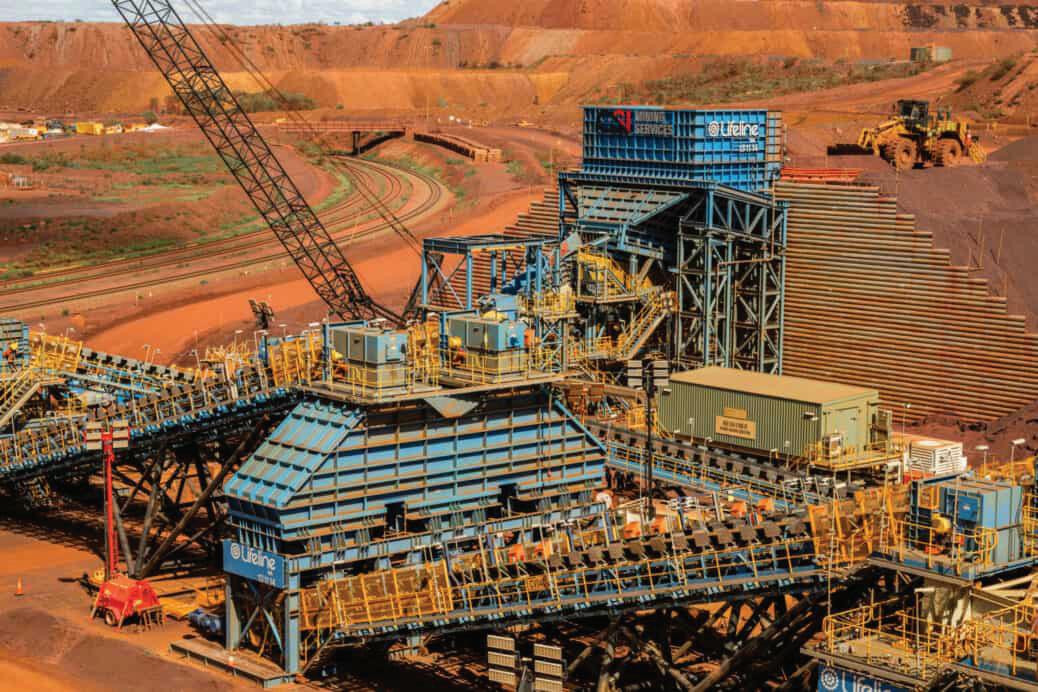
Cedrent General Manager, Dan Walmsley, said the contract was a significant milestone for the company.
“This collaboration with BHP not only underscores our shared commitment to social responsibility and sustainable development but also fuels our
efforts to create opportunities within the First Nations business sector,” Mr Walmsley said.
“We’re also proud to be providing a portion of our profits to Far West Coast Aboriginal Corporation in South Australia, or Yindjibarndi Aboriginal Corporation in Western Australia, which are both devoted to giving back to their communities through programs that upskill youth, support local businesses, and create a growing demand for Indigenous goods and services.”
BHP Head of Global Indigenous Procurement, Chris Cowan, said BHP is committed to doing more to build sustainable, profitable and enduring partnerships with Traditional Owner and Indigenous businesses across its operations.
“By selecting Cedrent’s services when hiring vehicles for work, our people will be supporting a business
Acontractor employee at Mineral Resources’ (MinRes) Onslow Iron project has died in a fatal incident on site.
The incident occurred at the Ken’s Bore site at approximately 4pm on 12 June 2023.
The victim was identified as father of two, Kieren McDowall.
Mr McDowall was a contractor for AAA Asphalt Surfaces at the time of his death. The company’s Managing Director, Frank Italiano, spoke to the ABC about the “profound sadness” he felt at losing his colleague.
“I extend my deepest condolences to Kieren's family and friends; in particular his partner Bella, their two young children, his parents Kylie and Craig, brothers Matthew, Jayden and Hamish and extended family," Mr Italiano said.
Following the incident, the Department of Mines, Industry Regulation and Safety (DMIRS) and Western Australian Police were notified and made their way to the site.
MinRes’s Employee Assistance Program service provider and senior leadership from the company were mobilised to site.
that creates opportunities for First Nations people, prioritising Indigenous community engagement, job creation and procurement,” Mr Cowan said.
“It’s the first time an Indigenous-owned business has been awarded a contract of this type with BHP, and we look forward to working together to help empower more Indigenous businesses and communities across Australia.”
In June 2023, BHP released its sixth Reconciliation Action Plan, which includes a target of achieving $1.5 billion of spending for procurement from Aboriginal and Torres Strait Islander and Traditional Owner businesses across all Australian assets by 30 June 2027. Up to May 2023, BHP shared partnerships with 192 Indigenous businesses around the country, including 89 Traditional Owner businesses.
MinRes Managing Director, Chris Ellison, expressed the company’s heartfelt condolences to the deceased’s family, friends and colleagues.
“We are shocked and deeply saddened by this tragedy. Our thoughts are with the family, friends and the whole Onslow Iron team, and our focus is on supporting them during this difficult time,” Mr Ellison said.
Site operations were temporarily suspended following the incident.
The Mining Journal Intelligence’s (MJI) Project Pipeline Handbook 2023 has announced the top-ranking mining project in all of Australia.
Achieving a score of 89 out of 100, Liontown Resources’ Kathleen Valley Lithium Project was named as the top project in the country and also ranked second in the world, only one point behind the Eskay Creek gold project in Canada, which scored 90.
The Project Pipeline Handbook 2023 assessed a selection of the 50 most promising mining projects worldwide, utilising an objective scoring methodology developed by MJI.
The method involves the collection of 25 key data points from economic studies, ranging from the early scoping stages to the comprehensive feasibility assessments. These data
points are then inputted into a system that calculates a score out of 100. The Handbook assesses projects across 13 metrics, covering six key categories: Economics, Jurisdiction, Confidence, Financeability, Engineering/Metallurgy, and Geology.
The Kathleen Valley Lithium Project received a perfect score out of ten in the Economics and Financeability category, and a score of 9.3 in the Confidence category, based on the project’s Definitive Feasibility Study conducted in 2021.
On track to commence production in mid-2024, the Kathleen Valley Lithium Project is expected to supply approximately 500,000t of six per cent lithium oxide concentrate per annum. Lithium demand is projected to surge in the coming years due to its vital role in the rapidly expanding electric vehicle market.
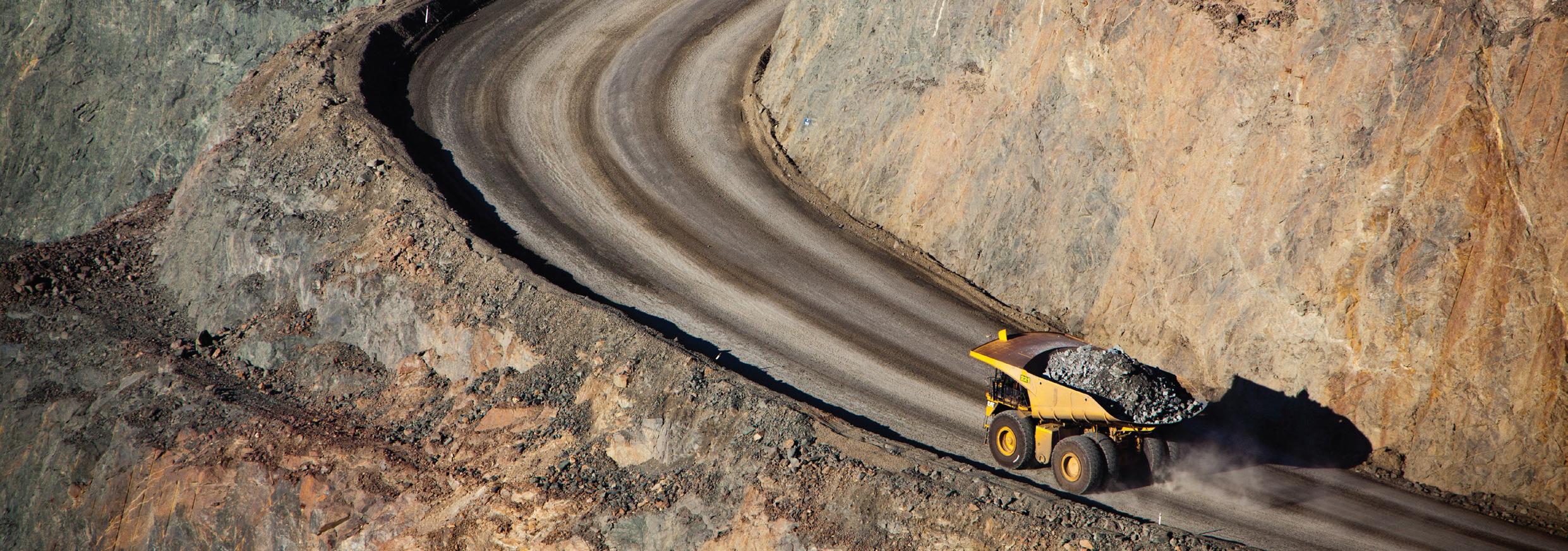
The Northern Territory Government has brought the Mt Bundy Gold Project one step closer with environmental approvals granted for the Rustlers Roost and Quest 29 open-cut mine redevelopment.
This major milestone is a crucial part of the Mt Bundy Gold Project approval process.
Granted Major Project Status in 2022, the Mt Bundy Gold Project proposes to restart three mines approximately 100km south-east of Darwin on the Arnhem Highway.
Proponents, Primary Gold, plan to recommence open cut gold mining in Rustlers Roost and Quest 29, with expansion of all existing open cut pits and the development of two additional new pits.
The third mine, Tom’s Gully, an underground mine, was granted environmental approval in 2020.
Since 2018, the gold ore reserve has increased from one million ounces to three million ounces of gold through exploration and mining studies.
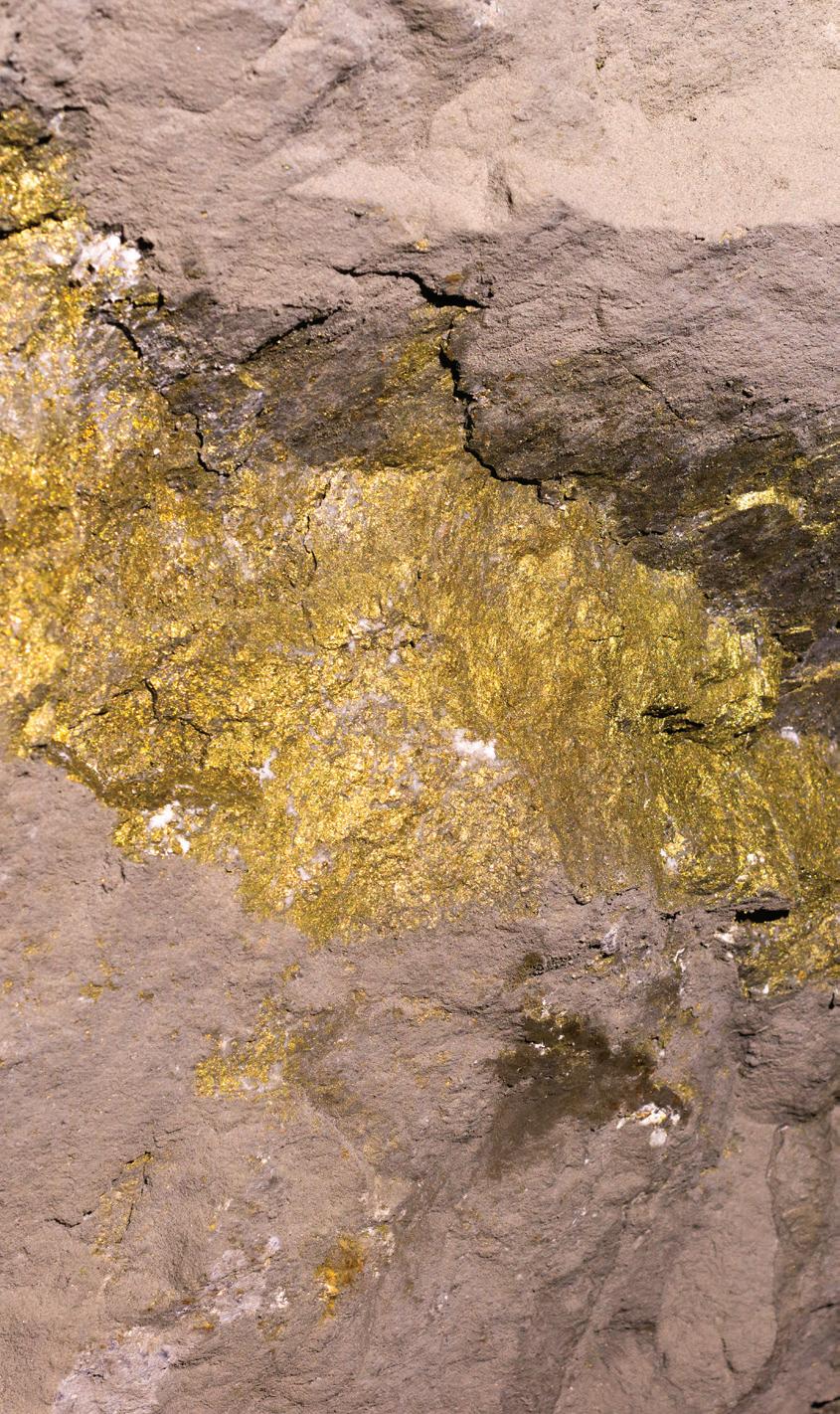
Early construction has begun, with the completion of a new bridge and the commencement of geotechnical drilling.
The company is advancing the Definitive Feasibility Study with Mintrex Engineering, with further construction to take place following its completion over 2023 and 2024.
Once operations commence, the Mt Bundy Gold Project is expected to create 300 full time jobs for ten years.
It is estimated the $412 million project will produce in excess of 135,000oz of gold, on average, each year.
Northern Territory Minister for Mining and Industry, Nicole Manison, said the Mt Bundy Gold Project is great news for local jobs and mining near Darwin, creating hundreds of well-paying jobs for the next decade.
“Gold is needed not just for jewellery and investments, but for the creation of electronics, high tech health care and aerospace, and the Northern Territory has the supply the world needs,” Ms Manison said.
“The Territory Government is delivering more mining projects, strengthening the economy and doing so in an environmentally responsible manner.”
The Federal Government has released the new Critical Minerals Strategy 2023-2030, which sets out a plan to capitalise on Australia’s critical minerals to create more resources jobs and support local and global efforts to achieve net zero emissions.
Federal Minister for Resources and Northern Australia, Madeleine King, has released the new strategy in a bid to make Australia a globally significant producer of raw and processed critical minerals and boost economic opportunities for all Australians, including First Nations people and regional communities.
As one of the first policy decisions under the strategy, the government will target $500 million of new investment into critical minerals projects, via the Northern Australia Infrastructure Facility.
The strategy highlights six focus areas:
♦ Developing strategically important projects, with targeted support
♦ Attracting investment and building international partnerships, to optimise trade and investment settings for priority technologies
♦ First Nations engagement and benefit sharing, to strengthen engagement and partnership with First Nations people and communities, and to improve equity and investment opportunities for First Nations interests
♦ Promoting Australia as a world leader in environmental and social governance (ESG) standards
♦ Unlocking investment in enabling infrastructure and services
♦ Growing a skilled workforce
Independent modelling has found increasing exports of critical minerals and energy-transition minerals could create more than 115,000 new jobs and add $71.2 billion to GDP by 2040.
However, the number of jobs could increase by 262,600, and the increase in GDP could soar to $133.5 billion by 2040 if Australia builds downstream refining and processing capability and secures a greater share of trade and investment.
The strategy will be an enduring framework to guide future government policy decisions to maximise the national benefits of Australia’s internationally significant critical minerals endowments.
The strategy will also establish a process to update the critical minerals list.
Ms King said the strategy makes it clear that Australia can play a crucial role in delivering the processed minerals the world needs for a clean energy future, building on a rich geological endowment and record as a reliable exporter of energy and resources.
“The new Critical Minerals Strategy outlines the enormous opportunity to develop the sector and new downstream industries which will support Australia’s economy and global efforts to lower emissions for decades to come,” Ms King said.
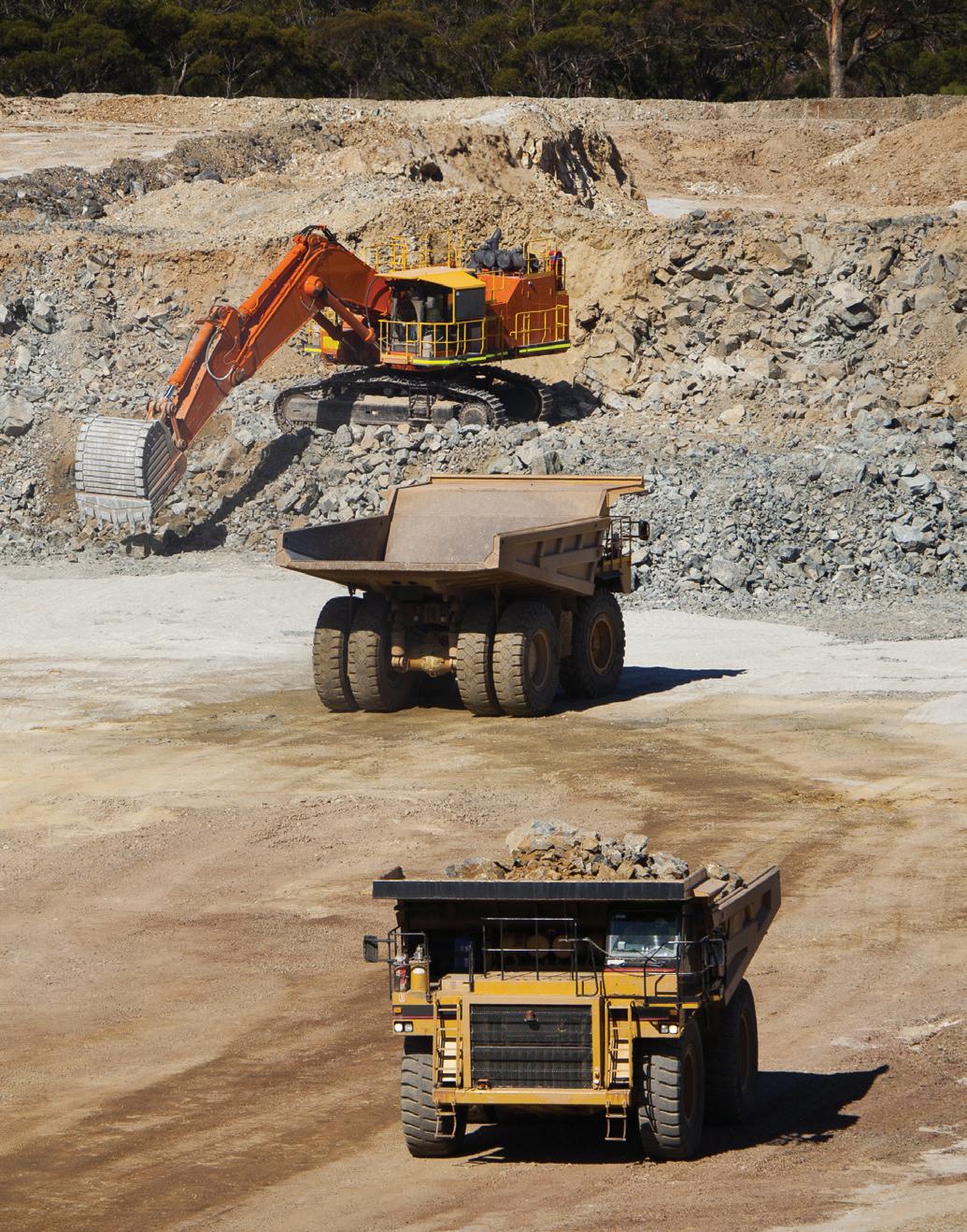
“While the potential is great, so too are the challenges. The strategy makes it clear our natural minerals endowment provides a foot in the door, but we must do more to create Australian jobs and capitalise on this unique opportunity.”
The decision builds on the government’s wider suite of policies to support the sector, including finance through the Critical Minerals Facility and National Reconstruction Fund, investments in research and development, and grants to help develop early to mid-stage critical minerals projects.
Australia is the world’s largest producer of lithium, the third largest producer of cobalt and fourth largest producer of rare earths. Australia also produces significant amounts of metals such as aluminium, nickel and copper, which combined with critical minerals, are crucial for low-emissions technology such as electric vehicles, batteries, solar panels and wind turbines. Critical minerals are also crucial components for medical technologies and defence applications.
International competition for investment in critical minerals is already intense, with incentives announced by the US and European Union designed to boost investment to diversify supply chains and to decarbonise their economies.
The Federal Government is also working with industry and international partners to help Australian projects link to emerging markets in the US, the UK, Japan, Korea, India, the EU and its member states.
The strategy will involve collaboration with state and territory governments, and will work alongside the government’s key agenda items including:
♦ Australia’s Critical Technology Statement
♦ National Reconstruction Fund
♦ Australian Made Battery Plan
♦ National Electric Vehicle Strategy
♦ Australia's National Hydrogen Strategy
♦ Powering Australia Plan
♦ First Nations Clean Energy Strategy
The new Critical Minerals Strategy 2023-2030 is available on the Critical Minerals website.
The Board of Australian lithium miner Core Lithium, announced the appointment of its new Non-Executive Director. Andrea Hall has stepped into the role, bringing her experience as a NonExecutive Director and member of the Board of ASX-listed Evolution Mining.

Ms Hall’s career has spanned more than 35 years in the financial services industry, including seven years as a Risk Consulting Partner at KPMG. Ms Hall brings a strong skill set to the Board that includes risk management, finance, external and internal audit and corporate and operational governance.
Core Lithium Non-Executive Chair, Greg English, welcomed Ms Hall to the Core Lithium Board.
“Andrea is a highly respected industry leader with a distinguished career as a company director and consultant.”
The company also welcomed two new Executive General Managers (EGMs) to its executive team, with Pierre Malan moving into the role of EGM of Development and Exploration, and Paul Benjamin stepping up as EGM of Commercial and Marketing.
Newmont Corporation also welcomed changes in its leadership team, with the appointment of its new Executive Vice President and Chief Financial Officer.
Karyn Ovelmen moved into the role, bringing extensive global leadership experience with her. Ms Ovelmen previously held Chief Financial Officer roles for highly complex and capitalintensive companies in the resource and energy sectors.
Newmont President and Chief Executive Officer, Tom Palmer, said, “Ms Ovelmen brings a breadth of global experience operating in complex financial environments and has proven leadership and commercial capabilities to enable success during periods of transformation.
“Ms Ovelmen is uniquely qualified to ensure our financial approach underpins the safe delivery of long term value to all our stakeholders through sustainable and responsible mining.”
Fortescue Metals Group announced the appointment of its new Chief Financial Officer, with Christine Morris commencing in the role from early July 2023, bringing with her more than 30 years’ experience across energy, media and telecoms, manufacturing and technology.
Ms Morris said she was delighted to be joining Fortescue and is dedicated to delivering the company mission of eliminating emissions profitably and leading heavy industry globally to decarbonise.
“My focus will be on continuing to provide exceptional value for Fortescue shareholders and maintaining and growing the strength of our iron ore and emerging critical minerals business,” Ms Morris said.
“I look forward to working with the company’s exceptional leadership team to continue Fortescue’s strong track record of outstanding financial performance and disciplined capital management.”
Although yet to officially leave their positions, Queensland Resources Council’s (QRC) Chief Executive, Ian Macfarlane, and Rio Tinto’s Chief Executive, Aluminium, Ivan Vella, have announced their intention to step down from their respective positions at the end of 2023.
Mr Macfarlane said the QRC was in very good shape, supported by a strong policy team and board, and its ongoing efforts to increase awareness about the critical importance of the resources sector to the Queensland economy continues to gain momentum.
At Rio Tinto, Mr Vella continues to lead Aluminium while the process to identify his successor is undertaken, but stepped down from the group’s executive committee immediately following his announcement.
Your industry personnel roundup – here we cover who’s moved where, which boardrooms have been shaken-up and the new leaders making big decisions in organisations across the industry.


Stainless steel plays a vital role in numerous Australian industries – including mining –thanks to its remarkable corrosion-resistance and durability properties. However, not all stainless steel is created equal. Quality can vary significantly based on the raw materials used and the manufacturing process involved. As such, understanding the quality of stainless steel in the Australian mining industry is of the utmost importance.
One region that stands out for producing highquality stainless steel is Europe. European stainless steel is highly regarded due to its exceptional quality standards, which are achieved using refined steel, pure nickel and chromium. This ensures a consistent blend of materials, resulting in a product of superior quality. In contrast, other regions rely on lower-quality nickel-pig-iron, which can lead to issues like corrosion and spotting. As such, it is evident that the origin and composition of the stainless steel used can have a significant impact on its performance and longevity.
Identifying the true origin of stainless steel products can be challenging, particularly when misleading marketing tactics are employed. For instance, products bearing the label ‘Designed in Europe’ may give the impression of European quality, when in reality, they might be manufactured in regions known for subpar raw materials and less rigorous manufacturing processes. This deceptive messaging can potentially expose consumers to risks and compromise the integrity of their projects.
To ensure that you are truly receiving the quality you are paying for and expect, Ibex Australia recommends consumers request and examine original mill certificates. These certificates provide crucial information about the manufacturing location, chemical composition, and traceability of the raw materials used. Genuine mill certificates clearly indicate the name of the mill, material heat number, material grade, specific heat treatment, material dimensions and certified mill signature. It is important to be aware that fake mill certificates without the aforementioned information have been increasingly prevalent in the Australian market.
In this context, Ibex Australia distinguishes itself by dedicating significant resources to sourcing the best stainless steel products. With extensive technical knowledge and expertise, Ibex Australia ensures that the stainless steel it offers meets the highest quality standards. Ibex Australia understands the critical role of stainless steel in the mining industry and strives to provide reliable and durable solutions. Ibex Australia's commitment to quality is supported by a comprehensive range of press fit products, specifically designed to suit various applications in the mining industry.
By reaching out to Ibex Australia, you can benefit from extensive technical skills and support, ensuring that the stainless steel products you choose are of exceptional quality and meet your specific requirements. Ibex Australia's dedication to sourcing superior products and extensive technical knowledge make them a trusted partner for your stainless steel needs in the mining industry.
“No welding, low labour costs, easy installation and reliable results make the product a ‘no-brainer’.”
- Installation Manager at Citic Pacific MiningTo learn more about Ibex Australia and their range of high-quality press fit products and fittings, and their commitment to excellence, head to www.ibexaustralia.com.au
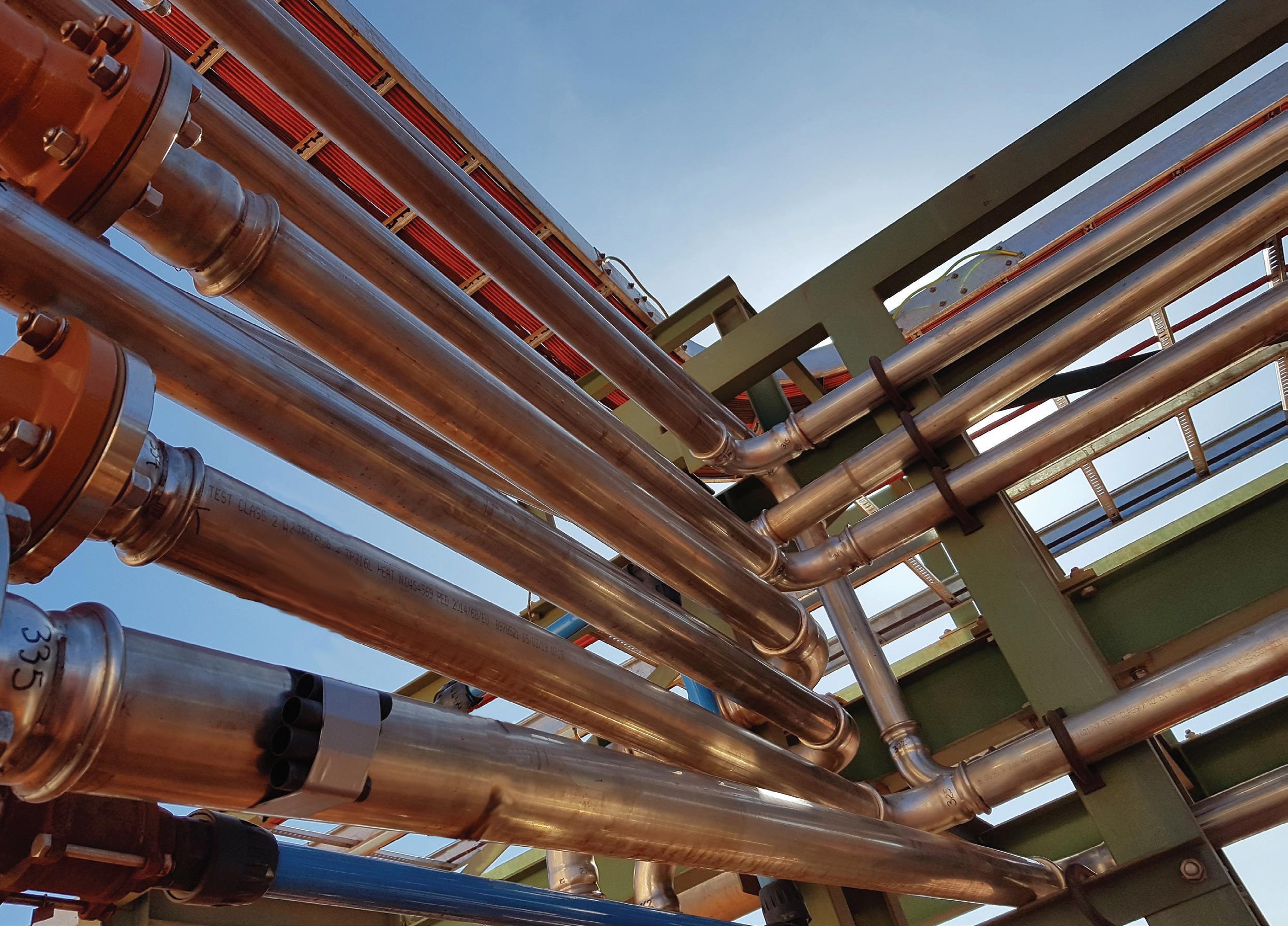
At Ibex Australia, we know that efficiency is crucial in the mining industry. That's why we offer fast, clean, and safe industrial piping systems that eliminate hot works and passivation.
With our commitment to quality, timely delivery, and responsive customer service, Ibex is your trusted partner in delivering exceptional results and boosting your bottom line.
Experience the difference with Ibex Australia.

Following her graduation from the University of Newcastle, Kelsie Clarke threw herself into the deep end, packing up her life in New South Wales and moving across the country to take a job in Western Australia. Kelsie sat down to chat with us about how that decision led her to a role in leadership, a visit to Antarctica and being awarded the 2023 Chamber of Minerals and Energy’s (CME) Outstanding Young Woman in Resources Award.

How did you get into your chosen field? Was it something you were always interested in pursuing?
I grew up in Newcastle, New South Wales and attended a selective performing arts school. I was great at STEM subjects, however I also loved acting and even directed a few plays. Some of my teachers suggested that I attend science and engineering events, which is where I met a chemical engineer who offered me work experience at the CSIRO, which lit the fire.
Up until this point, I didn’t know one single engineer. I decided to study civil engineering at the University of Newcastle, and the rest was history.
You started your career at Woodside as a graduate civil engineer. Can you tell me about the various roles you’ve had within the company that have led you to where you are now?
After graduating, I rejected chances to work closer to home to take a position in Perth. My only previous visit to Western Australia had been for the interview at Woodside, however I knew that if I didn’t make a leap of faith and go outside my comfort zone then, I never would.

I worked in various civil and structural engineering roles during the graduate program, including offshore and subsea, before
transferring to Karratha as a Structural System Engineer, where I was responsible for structural integrity management at the Karratha Gas Plant (KGP). I moved into a Project Engineer role, managing external engineering resources and projects at KGP.

I later became an Engineering Team Lead, leading a team of project engineers, project services and data scientists, and then a Maintenance Engineering Team Lead, leading a team of structural, rotating and mechanical engineers and overseeing end-to-end support for maintenance activities and strategies at KGP. I was also the Engineering Lead for a number of major shutdown maintenance activities.
Following my move back to Perth in 2022, I moved into a Business Adviser role, before moving into my current role as Business Readiness Lead for the SAP/4HANA project implementation at Woodside.
Outside of work you participated in a three-week expedition to Antarctica with Homeward Bound. Can you tell me what you learned from that experience that you try to bring to your job and your role as a mentor for women in STEM?
The remoteness of Antarctica generates a level of learning and reflection not experienced anywhere else in the world. What I have learnt from that experience is a deep sense of resilience, to be authentic, and to foster a place of trust with those around you. I have embedded these principles into the way I work, and in the advice that I provide to others, leading by example with these foundational skills.
You’ve been involved with Engineers Without Borders (EWB) for many years now. What is it about EWB’s vision that resonates with you?
EWB believes in a world where technology benefits all.
Engineering has improved the lives of people throughout the world, however there are still many people who do not have access to things that are taken for granted in Perth. Access to clean water is engineering, access to healthy fuels for cooking is engineering – it is woven through society in every way.
I became involved with EWB in my first year of university and have been in a range of roles, from supporting Sanitation projects and earthquake research, to being Chapter President of Western Australia. I am now Deputy Chair of the Board of EWB.
Engineers can change lives, and I believe that if this was more widely appreciated through society, we would have a larger pool of people entering the profession.
What do you consider to be the biggest challenge you’ve encountered in your career to date?
Becoming a leader at a young age has been the most rewarding and challenging experience of my career. Working with good and intelligent people is enriching, yet there are hard conversations and decisions that need to be made. Acting with integrity and addressing this front on is vital to leadership.
Through leading teams, I have experienced so much growth and a deep sense of reward, knowing that my leaders are there to back me and believe in me. What I have learnt and my advice to others pursuing a leadership pathway is to maintain credibility in everything that you do, listen and trust your team and hold empathy towards others, which is incredibly important.
Being in a leadership role is so rewarding and has provided me with some of the best moments in my career so far.
You recently won CME’s Outstanding Young Woman in Resources Award. What does winning the award mean to you?

I am incredibly proud and humbled to have won this award and to represent a strong cohort of young women in the WA resources and energy sector. To be able to stand up and call to action my peers and industry leaders to actively back young women in this industry at the stellar CME Women in Resources awards was an experience I will never forget.
I always strive to leave an easier path for younger women coming after me in this industry and I hope this award will showcase what is possible to others.
Winning this award has put you in a position where other young women in the industry can look up to you as a mentor – what are you hoping to convey to them?
My encouragement to other young women in the industry is to be authentic, be bold and back yourself. As the world transitions to a lower carbon future there will be so many new opportunities in resources that emerge. This industry presents an existing opportunity to be at the forefront of that change, and the equal representation of women will ensure a fair and just transition for communities around the world. It won’t be easy, but unless you push yourself, you will never realise your full potential. Think authentic, think bold and be your own advocate.
Can you give us some insight into your experience working in such a male-dominated industry? What are some of the obstacles you have had to overcome?
In male heavy teams, the tiny micro exclusions that I have experienced have been much more challenging to overcome than the typical, more obvious forms of gender bias. Like myself, many women in this industry have experienced the more obvious forms of bias and exclusions. But it’s the things that are not so obvious that can really dig under your skin. These are hard to call out and challenging to resolve, such as someone talking over the top of you or moulding yourself to fit in with the culture.
My approach has always been to focus on forming strong relationships with my peers, seeking to understand other perspectives, and focusing on delivering good outcomes for the business.
If we want an inclusive culture where we retain valuable people, we all need to work together to counteract these subtle behaviours, otherwise we will erode over time the progress that we have worked so hard for.
There’s work being done to diversify the workforce but in your opinion, what still needs to be done in the way of gender diversity in the industry?
Systemic and evidence-based structural change at the school, university and workplace level.
Gender diversity is improving, however, the mix of gender is not where it needs to be to be sustainable. I have seen incredible improvements to gender balance over my career and I have also seen gender balance go the opposite way with a few people moves or resignations.
The site engineering lead team that I was part of when I worked in Karratha was all female, bar one colleague and our boss. This was an incredible, delivery focused team that achieved a lot of value. The environment that we fostered for the wider engineering team is a highlight of my career so far and I now know what it feels to be part of a high performing team. Only a year later, I was working in a male dominated team (who were great colleagues). The numbers and distribution of women in operational, technical and leadership roles is not yet at a critical mass but I believe that this can absolutely be turned around.
We should not lose sight of how far the industry has come, however, there is still a large gap that needs to be closed to ensure gender balance in the resources industry is achieved and truly sustainable.
What advice would you give to people who are interested in or are in the early stages of their career in your industry?
Change begins at the end of your comfort zone. I have found the greatest opportunities and experiences have come to me by pushing myself to continuously learn and explore the unknown.
This industry is unique in that it gives you the ability to either find the niche you love, or if you enjoy trying new things, there is a lot of flexibility to move around into different roles. There are so many options in front of you right now, and it is only yourself who can decide which pathway to go next.
What do you like to do outside of work? How do you spend your free time?
I’m an avid theatre and ballet goer, I like to run, go to the beach and travel as much as I can with my husband. My time in Karratha gave me a love for camping and the outdoors.
I have a dog and two cats, and over the past year we have embarked on a large renovation at our house, which has kept us very busy.
Although still a male-dominated industry, recent years have seen the number of women in the resources industry slowly but surely rising, including an increase in the participation of Indigenous women. Despite Indigenous women being regarded as the cornerstone of many families and communities, Development Partner Institute (DPI Mining) Executive Director, Florence Drummond, identified the lack of an established platform for these women to share their stories and communicate with other Indigenous women in the industry.
Seeing the lack of connection amongst Indigenous women in the mining and resources sector in Australia prompted Ms Drummond to launch Indigenous Women in Mining and Resources Australia (IWIMRA), which aims to provide a network for Aboriginal and Torres Strait Islander women in the country’s mining and resources sectors.
“IWIMRA formed in 2017 as an organic response to being curious about the participation of Indigenous women in the mining and resources sector in Australia,” Ms Drummond said.
“At that time there was not a lot of social engagement online and, living remotely, we had to think about how we could connect with each other in the most practical way possible.”
The first step to determining the reach of this curiosity was to establish a Facebook group, and as IWIMRA built its capacity as a network and a voice for Indigenous women in the global sector, the creation of a group on LinkedIn was the next step.
“In reflection, the leadership of the incredible women in the team has also shaped this into reality, built with trust in a culturally safe way. I am very proud that IWIMRA is what it is today.”
When IWIMRA first started, Ms Drummond said the organisation needed to consider how to ensure all the efforts
that were being dedicated towards participation created a legacy impact for future generations of Indigenous women.
As well as this, showcasing continued collaboration with industry has always been an important factor for the organisation and, as such, members work closely with industry to build solutions-driven, cross-culture influential relationships in the hopes this will contribute towards a sustainable future.
“Building our capacity, we wanted to align to other efforts that are focused on the betterment of Indigenous peoples in Australia. IWIMRA Indigenous Corporation realigns to what is now the new normal at both a national and global level,” she said.
Initially hoping to benefit Indigenous women in the mining and resources sector, Ms Drummond was determined to spread the idea that Indigenous women's participation and influence in the industry could be utilised to strengthen relations within the Indigenous workforce and to promote retention initiatives.
“The intersectionality of Indigenous women in this specific industry is quite complex,” she said.
“Some of our early conversations reflected the continued impact of racism in the workplace before gender. There have been many studies by specialised academics in this space that have confirmed these echoing stories across a number of mining jurisdictions.
“What IWIMRA does focus on is the importance of language and the use of how we continue to build our narrative. The IWIMRA inaugural conference was a very important space

to collect more in-depth data sets to continue to shape best practice.”
Since its inception, IWIMRA has expanded its reach to include Indigenous women from all over the country.
“As the original scope of IWIMRA continues to grow, it has demanded the organisation build its rigidity and team.
“The transition into IWIMRA Indigenous Corporation will ensure the participation of IWIMRA is carried into the energy transition with the strength and agility it has built since inception. It will continue to serve the network as a culturallysafe space for Indigenous women to connect, to be informed and to also inform best practice as a vital component of social performance in the industry.”
Through members’ experiences and narratives of Indigenous intersectionality, IWIMRA strives to facilitate the visibility, voice and quality participation of Indigenous women. Despite being based in Perth, IWIMRA’s membership now encompasses more than 2,000 women across the Australian minerals sector.

“IWIMRA continues to build its membership and with the success of the inaugural conference held in Perth on 15-16 June, it has a truly stable membership base that is ready to meet the needs of the sector, uphold the values of the community and to ensure future generations know that they belong in this sector.”
Indigenous women across the globe have been identified as most vulnerable in their opportunities to innovate with fast-paced society. As such, IWIMRA and the platform it offers Indigenous women in Australia has attracted attention on a global scale.

“Over the past years the IWIMRA conversation has travelled to many continents across the globe in growing its global reach to other Indigenous women and rights holders in the minerals sector,” Ms Drummond said.
“I believe this will only continue to be realised as IWIMRA matures as a space for contextual conversations that matter the most to us.”
The growth of the organisation and its platform was on full display at the inaugural IWIMRA Conference.
“The inaugural IWIMRA conference was a moment of our vision coming to life. We invited 150 of our IWIMRA membership to join us for the two-day event.
“Our aim for the conference was to ensure that we extended the invitation to women who would not usually be attending professional development conferences for many different reasons. It has always been important to IWIMRA that we make sure no one is left behind.
“Our IWIMRA network is represented by many women who are at the grassroots level – women who are operators, live in communities and share a similar lived experience like us.
“The conference brought us all together, where we are now convinced that we are no longer alone. It was an incredible experience for us all,” Ms Drummond said.
The conference hosted a collection of speakers who shared their experiences and journey in the resources sector. Ms Drummond said the speakers all “honoured the three elements that we always make time for: the past, the present and the future”.
The conference also hosted a panel of women from around the globe, with the organisation’s WIM sisters from the UK video calling in to share their story. As well as this, a panel of Indigenous male leaders were also welcomed as a demonstration of IWIMRA’s commitment to working as a community for its future participation and success.
“There were so many more connections and outcomes that we accomplished on a personal and professional level for all of our delegates and we look forward to raising the bar for our conference in 2024,” Ms Drummond said.
IWIMRA’s members continue to strive to widen the reach of their platform in the resources industry through participation in other industry conferences, including the International Mining and Resources Conference (IMARC).
At the 2022 IMARC event, IWIMRA invited attendees to participate in the creation of the 2022 IMARC official prints, which are available for sale on IWIMRA’s website.
“The IWIMRA and Bunya Design initiative at IMARC 2022 was one of the most impressionable initiatives that connected people from many walks of life and many different nationalities to connect through art.
“The three-piece set, titled Past, Present and Future, was created to reflect how we viewed our participation in the industry and most importantly how working together can create an even better future.
“There will be continued efforts to create interactive spaces for conversations – this has been an element of IWIMRA that has really shone across the globe. We are very proud of what we have created.”
Making dreams a reality takes work; something that CSIRO’s Dr Suneeti Purohit knows more than most. Here, Dr Purohit shares the barriers she overcame as she followed her ambitions halfway around the world to where she is now – working for Australia’s national science organisation and the winner of the 2023 Exceptional Woman in Victorian Resources award.
When asked to pinpoint where her interest in science came from, Dr Purohit can trace back to a conversation she had when she was nine years old.
“One morning I was looking at my reflection in a spoon while eating my breakfast. My father noticed and pointed me towards a rock. He said that the shiny spoon I was eating with was made from a rock like that.
“As a child I was very surprised and interested to know how they made it. That moment drove me to study science.”
She wasn’t, however, entirely sure which path she would pursue in the future, with her aspirations shifting from wanting to be a scientist, to occasionally desiring a career as a teacher, and even dreaming of becoming an astronaut.
“But one thing was certain, I wanted to study at top institutes of India,” she said.
Dr Purohit was born and raised in a rural village of India, named Kaudola, in the district of Kalahandi, and it was in that village where she completed her primary and high school education.
“My father – being a teacher – understood the importance of education and constantly encouraged me to study and participate in all types of academic competitions like debate, essay writing and even painting.”
It was when she started winning prizes in these competitions that her confidence was boosted and she became even more eager to learn.
“It ignited a strong desire in me to keep expanding my knowledge and continue my education.”
After graduating high school at the age of 15, Dr Purohit enrolled in a local college. She found, however, the education quality there to be poor and so sought to study at a better school outside her district.

“In those years, my family was not financially sound enough to afford the tuition and hostel fees. After about two months, my father managed to get a bank loan to support my decision, and I got admission to a private women's college.”
This experience was Dr Purohit’s first time living away from home and the first months were tough, especially with the language difficulties.
“Until high school, I had mostly spoken our local dialect, which is different from Odia. While I could read and write in Odia and English, I wasn't fluent in speaking. With time, I improved my skills and got better at studying. Eventually I became the bestperforming student at the women’s college in the state board examination in 2007,” Dr Purohit said.
The idea of studying metallurgy came to her during a visit from the women’s college Chairman while she was completing her higher-secondary education. The Chairman mentioned his background in metallurgy and Dr Purohit pinpoints that moment as the first time she considered studying metallurgy for her higher education.
In that same year, she qualified for the Odisha Joint Entrance Examination and started an undergraduate course in Metallurgical and Materials Engineering at a prestigious state government institute, Indira Gandhi Institute of Technology.
Following the undergraduate course, she wanted to pursue her master’s at one of India’s top-tier institutions, clearing the Graduate Aptitude Test in Engineering examination in her first attempt and securing admission into the Indian Institute of Technology (IIT) Kharagpur.
Deutscher Akademischer Austauschdienst (DAAD) scholarship and conducted my master’s research work at Karlsruhe Institute of Technology in Germany.”
Purohit worked for three years in the academic profession in Metallurgical and Materials Engineering. In 2016, after deciding to pursue a PhD, Dr Purohit was given the opportunity to research on her topic of interest at Melbourne’s Swinburne University of Technology and has been working at CSIRO in the same field since the completion of her PhD.

Dr Purohit is currently a member of CSIRO's Mineral Resources business unit, specifically working within the green-steel group.
“My past and current research work is primarily related to lowering the carbon footprint from the steelmaking value chain. I completed my PhD from Swinburne University of Technology, during which I developed an innovative low-temperature iron ore agglomeration technology, called Lime Magnetite Pellet (LMP) Process.”
Dr Purohit explained that the process has the potential to lower emissions from the predominant ironmaking method – the blast furnace – by up to 18 per cent without the use of expensive fuels like hydrogen gas. Additionally, the process works at lower temperatures, which could facilitate the effective use of renewable energy sources like solar power or green-H2 gas in the future.
“This process can use Australia’s vastly under-utilised magnetite reserves as well as lower-grade Pilbara-type iron ores. Australia, being one of the world's largest exporters of iron ore, could greatly benefit from this technology by exporting high-quality LMPs while also reducing emissions.”
“I have also worked on a project that explores using concentrated solar energy for high-temperature processing of iron ores, like iron ore agglomeration and ironmaking. This research is important for Australia because the country has an abundance of sunshine directly on the iron ore mining sites.”
Dr Purohit has also been part of projects with various iron ore and steelmaking industries – the Heavy Industry Lowcarbon Transition Cooperative Research Centre as well as the Department of Industry, Science, Energy and Resources (DISER). In these projects she focused on modelling emissions to assess the overall carbon dioxide emissions in the steelmaking process and evaluating the impact of lower-quality iron ore on future hydrogen-based steelmaking processes.
“Before choosing to study Metallurgical and Materials Engineering, I had an inkling that there wouldn't be many female students pursuing this course because none of my friends were considering it as an option,” Dr Purohit said.

There were eight female students during her undergraduate studies, and during her master's program, there were a total of four female students among approximately 30 students. Despite being fewer in numbers, Dr Purohit said female students – including herself – never encountered obstacles or mistreatment based on their gender, and in fact were actively encouraged by professors to participate in industry tours, seminars and conferences.
“The first time I encountered obstacles as a female metallurgist was when I was seeking employment in the steel industry. After completing my bachelor’s degree, I appeared for an interview for three Indian steel companies, and faced rejection.”
“In one interview, I was told to be underweight and therefore deemed unsuitable for working in the production line.
“Among my entire batch, only two female students were chosen for industry jobs, while most male students secured positions right after finishing their undergraduate studies.”
Seeking employment after completing her master’s degree exposed another challenge. While she was studying in Germany Dr Purohit missed out on the campus placement opportunities and had to resort to applying for jobs through online platforms.
While she wasn’t hearing back from the industry, she found that academic institutions consistently responded to her applications. This led Dr Purohit to pursue a career in academia.
“Over the course of my career, spanning from 2014 to the present, I have had the opportunity to work in a total of five academic institutions and research organisations in both India and Australia. Throughout this journey, I am grateful to say that I have never encountered any form of bias or criticism solely because I am a woman.
“In each of these professional environments, I have been treated with respect and fairness, regardless of my gender. I have received tremendous support and guidance from my male colleagues which has advanced my career and inspired me to push my limits.
“I consider myself very fortunate to have met and worked with such wonderful people.”
“Winning the Exceptional Woman in Victorian Resources award holds great significance to me. It is an incredible honour and validation to my hard work and contributions in the resources industry.”
Receiving an award and the recognition that comes with it is not something Dr Purohit ever expected or sought throughout her career in metallurgy. The journey she embarked on in her chosen field was driven by passion and curiosity and receiving honours is incredibly humbling for her.
“This award serves as a reminder of the challenges I faced and the assistance I received throughout my journey from Kalahandi to Melbourne. It signifies not only my personal achievement but also the success of my parents, teachers, and all those who believed in me. Moreover, it serves as inspiration for young girls who look up to me.
“As I reflect on my journey from a rural village in India to one of the most liveable cities in the world, I am reminded of the invaluable lessons it has taught me. Along this journey, I have experienced both triumphs and setbacks. There have been moments of pure joy, where I felt invincible and accomplished, as well as moments of demotivation with self-doubts and obstacles hindering my progress. I am incredibly grateful for the support of my family and teachers, who have guided me towards success.”
Dr Purohit’s goal is to extend this support to other young women who may need guidance, and inspire them to embrace their passions and view obstacles as opportunities for personal growth.
“I want to encourage them to pursue careers and fields of study that may traditionally be seen as male-dominated,” Dr Purohit said.
Using her new platform she plans to share her story in the hopes that it resonates with other young women.
“I want to convey the message that our backgrounds should not define our destinies. We can break barriers and carve our own path to success. Many remarkable women have dedicated their lives to challenging stereotypes and making it easier for us to pursue careers in male-dominated industries. Let us not be held back by small obstacles, but instead fearlessly pursue our aspirations.”
“Growing up in a rural village, I found inspiration in the stories of renowned Indian women who had achieved great success. Their accomplishments motivated me to pursue my studies and aspire to make a positive impact in my community.”
Whenever Dr Purohit visits her village in India, she takes the opportunity to visit local schools and colleges to interact with the students, in the hopes that sharing her journey and experiences will ignite a similar sense of determination and ambition in them.

“I firmly believe that my success story, rooted in a similar background, holds the power to influence and inspire other girls, motivating their parents to invest in higher education.”
Dr Purohit, alongside her husband, established a Facebook and Instagram page to share the stories of scientific discoveries in Hindi, with an aim to make science more accessible to young students of India.

Diversity and inclusion have gained significant recognition around the world in recent years which has led to changes in workforce dynamics, resulting in a growing trend of events and celebrations that promote the participation of women and underrepresented minority groups in the workforce.
“It is important to acknowledge that these positive changes were not easily achieved. It required people to speak up and advocate for their rights, and organisations adapting their policies to foster inclusivity.
“I think continuing this momentum is crucial in creating a diverse and inclusive workplace throughout all organisations.
“In my experience, I have encountered countless talented individuals who have not achieved the success they deserve due to limited opportunities. One prominent issue I have noticed is the heavy reliance on references during the hiring process, which disadvantages those without influential connections, particularly individuals from minority groups.”
Dr Purohit said it is important for organisations to recognise these biases and work towards creating a more inclusive and fair hiring process, as well as prioritising the sustainable retention of their diverse workforce.
“By fostering a culture that values and embraces diversity, where all voices are heard and respected, employees can feel a sense of belonging and contribute to their fullest potential.”

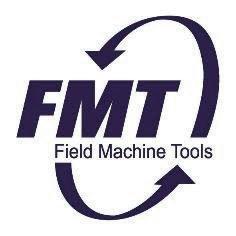
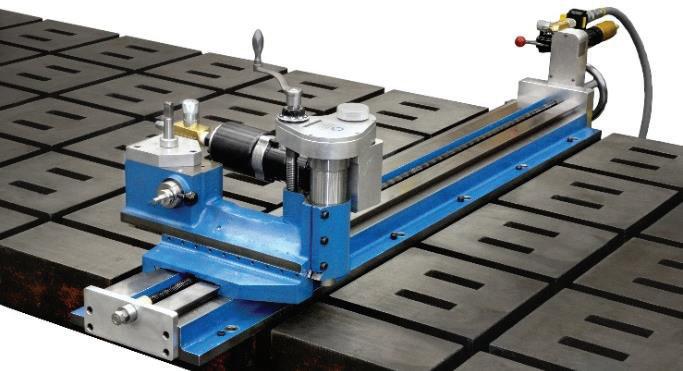
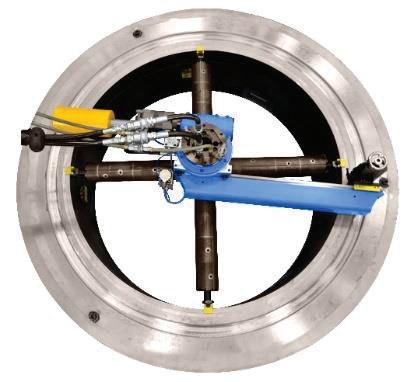
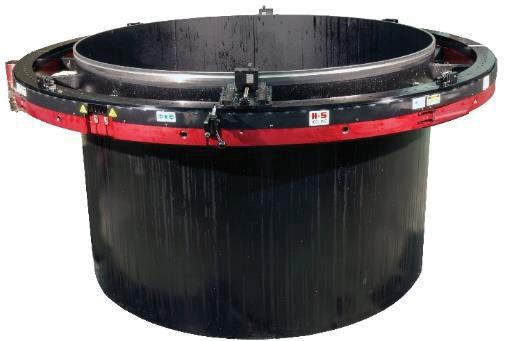
The importance of diversifying the workforce in the resources sector has made its way to the forefront of conversations on how organisations can create more inclusive and welcoming environments for employees. After years of noticing the lack of representation in leadership teams and Boards throughout the resources industry, Founder and Managing Director of consulting firm Premier Strategy and winner of 2023 Victorian Women in Resources’ Gender Diversity Champion Award, Joanna Stevens, decided to take matters into her own hands.
Mining Magazine (MM): Can you tell me a little bit about what you do?
Joanna Stevens (JS): I am the managing director of Premier Strategy; a communications, engagement and advocacy consulting company that specialises in the resources and renewables sectors.
I started Premier Strategy in my bedroom after I was made redundant while five months pregnant with my eldest child. Two decades on, and four children later, Premier Strategy has grown into one of Australia’s leading boutique consulting firms working for a range of clients across the renewable, mining, infrastructure, and manufacturing sectors.
Today, we have close to 30 employees operating across the southeastern coast of Australia with offices in Ballarat, Geelong, Brisbane and Sydney.
In my role, I love that every week is different. Some days I might be walking up the halls of Parliament House, engaging with ministers on a meaningful advocacy campaign, while on other days I could be seated at the kitchen table of a farmer’s property, listening to their feedback on a new wind farm project.
MM: In your words, what does gender diversity mean? Why is it important?
JS: In the resources sector, it’s no secret that women are vastly underrepresented in management positions. And yet research and real-life examples consistently show us that diversity in a workplace not only enhances financial and operating performance, but also boosts productivity and promotes innovation and strategic resilience.

In this fast-paced world, where the challenges of artificial intelligence and climate change are present, we need to tackle these obstacles head-on. We need a workforce that reflects the diversity of the world we live in.
It’s not just about ticking a box; it’s about harnessing the power of creative thinking and using our different perspectives and experiences to solve complex problems.
Achieving gender diversity requires the collective effort and commitment from everyone – not just a select few. We all have a role to play in making gender diversity a reality.
MM: What first brought your attention to the lack of gender diversity across Australian workforces?
JS: I honed my skills initially in a newsroom and then later within the walls of Parliament House – two professional environments heavily dominated by men. It was the nineties, and there were no provisions for flexible work arrangements, paid parental leave, or childcare support. There were also very few female mentors and leaders.
As my career progressed, and my company expanded in the resources sector, I was invited into more meetings, conferences, workshops. I was often the only female in these spaces.
This lack of representation is what inspired my vision: to help resource companies achieve 25 per cent female representation on their boards.
MM: In your opinion, how is the lack of gender diversity different in the mining and resources sector?
JS: Many years ago, I was invited to give strategic advice on how a mining company could attract and retain its female employees. When I looked at the leadership team and the Board, I noticed the complete absence of women. As I began researching, I realised they weren’t alone.
The underrepresentation of women in the mining and resources sector is a systemic issue deeply rooted in cultural norms, perceptions of physical demands and safety risks, a lack of female role models, limited educational pathways, and inadequate work-life balance initiatives.
However, the world has undergone significant changes over the past 20 years. We now have platforms like Zoom, we have more female CEOs, we have millennials and Gen Zs, we have gender quotas, greater access to sponsorships
and scholarships, and we have leadership teams that prioritise inclusivity and diversity.
While there is still much ground to cover, I believe we have the momentum and drive to shatter the glass ceiling.
MM: Why did you personally begin advocating for gender diversity? What are some of the ways you’re working to increase gender diversity?
JS: My drive for greater gender diversity stemmed from sheer frustration. I was tired of being the only female presenting to a Board or sitting in a minister’s office.
I wanted to see more women be at the helm, leading me on the tours of multimillion-dollar infrastructure projects, or running me through the groundbreaking renewable technologies. I wanted to see more women donning high-vis and hardhats!

But to talk the talk, you must walk the walk, which meant I had to look at my own company.
Today, I am proud to say I have created a workplace that is flexible, outcomebased, and breaks many traditional corporate rules – rules such as a workday is nine to five, a workweek is Monday to Friday, and a workplace is in an office.
As a result, Premier Strategy has become an attractive option for many women who prefer working for a boutique, regional business over a large corporation. My colleagues appreciate the freedom to balance the demands of household and family life while knowing they have the trust and support of their team.
In addition to the flexibility, we have also introduced a ‘buddy’ program where we pair our junior employees with experienced mentors. This initiative provides employees with opportunities for professional development, skillbuilding, and guidance.
MM: Can you discuss some of the processes organisations can employ to increase the diversity of their workforces?
JS: Practise what you preach – if you truly believe in the importance of gender diversity, you must reflect this in your leadership team and Board.
Invest in your staff. Offer opportunities for leadership development whether it’s through training programs or giving them the chance to take on important responsibilities like speaking at a client networking event, leading a team meeting, delivering a workshop.
Create a workplace that values flexibility. Offer options like remote work, flexible hours, and job-sharing arrangements. Recognise that people have diverse needs and responsibilities outside of work, and flexibility and trust helps them to thrive in both their personal and professional lives.
But above all, create a supportive and inclusive workplace culture. Promote an atmosphere that is respectful, kind and open, where every voice is heard and valued. Treat every team member the same, from the person who stocks the fridge with almond milk to the senior advisor who you turn to on your worst day.
It’s not just about listing your company values on your website, you must live by them.
MM: What more needs to be done to increase gender diversity, particularly in the resources sector?
JS: While progress has been made to increase gender diversity, there is still so much more to be done to achieve meaningful and sustainable change such as encouraging girls to pursue education and careers in STEM fields.
We must continue to challenge the stereotypes and biases that discourage women from entering the resources sector. We must continue to promote positive narratives and stories and highlight women’s achievements and contributions. We must create more mentorship programs, and networking opportunities.
But most importantly, we must improve the leadership opportunities for women. We need to encourage more boards to have gender quotas and more organisations to offer professional pathway programs.
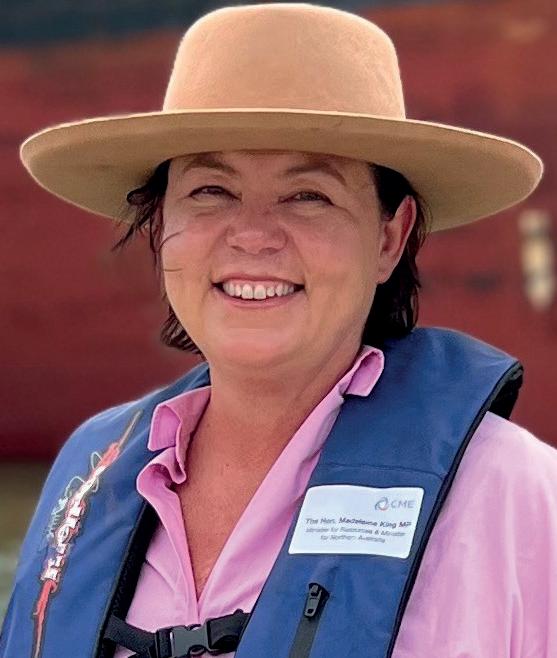

With the Federal Government committed to acting on climate change and seizing the opportunities of the net zero transformation, Ms King said the government acknowledges that the country will not be able to meet net zero targets without the resources sector.
“The road to net zero runs through the Australian resources industry. Resources have been hugely important to our past and are even more important for our present and future.
“Critical minerals like lithium, vanadium, silicon and rare earths are the building blocks of clean energy technologies, such as batteries, solar panels and electric vehicles. Critical minerals are also essential inputs to technologies we take for granted everyday – and that help to power our homes, offices, factories and mobile phones.”
Ms King said that with demand for these minerals predicted to grow significantly over the next three decades, supply chains will be highly concentrated and it is crucial that Australia maintains a stable supply of critical minerals.
“We also know that critical minerals projects face complex challenges, including technical risks due to complex mineralogy and the need for specialised processing, as well as project risks associated with operating in remote areas, significant capital and energy requirements, and the fact many proponents are junior miners.”
Characteristics unique to Australia affect the country’s standing in the world’s critical mineral supply chains.
“Australia is well positioned to cement itself as a global supplier of choice for processed critical minerals to meet rapidly growing global markets and to become a renewable energy superpower.
“Large critical minerals reserves, technical expertise and long track record as a reliable and responsible supplier of resources and energy mean we are well placed to be a globally significant producer of raw and processed critical minerals.
“Australia is the world’s largest producer of lithium, the third largest producer of cobalt and fourth largest producer of rare earths. The country also produces significant amounts of metals such as aluminium, nickel and copper which, combined with critical minerals, are crucial for low-emissions technology such as electric vehicles, batteries, solar panels and wind turbines.
“Importantly, Australia’s mining industry operates to the highest ESG standards. The world demands that the extraction of resources is sustainable, and Australia meets that demand.”
Recent initiatives and funding across Australia have highlighted exploration as the first step to expanding Australia’s critical mineral offerings.
“We know that there is no net zero without resources, but there are no resources without exploration.
“Investment in Australian mineral exploration is at record highs, and the Australian Government is committed to ensuring
that this success continues. Exploration is vital to the global transition to net zero, it is key to unlocking and accelerating resource development at the scale and pace necessary.”
Despite previous exploration success, 80 per cent of Australia remains under-explored – meaning there is huge potential for further resource investment to meet the growing domestic and global demand.
“Current government initiatives target the earliest stages of exploration where there is greater investment uncertainty, and greater financial risk for industry. This includes the government’s $225 million Exploring for the Future (EFTF) program which provides world-leading data on Australia’s mineral, energy and groundwater resource potential in unexplored and underexplored areas of the country; and the $200 million Junior Minerals Exploration Incentive which encourages investment in small minerals exploration companies undertaking greenfield exploration through investor tax credits.”
The Exploring for the Future (EFTF) program provides precompetitive geoscience data to encourage investment in a pipeline of new resource projects today and into the future.
“Geoscientific data is a fundamental building block for future investment in resource exploration and development for a range of minerals and resources, including critical minerals. This is important as it accelerates net zero technologies, and increases the attractiveness of Australia as an investment destination.”
Ms King said that through the program, 419 new tenements have been taken up by 50 companies, encompassing an area of more than 246,000 square kilometres.
“At its core, the value and success of EFTF is underpinned by strong collaborative efforts across local communities, industry, academia and all levels of government.”
Geoscience Australia has recently released its Atlas of Mine Waste, which is an interactive online mapping tool that provides governments, industry and the community with accurate information about Australian mine tailings, waste rock, smelter residues and related mine waste materials.
“This Atlas provides data of sites across the nation that may contain previously overlooked critical minerals – including those used to produce electric vehicles and solar panels which can be an enable for Australia to recycle its riches.”
Ms King said that Australia has a world-class record for pioneering and adopting efficient, lower carbon, higher sustainability, and environmentally responsible practices across its traditional and critical minerals industries.
“Australia has a robust legal system, strong governance and world-leading environmental, social and governance (ESG) credentials.
“We are also working with global partners who are likewise committed to strengthening ESG practices in critical minerals mining and the broader supply chain.
“Critical minerals are essential to the technologies needed to decarbonise the global economy. In this context, the world will need more mining not less to reach its net zero targets.”
Critical minerals is the buzzword on the lips of the mining industry, with a multitude of state and federal funding and initiatives underway to further drive Australia’s critical minerals strategy. Federal Minister for Resources, Madeleine King, spoke to Mining Magazine Editor, Rebecca Todesco, to discuss the recently released Critical Minerals Strategy, and provide a snapshot on how the industry is shaping up in Australia.
Recent geopolitical dynamics around the globe have contributed to stresses within critical minerals value chains, with many countries eager to find secure, reliable supplies of minerals and resources.
In 2022, at the United Nations Biodiversity Conference (COP15), Australia – alongside other countries like France, Germany, Canada, Japan, the UK, and the US – announced the launch of the Sustainable Critical Minerals Alliance.
The Canada-led initiative strives to promote sustainable, environmentally and socially responsible mining practices for the critical minerals sector.
Ms King said that the mining and processing of critical minerals is crucial to helping the world lower emissions, and it’s important that those minerals are developed to high ESG standards.
“The Australian Government is committed to ambitious action on climate change, making meaningful contributions to the lives of First Nations peoples and supporting the highest possible environmental, social and governance (ESG) standards for global resource extraction.”
Ms King pinpointed growing Australia’s critical minerals resources and industries to support new clean energy technologies and global emissions reduction targets as a key element of the Federal Government’s commitment.


“Critical minerals like lithium, silicon and rare earths are building blocks of clean energy technologies, such as batteries, solar panels and electric vehicles. Without these minerals, and the mines that produce them, the world cannot reach net zero by 2050.”
“Sustainable and responsible progress towards net zero will only be possible if our extractive industries are underpinned by a commitment to the highest ESG standards,” Ms King said.
A key commitment of the Alliance is to support local and Indigenous communities, a view which Ms King said the government shares.
“First Nations engagement and benefit-sharing is one of six key focus areas identified in Australia’s National Critical Minerals Strategy.
“First Nations landholders and communities are key partners in all resources projects. Ongoing and genuine partnerships with First Nations Australians is essential to the future sustainability of a strong and responsible resources sector.”
Ms King said that more than 60 per cent of national resources projects operate on land covered by a Native Title claim or determination.
“By treating First Nations’ communities with respect and ensuring they gain maximum benefit from resources projects, the sector will in turn be supported by them. More than a quarter of a million people work in the resources sector and First Nations people make up a greater share of this workforce than any other sector.
“Stronger engagement practices and partnerships with First Nations peoples will benefit the critical minerals sector’s immediate and long-term social licence to operate, its ongoing sustainability, and Australia’s ability to leverage its ESG credentials world-wide.”
Ms King said the Federal Government’s resources policies are developed in close consultation with First Nations people.
“The Critical Minerals Strategy for example was developed following consultation with First Nations representatives and in line with the implementation of the Uluru Statement from the Heart, to ensure that the economic opportunities associated with a growing critical minerals sector are shared with First Nations Peoples.
Another key focus of the Alliance is adopting circular economy approaches, which Ms King said offers Australia the opportunity to capitalise upon the full life cycle value of its resources.
“The Australian Government understands the potential of a circular economy to achieve positive outcomes, and as the Minister for Resources, I am particularly aware of the opportunities the mining sector has to redesign the production and consumption of renewable energy enablers such as lithium, copper, cobalt, nickel and silver.”
Australia has been working to forge strong relationships with other countries in the resources space, including the recent AUKUS trilateral security pact between Australia, the UK, and the US, and the signing of a joint commitments with both Germany and the UK.
“The Joint Statement of Intent between Australia and the United Kingdom will see the two nations collaborate on shared commitments to promote diverse, resilient and sustainable supply chains which will underpin key technologies – including those that the world needs to decarbonise,” Ms King said.
“The Joint Declaration of Intent with Germany similarly focuses on developing diverse, resilient and sustainable supply chains, and is the basis to undertake research on critical minerals value chains to further both nations respective climate, energy and strategic ambitions.”
Ms King said Australia, as a global leader in the production of raw and, increasingly, processed critical minerals and refined products, has a lot to offer other countries.
“Australia has world-class expertise at extracting minerals and a track record as a reliable producer and exporter of energy and resources.”
With Australia expecting to continue to see growth in demand for its significant critical mineral resources, Ms King said it will continue to work with like-minded partners to further aims of achieving net zero, energy security and creating safe and secure supply chains.
“Last October, I signed a new Australia-Japan Critical Minerals Partnership to establish a framework for building secure critical mineral supply chains between Australia and Japan.
“Other bilateral agreements like the Australian-India Critical Minerals Investment Partnership will give our companies greater certainty.”
Ms King said the Federal Government is also working with the Biden administration in Washington DC to ensure Australia can make the most of opportunities offered by the Inflation Reduction Act.
“This includes the recently-announced Australia-United States Taskforce on Critical Minerals, which I will lead alongside counterparts in the US National Security Council, under the Climate, Critical Minerals and Clean Energy Transformation Compact.
“Furthermore, in the 2023-24 budget, the government announced a $57.1 million Critical Minerals International Partnerships Program aimed at securing strategic and commercial partnerships to develop new, diverse, and resilient supply chains underpinned by critical minerals processed in Australia.
“Included in this funding is a $40 million grant program, leveraging co-investment between Australia and like-minded partners to support projects that can develop end-to-end supply chains.”
When asked to single out one of her biggest achievements as Federal Minister for Resources so far, Ms King referred to the recent Critical Minerals Strategy, released in June 2023, and said it is a significant step in Australia’s ambitions to become a renewable energy superpower.
“The strategy sets out a vision to grow our critical minerals wealth, create Australian jobs in mining and manufacturing, strengthen global clean energy supply chains, and support the world to achieve net zero emissions.
“The strategy is aimed at making Australia a globally significant producer of raw and processed critical minerals and boosting economic opportunities for all Australians, including First Nations people and regional communities.”

The strategy will also see $500 million of new investment for critical minerals projects, via the Northern Australia Infrastructure Facility.
Ms King said the strategy builds on the Federal Government’s wider suite of policies to support the sector, including finance through the Critical Minerals Facility and National Reconstruction Fund, investments in research and development, and grants to help develop early- to mid-stage critical minerals projects.
“As Federal Resources Minister, my priority is to work with industry to ensure Australia maintains its position as a world leader in resource production so that the sector can continue to support our economy and create jobs and wealth for all Australians.
“A strong Australian resources industry is not only important for our nation, but for the region. Australian minerals and energy build and fuel countries across the region and beyond.
“We know that Australia’s critical minerals are key to the world’s fight to reduce global warming. The world can’t build the batteries, wind farms and solar panels it needs without Australian resources.”
At a time marked by growing concerns about climate change and its potentially devastating consequences, decarbonisation has emerged as a key global objective. Countries around the world are striving to mitigate greenhouse gas emissions in order to meet net zero targets, which has spurred a flurry of activity as academics from diverse disciplines explore innovative approaches to facilitate the green transition.
The pressing need to curb global carbon emissions and limit warming to 1.5° Celsius as set out in the Paris Agreement has sparked a wave of collaboration and research among scholars worldwide, as countries pursue novel ways to tackle the complex challenges of decarbonisation.
In June 2022, when the Western Australian Government announced that it would start decarbonising the state, the mining industry and academics began gearing up to collaborate. In the same month, the announcement of a ‘decarbonisation roadmap’ by Federal Mines and Petroleum Minister, Bill Johnston, symbolised the first step on the state’s journey to decarbonisation.
Spearheaded by Curtin University’s School of Mines: Minerals, Energy and Chemical Engineering and the Minerals Research Institute of Western Australia (MRIWA) the roadmap will look at decarbonising Western Australia through integrated mineral carbonation (MC).
MC is a form of carbon capture, use and storage (CCUS) that has the potential to be a versatile approach to both remove and permanently store carbon dioxide at a gigatonne scale. It also has the added potential of providing economic advantage to quickly transition Western Australia to a low carbon economy supporting global low carbon supply chains.
It is intended that the roadmap will cover not only the engineering and scientific aspects but also business case development and policy making. To achieve this overall goal, four key objectives have been outlined for the project:
1. Technology overview and mapping – an extensive review of literature for all technology for MC, which can then be mapped against potential use cases in the state
2. Scientific roadmap – identifying the short, medium and long-term scientific goals that have to be achieved in order to support the large-scale application of mineral carbonation in an industrial setting
3. Business case – the development of economic models for a variety of use cases particularly relevant to Western Australia, tackling sensitivity analysis and simulation
4. Policy making – pinpointing the necessary guidelines and policy suggestions for embedded emissions sequestration, trading authorisations and offset credit validation
According to Curtin WA School of Mines’ Associate Professor Tejas Bhatelia, the roadmap will “provide a clear science and technology, economic assessment, social and environmental and regulatory development pathway to de-risk the prospective development of a future mineral carbonation industry in Western Australia”.

“In addition, the roadmap will also explore possibilities of activating new markets to develop novel carbon embedded products that can be produced from MC processes.”
In simple terms, A/Professor Bhatelia said MC is “a naturally occurring process of locking away carbon for a very, very long time”.
MC is a carbon dioxide (CO2) removal method and a natural rock weathering process, where CO2 binds to minerals in the Earth's crust. This natural, passive process has the potential to
permanently remove and store large volumes of CO atmosphere, transforming it from a gas into solid materials.
“Around 99.8 per cent of carbon on Earth – 1.8 billion gigatonnes – is stored and fixed in the Earth’s crust, mantle, and core. Most of the carbon in the Earth’s lithosphere exists in the form of hydrocarbons and carbonated minerals such as limestone, which is formed naturally through a process known as silicate weathering, whereby silicate minerals serve as the source of alkaline and alkaline-earth metals that naturally consume atmospheric CO2 forming solid carbonate minerals,” A/ Professor Bhatelia said.
“Weathering alkaline rocks is a geochemical process that occurs on a geological time scale. It is estimated that natural weathering removes nearly 1.1GT of carbon in the form of CO from the atmosphere per annum and predominantly stores as bicarbonate ions in oceans or solid carbonate minerals.”
The natural process is slow to occur so the roadmap aims to identify how this natural process can be accelerated. According to A/Professor Bhatelia, the team behind the roadmap has been making strides towards reaching this goal.
“The team has made significant progress in narrowing down the opportunities in the accelerated mineral carbonation process that can have a significant benefit not only to the resource sectors in Western Australia but, if realised to its potential, serve as a resource for offsetting national and international emissions and removing legacy CO2 from the atmosphere.”
The best types of materials for MC are those rich in the metals calcium, magnesium and/or iron.
According to A/Professor Bhatelia, a range of minerals can be used for mineral carbonation including:
♦ Mafic and ultramafic gangue and tailings resources
♦ Red mud (bauxite residue) resources
♦ Brines from salt production or desalination
♦ Cement kiln dust
♦ Legacy asbestos tailings
♦ Other alkaline industrial wastes
“All of these materials can be found as waste products in the mining and resources industry in Western Australia,” A/Professor Bhatelia said.
“Wastes are the feedstock for the MC process. However, it must be noted that many wastes do not contain alkali material that are key to the MC process and cannot be used.”
Western Australia is home to a collection of unique characteristics that make it especially attractive for mineral carbonation processes. One example of this is the mafic and ultramafic rocks found within Western Australia’s prolific greenstone belts. These rocks are particularly rich in magnesium and calcium-rich minerals and, as such, are particularly prospective for mineral carbonation.
“All the key ingredients required for commercial mineral carbonation process development are existing in Western Australia,” A/Professor Bhatelia said.

These key ingredients include:
♦ Access to mine tailings or waste streams
♦ Access to land
♦ Existing resources industry
♦ Access to renewable energy in form of solar and wind
♦ Access to skills and research capabilities in universities
Without doubt the industries are facing unprecedented economic and regulatory pressures to reduce Scope 1-3 emissions. Whilst Scope 1 and 2 emissions can potentially be
mitigated with the advent of renewable energy, to abate Scope 3
technologies offer a feasible pathway for achieving net negative emissions for existing resource industries. When scaled up, MC will have a significant impact in the way the industry operates in the future,” A/Professor Bhatelia said.
“Western Australia’s mining sector has an opportunity to convert very large legacy stockpiles of mining and processing waste into sequestration assets. In Western Australia, sequestration potential for mineral carbonation can be estimated to achieve at a gigatonne scale.”
A/Professor Bhatelia said Curtin University is committed to developing scalable solutions for decarbonisation and is working on other methods to facilitate this.
“We have developed technologies such as SpiroPak© that can reduce the energy requirement for direct air capture by about 70 per cent, potentially making it economical at large scale. We are also developing biological pathways to sequester CO2 in the form of organic matter and finally, we are developing thermochemical ways for utilising the CO2 from the atmosphere in forms of energy and chemicals.”

A/Professor Bhatelia said the entire process of working in the team on the decarbonisation roadmap has been humbling.
“The participation, excitement, and collaborative nature of different working groups who have contributed to the roadmap has been fantastic experience.
“MRIWA and Hon. Bill Johnston has ensured that an important piece of work is carried out and sets the state on an accelerated path of decarbonisation.”
The roadmap is expected to be released later in 2023
With Australia’s engineering sector at the forefront of innovation globally, Engineers Australia’s Climate Smart Engineering Conference 2023 (CSE23) has gained a reputation as a focal point for informed discussion and profiling of new and emerging technologies.
CSE23 will be held at the world-class sustainable Melbourne Convention and Exhibition Centre on 29-30 November. This is a flagship conference for knowledge-sharing, networking and engaging debate on engineering-led climate solutions –reflecting the critical role the profession will play in driving the economy-wide transition to net zero.
Now in its third year, the program for CSE23 includes some of the profession’s brightest and boldest minds – as well as key leaders across government and industry – offering diverse perspectives on climate mitigation and resilience, the clean energy transition and circular economy opportunities.

Parth Dave MIEAust CPEng NER, Manager - Power Solutions, Engineering and Asset Management, KPMG
Dr Alan Finkel AC, former Chief Scientist of Australia
Ruby Heard CPEng , Director, Alinga Energy Consulting
Harry Jupp, Senior Associate Engineer, WSP
Eytan Lenko, Chief Executive Officer, Boundless Earth
Lisa McLean, CEO, Circular Australia
Professor John Thwaites AM, Chair of Monash Sustainable Development Institute and Chair of Climateworks Centre
Engineers Australia Chief Executive, Romilly Madew, said, “Whether it’s adapting to the impacts of climate change, designing, developing and deploying safe, affordable and innovative technologies to support decarbonisation, or moving to a more circular economy, engineers are essential in addressing climate change.”
As an active participant in COP27 and COP28, Engineers Australia continues to build strategic alliances with global partners to meet shared obligations to curb carbon emissions, achieve the Nationally Determined Contribution commitment to Australia's emissions reduction target of 43 per cent, and net zero emissions by 2050.
The key themes that underpin the 2023 conference program include adaptation and mitigation, resilience, social impact, business management, regeneration and systems thinking, the energy transition, circular economy, technology and innovation.
“This conference builds on our international advocacy, but it is also a key opportunity to profile best practice and thought leadership,” Ms Madew said.
“This is a conference for everyone, engineering and industry leaders, and our leaders of the future will be able to share in the latest thinking while also building those all-important networks that help drive innovation in our sector.”
The two-day program includes a variety of speakers and topics that will challenge, confront and inspire attendees.
At the 2023 event, a full technical program chaired by Engineers Australia Chief Engineer, Jane MacMaster, will support the plenary sessions.
“Engineers Australia is proud of the expertise and diversity of speakers selected for the CSE23 event program, which was developed in consultation with our members and the CSE23 Plenary Program Advisory Council,” Ms MacMaster said.
“Addressing an issue as significant and wide-reaching as climate change will require engineers to work collaboratively with stakeholders right across the economy. The foundations we build now will shape the future of our country and support effective pathways to net zero.”
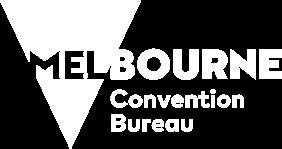

Ateam of researchers from Monash University and Geoscience Australia have published a paper, offering what they consider to be the first comprehensive assessment of Australia's potential to develop green steel as a value-added export commodity. According to the paper’s lead author, Monash University Research Fellow Changlong Wang, green iron could hold the solution to the twin challenges of decarbonising the global steel industry and exporting Australian hydrogen.
The steel industry is characterised as a ‘hard-to-abate’ sector, due to a combination of technical, economic and infrastructural challenges that have hindered the adoption of green alternatives for primary steel production.
“The technical complexity of steelmaking lies at the heart of the challenge,” Dr Wang said.

“The traditional process involves high-temperature reactions facilitated by burning coal, a carbon-intensive fuel. Developing an effective low-carbon alternative that can deliver the same results has proven difficult. The use of hydrogen as a reducing agent, instead of carbon, is one promising approach. However, this requires significant advancements in hydrogen production, storage, and transportation, as well as access to low-cost renewable electricity.”
As well as these technical hurdles, economic factors have also played a role, with current low-carbon steelmaking technologies tending to be more expensive than traditional methods. Without a substantial carbon pricing mechanism or other economic incentives, Dr Wang said steel producers have little motivation to invest in these costlier green alternatives.
Despite these challenges, Dr Wang said progress is being made in the development of sustainable alternatives for primary steel production.
“Emerging techniques such as hydrogen-based direct reduction, hydrogen plasma smelting reduction, molten oxide electrolysis, and electrowinning of iron in an aqueous alkaline solution are currently under investigation.
“Among these alternatives, the hydrogen direct reduction method has achieved the highest level of technical readiness, and its deployment at an industrial scale has already begun. As the cost-effectiveness of renewable technologies continues to improve and global decarbonisation calls for urgent actions, the prospects for hydrogen-based direct reduction (H2-DRI) in steelmaking are becoming increasingly promising.”

Decarbonising steelmaking is a crucial step in achieving the necessary reductions in emissions to meet net zero targets. According to Dr Wang, steel production is a significant contributor to global emissions, and accounts for approximately seven per cent of all energy-related emissions.
“Meeting the international goal of a net zero future will require a fundamental shift to low-emission iron and steel manufacturing processes, particularly as per the IEA's Net Zero by 2050 scenario, global steel emissions will need to decrease by 24 per cent by 2030 and 91 per cent by 2050 to avoid the worst effects of climate change and limit global heating to 1.5°C.”
“Australia’s resources exports are dominated by steel feedstocks – including iron ore and metallurgical coal – which comprised $200 billion in 2021-2022 (or 47.45 per cent of all resource and energy exports).”
Dr Wang said that this leaves Australia vulnerable to future disruption.
“If we’re part of the solution, then Australia can lead global action on the path to net zero while also maintaining our high quality of life.
The research of Dr Wang’s team shows a strong alignment between prospective hydrogen hubs and current and future iron ore operations in Australia, with the alignment enabling shared infrastructure development and first-mover advantages.
“The Economic Fairways modelling used in the study reveals that many current iron ore mining centres are particularly suited for hydrogen production from renewable resources because of the enabling power and transportation infrastructure built to service existing mining operations.
“While Australia has ample areas of high-quality renewable resources, it is also vast and sparsely populated, with many regions lacking easy access to power and roads. Therefore, the
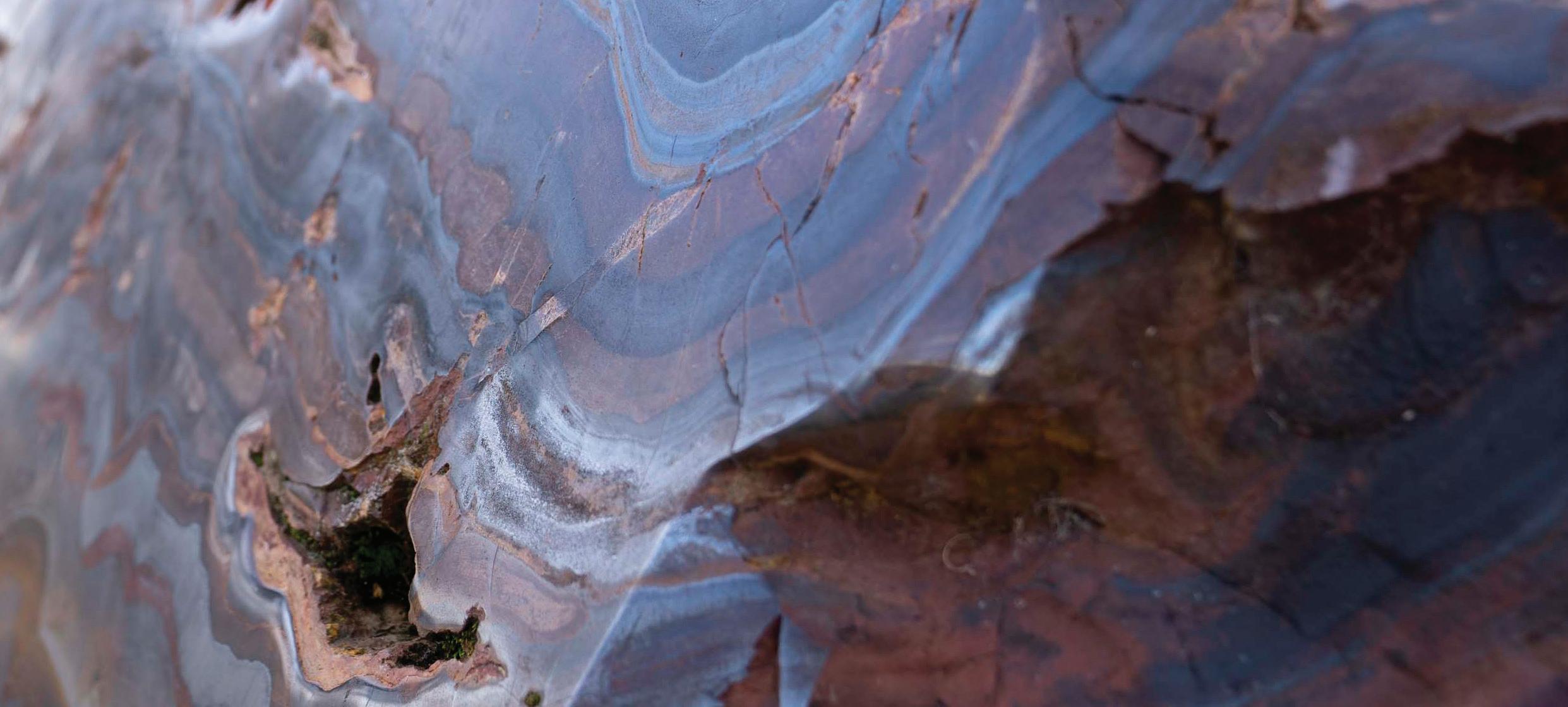
availability of infrastructure is a critical factor in determining the location of hydrogen hubs and iron ore operations.”
According to Dr Wang, the alignment between the two industries can enable shared infrastructure development, reduce costs associated with long-distance hydrogen transportation, and contribute to the production of green steel at a lower cost and with a lower carbon footprint.
Hydrogen’s potential role in steelmaking

Renewably-sourced hydrogen can be used as a substitute for coking coal and methane in the iron treatment process to decarbonise steel production.
“Traditionally, coking coal is used as a source of carbon and energy in the blast furnace process, where it reacts with iron ore to produce molten iron. Methane, on the other hand, is used in the direct reduction process, where it reacts with iron oxide to produce metallic iron.
“By replacing coking coal and methane with renewablysourced hydrogen, the carbon emissions associated with steel production can be significantly reduced.”
Dr Wang said that the hydrogen can be produced through electrolysis using renewable energy sources such as wind or solar power, with this renewable hydrogen then being used as a reducing agent in the iron treatment process.
“In the case of blast furnace-based steelmaking, hydrogen can be injected into the blast furnace as a substitute for coking coal. This process – known as hydrogen injection – reduces the carbon content in the iron production process, resulting in lower greenhouse gas emissions.”
Hydrogen can be used to replace methane in the direct reduction process. This method is known as hydrogen direct reduction and involves reducing iron ore in a hydrogen-based shaft furnace instead of a conventional blast furnace. The reduced iron is then cast in an electric arc furnace for steelmaking.
“This two-step process requires renewable energy resources, with green hydrogen used for shaft furnace reduction and electricity for electric arc casting. These renewable energy-powered processes significantly reduce greenhouse gas emissions and contribute to the goal of achieving a net zero future.”
Dr Wang said one of the benefits of using green hydrogen domestically instead of exporting it overseas is that it reduces the costs associated with long-distance hydrogen transportation and extensive, long-term hydrogen storage.
“Transporting hydrogen over long distances, whether by ship or pipeline, is expensive and technically challenging.
“Hydrogen, in its natural state, is a very low-density gas. While it has more energy per unit mass than many other fuels, it is less energy-dense per unit volume. This means that to transport hydrogen, you either need to transport a very large volume of it, which is not practical, or you need to alter it in some way to make it more dense.”
Although there are several ways to do this, each comes with its own challenges and costs.
“Hydrogen can be compressed into high-pressure tanks. However, this requires a lot of energy and specialised, expensive equipment to handle the high pressure. Moreover, even when compressed, hydrogen has a lower volumetric energy density than other fuels, meaning you still need to transport a larger volume to deliver the same amount of energy.
“Hydrogen can be cooled to extremely low temperatures (minus 253�C) to turn it into a liquid, which is denser than gas. This method greatly reduces the volume of hydrogen, making it more practical for storage and long-distance transportation.
“However, the cooling process is energy-intensive and requires expensive, specialised infrastructure, both for the cooling process and for maintaining low temperatures during transportation and storage.”
Another method of transporting hydrogen is by binding it to a chemical carrier, forming a liquid organic hydrogen carrier (LOHC), which means the hydrogen can then be transported at normal temperatures and pressures and extracted from the carrier at the destination. The downside to this method, however, is that it requires complex and costly infrastructure for the binding and extraction processes.
Pipeline transportation of hydrogen can be a practical solution for short distances or within a certain geographic area, but it presents its own set of challenges for longer distances, including that hydrogen embrittlement may lead to damage in certain natural-gas pipelines that are made from metal.
Additionally, regulatory and safety considerations can add to the cost and complexity of hydrogen transport.
According to Dr Wang, the strategic co-location of hydrogen production facilities, iron ore mining operations, and steel manufacturing plants can play a vital role in minimising costs associated with extensive hydrogen transportation and storage.
“This approach not only brings these interdependent processes closer together at key industry hubs with abundant infrastructure, but also offers opportunities to harness renewable energy sources effectively.
“Areas like the Eyre Peninsula in South Australia, where wind and solar resources are largely complementary, present unique opportunities. Here, the wind predominantly blows at night when solar energy isn't available, creating an almost round-theclock renewable energy supply.”
Dr Wang said a well-designed hybrid system that synergises wind and solar photovoltaic (PV) generation can significantly reduce reliance on expensive battery and hydrogen storage solutions.
“By situating green hydrogen plants and steelworks in regions with such abundant and complementary wind and solar resources, renewable energy can be efficiently used to power the electrolysis process for hydrogen production, as well as provide electricity for the steelmaking operations.”
Overall, the alignment between these two industries can enable shared infrastructure development, reduce costs associated with long-distance hydrogen transportation, and contribute to the production of green steel at a lower cost and with a lower carbon footprint.
The 2022-23 Federal Budget allocated $2 billion towards making green hydrogen readily available for various applications, including replacing coking coal in the steelmaking process. Despite this, Dr Wang said there is still more to be done to get green steel off the paper and into production.
Dr Wang said that as a country, Australia needs to identify how far down the value chain it should go, which will facilitate setting the conditions to leverage Australia’s natural advantages. The configuration of hubs and export facilities will depend on whether Australia is an exporter of ores, hydrogen, briquette iron, or steel.
To produce green hydrogen at a large scale, Dr Wang said there needs to be a significant increase in renewable energy capacity. This involves expanding the deployment of wind, solar, and other renewable energy sources to generate the electricity required for hydrogen production, which will require further investments in renewable energy infrastructure and technologies.
The establishment of a robust hydrogen production infrastructure is crucial for the widespread adoption of green hydrogen. According to Dr Wang, this includes the construction of electrolysers, hydrogen storage facilities, and transportation networks to ensure the efficient distribution of hydrogen to steelmaking facilities and other end-users.
According to Dr Wang, and depending on how green steel technology develops, Australia will likely need to produce more magnetite. While magnetite is currently mined in Western Australia, South Australia and Tasmania, the vast majority of Australia’s current iron ore production is hematite.

Continued research and development efforts are needed to advance electrolysis technologies and reduce the cost of green hydrogen production, including improving the efficiency of electrolysers, exploring new catalyst materials, and optimising the overall hydrogen production process.
“Cost reduction is essential to make green hydrogen competitive with traditional fossil fuel-based alternatives. Similarly, integrating green steel production with other flexible industrial processes could hedge capital and operational costs, while minimising renewable energy curtailment,” Dr Wang said.
“Supportive policies and regulations, along with collaborative efforts and partnerships, are also essential elements in this endeavour.”
Despite the potential positive outcomes to green steelmaking, there are still barriers and challenges that impact the widespread adoption of the process. As it stands, green hydrogen production is currently more expensive than traditional fossil fuel-based alternatives.
“The high cost of renewable energy sources, electrolysis equipment, and infrastructure development contributes to the higher cost of green hydrogen. Cost reduction measures and economies of scale are needed to make green hydrogen competitive with conventional methods.
“The establishment of a comprehensive hydrogen infrastructure is a significant challenge. This includes the construction of electrolysers, hydrogen storage facilities, and transportation networks. The lack of a well-developed infrastructure can limit the availability and accessibility of green hydrogen, hindering its adoption in the steel industry.”
Scaling up renewable energy capacity is critical for large-scale green hydrogen production, however, the intermittent nature of renewable energy sources, such as wind and solar power, poses challenges in ensuring a consistent and reliable supply of electricity for electrolysis.
According to Dr Wang, additional investments in renewable energy infrastructure are needed to meet the energy demands of green hydrogen production.
“While electrolysis technology has advanced, further research and development efforts are required to improve its efficiency, durability, and cost-effectiveness. Advancements in catalyst materials, membrane technologies, and system integration are needed to enhance performance and reduce the capital and operational costs of electrolysers.”


2000+ attendees
175+ mining companies
Resourcing Tomorrow focuses on accelerating the energy transition. It will examine the current and future economic and social dependence on resources, considering issues such as critical minerals supply, environmental resilience, digitalisation, the circular economy, ESG and our future workforce.
Join us in London from 28 - 30 November 2023 to come together to share knowledge, network and drive sustainable development.

AusProof is committed to providing the industry with safe, reliable and modern high quality cable coupler solutions. Ex-certified and suitable for use in underground operational sites, including Group 1 hazardous environments, AusProof’s stainless steel products can also be used in metalliferous sites if a higher level of durability is desired.
Covering 660-3,300V and from 60A to 425A, AusProof’s stainless steel restrained range includes the PES (Plug Extra Small), PS (Plug Small), and PL (Plug Large) plugs and receptacles. Available for your stainless steel high voltage needs are the Ex118BSS and Ex118BSSRF, both rated at 11kV and for 800A. Some key features shared across both of AusProof’s ranges include
single piece contacts, easy termination, and higher MPa material, with their high voltage products also featuring handles and the LED Live Line Indicator for improved occupational health and safety support.

AusProof will be in attendance at AIMEX 2023 and located at H111. At its stand you will find state sales representatives with some of AusProof’s stainless steel products, ready to demonstrate to you another of their key features designed to assist with reducing downtime and associated maintenance costs: replaceable flameproof paths.
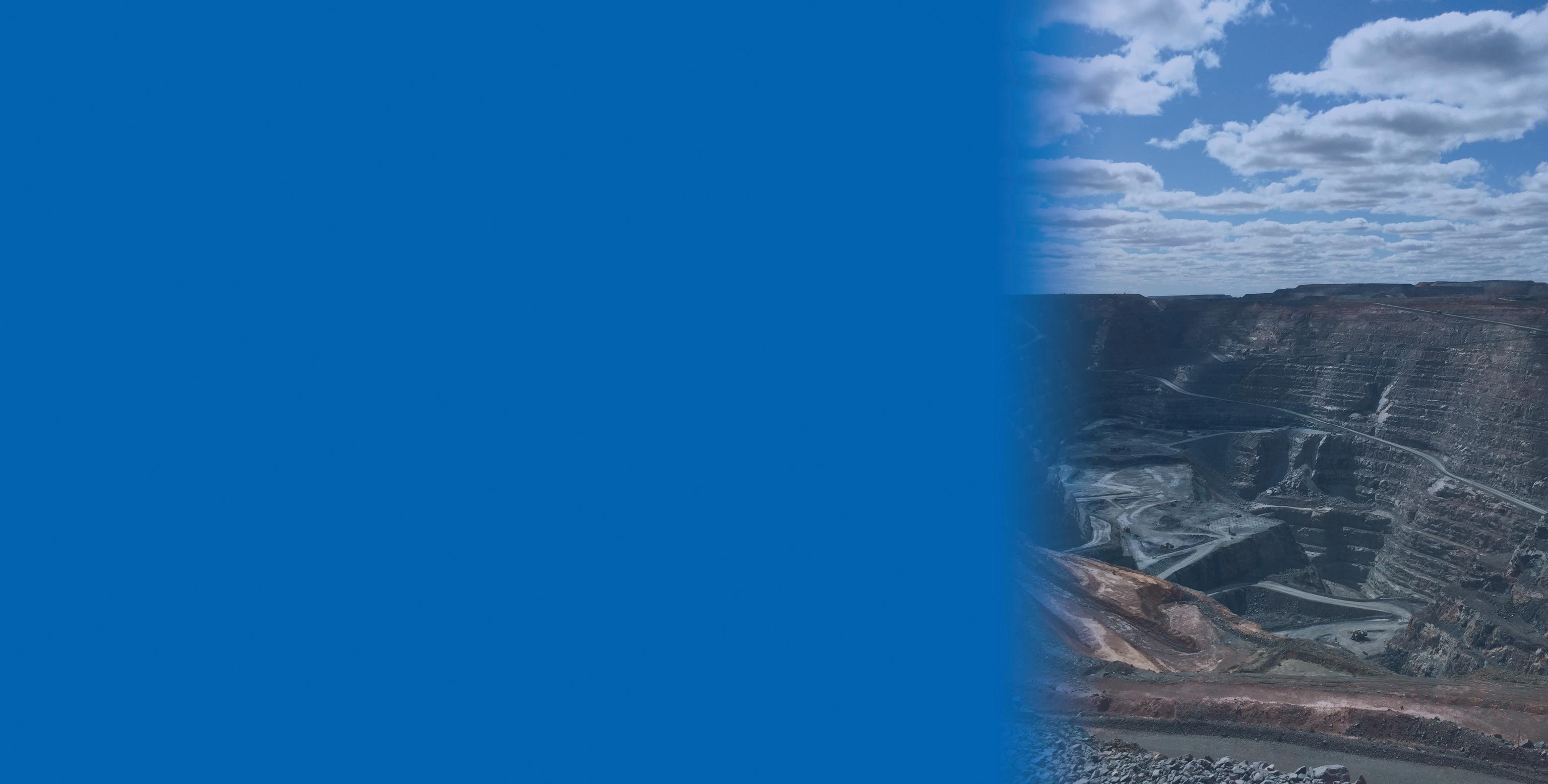
Unable to attend AIMEX this year? AusProof’s sales representatives are always available to answer your questions and help you find the cable coupler solution you need.

Providing the industry with safe, modern and reliable high quality cable coupler solutions
Nearly 50 years of professional and operational experience
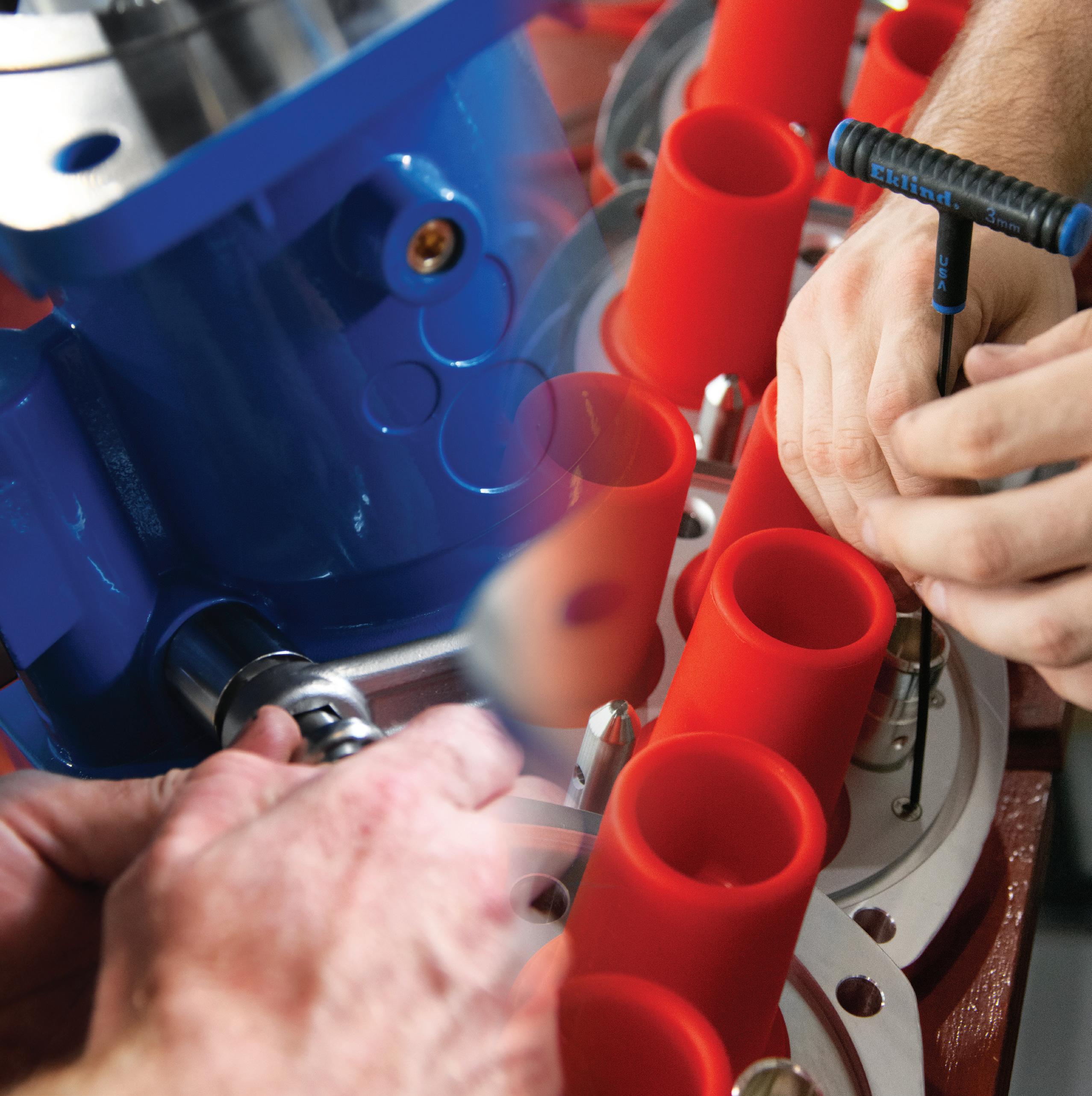
Original Equipment Manufacturer (OEM)
LED Live Line Indicator
Single Piece Contacts
Ergonomic Genderless Designs
Full Phase to Phase Segregation with Earth
Key features of AusProof products include: Learn more here!
Designing and developing safe and reliable high quality electrical cable couplers in aluminium and stainless steel
Heading to Sydney in September for AIMEX 2023? Find the AusProof team at H111

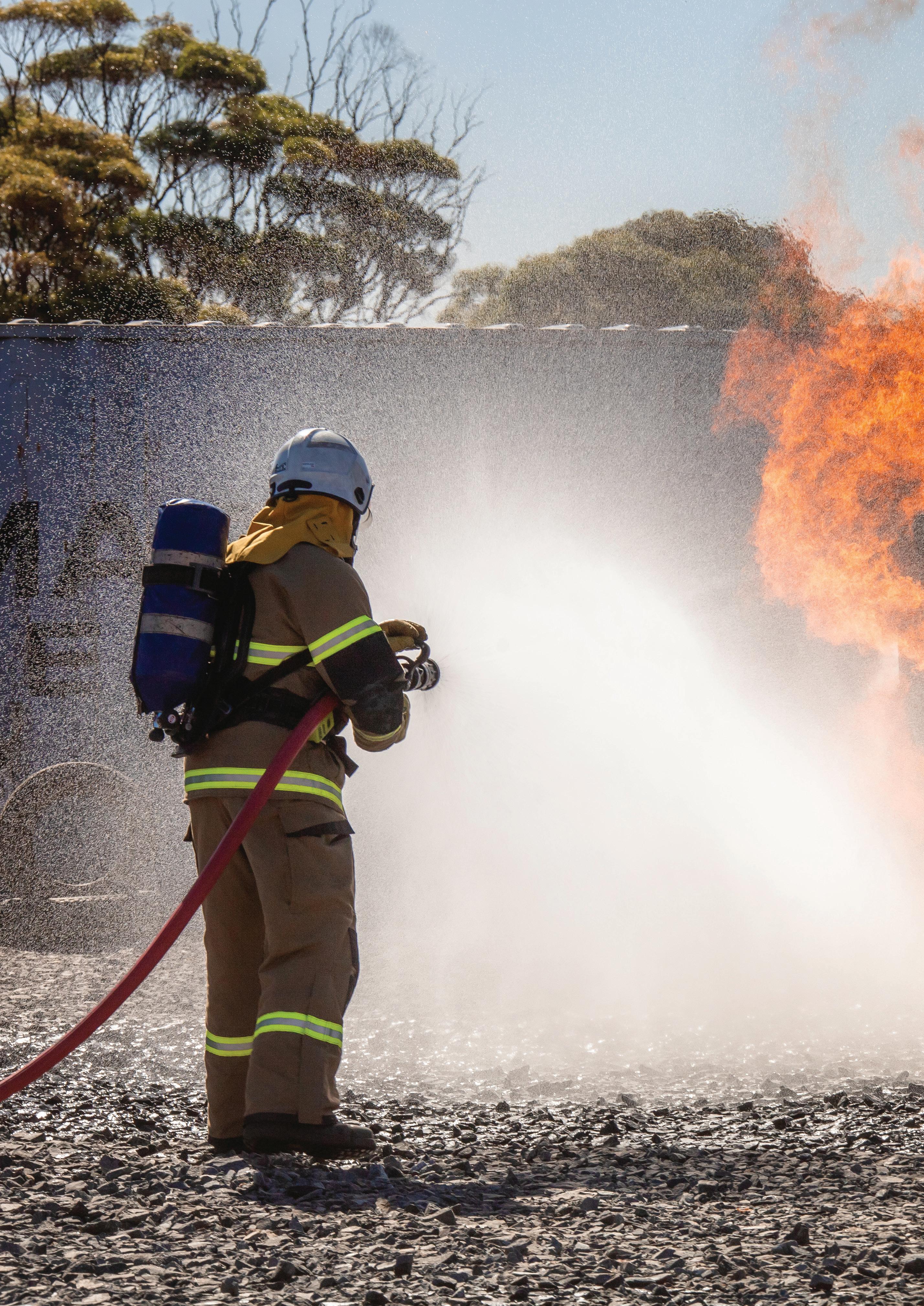
Technological innovations and advancements, as well as training programs and safety education, are constantly changing the way that mine safety is carried out across the world. Despite these enhancements and training, it can be almost impossible to predict how people will respond when faced with an emergency, unless there was a way to simulate an emergency in a controlled environment.

Throughout mining history, one thing has remained critical: ensuring the wellbeing and safety of mine workers.
Constant updates to regulations and safety protocols are a surefire way to keep workers prepared and informed, but even the most prepared individuals can find themselves frozen in fear when faced with a real life emergency.
Understanding this problem, and working to mitigate it, the Chamber of Minerals and Energy Western Australia (CME) co-hosts two mine competitions each year with the Mine Emergency Rescue Competition Committee.
Held yearly for more than a century, these competitions aim to simulate real-life emergency situations in order to observe and analyse peoples’ reactions in a controlled environment, while allowing them to use their training.
CME’s CEO, Rebecca Tomkinson, said, “Since the original gold prospectors arrived in the Western Australian Goldfields in the early 1900s, safety has been paramount, with the first underground mine rescue competition held in the Goldfields in 1911.”

The Surface Mine Emergency Rescue Competition (SMERC) takes place annually in April or May, and the Underground Mine Emergency Rescue Competition (UMERC) is held in November.
Participating teams generally compete in multiple events, including:
♦ Firefighting (SMERC)
♦ Vehicle Extrication (SMERC)
♦ Search and Rescue (UMERC)
♦ Breathing Apparatus Skills (UMERC)
♦ Theory
♦ Team Skills
♦ Rope Rescue
♦ Overall First Aid
♦ Incident Management
Participating teams are also judged and awarded prizes in other categories as well, including hazardous materials management, first aid, overall first aid, firefighting, confined space, theory, team skills, vehicle extrication and incident management competitions.
In the 100-plus year history of the competitions, Ms Tomkinson said the safety landscape has evolved significantly, but the critical importance of keeping workers safe has remained constant.
“While safety looks very different today, this long-standing tradition continues to showcase the techniques, technology and skills that have been developed and honed by our industry over the more than 100 years.
“Even though the procedures and equipment have evolved immensely, the importance of clear thinking, fortitude and team work remain, and through simulated emergencies, response teams are tested in a safe environment that has proven an invaluable means of preparation for real-life scenarios.
“The competition is a unique event that builds camaraderie, shares best practice and showcases the skills and fortitude of great teams. The ability to be part of the competition is a positive point of difference for companies vying for talent.”
This is demonstrated, she said, by the significant surge in interest as companies position the competition as a benefit to attract and retain essential staff, even amongst persistent skills and labour shortages in Western Australia.
“Highlighting the importance of safety, honing the skills of emergency response teams and providing a collaborative environment for our member companies.”
Ms Tomkinson said that because each mine site approaches emergency response a little differently, the ability to learn from others is incredibly important and is a key component of the competition’s success.
“It simply isn’t common practice to deliver the level of training on-site that occurs at these competitions,” Ms Tomkinson said.
It can be hard to prepare and train workers due to the impossibility of being able to predict how people will react to emergency situations. Exposing them to simulated scenarios that are similar to actual emergencies can equip individuals to better respond should an emergency occur.
“The competitions act as a benchmark to ensure that if there was a genuine emergency on-site, teams are adequately experienced to handle it.”
The resources required to set up multilevel scenarios with complex moving parts is immense, with competitors expressing that the sensory overload experienced is vital to get accustomed to.
“Human instinct (even when you’re well trained) is to run away from the flames
rather than towards them. This controlled environment teaches you to take a breath and trust your skills,” Ms Tomkinson said.
In reference to the competitions, one safety adviser said, “You can’t ever prepare mentally for the sights, sounds, smells and overwhelming feeling in an emergency situation; though this comes close.”
The competing teams are refreshed each year, exposing as many different people as possible to the competition. Some of the participating teams are made up of 50 per cent first time emergency responders, but Ms Tomkinson said that it’s that diversity in skills, knowledge and personalities that brings energy and new perspectives to the group.
The competitions aren’t open to just anyone, with teams undergoing training for months prior to participating in the events.
“Each team tackles their training in their own way. Nominations are sought months ahead to allow significant preparation. Some choose to conduct training in-house, others hire emergency response specialists to put them through their paces.
“Either way, the scenarios in each event remain a secret until teams enter into the host competition site. This helps to create a realistic environment, if this were a reallife rescue there is no time to pre-prepare your strategy.”
CME’s Mine Rescue Committee runs year-round, with each competition requiring hundreds of hours of preparation – designing the event, managing risk, preparing competitors and securing qualified adjudicators.
“Disciplines put to the test during competitions include firefighting, hazardous chemical response, first aid, team skills, vehicle extrication, rope rescue, incident management, confined space rescue and then a theory component. Emergency response could be one or all of these things in a real-life situation,” Ms Tomkinson said.
The 2022 underground competition was a first-of-its-kind, combining all of the above into one major disaster – a seismic event – that helped elevate the competition to an even more realistic level.
“A flood trapping people (actors) meant paddling, delivering first aid and rowing workers to safety. It brought the controlled emergency simulations
together including firefighting, search and rescue, fire aid, incident management and team skills,” Ms Tomkinson said.
Winners are determined using a tough scoring system, with guides providing criteria for each scenario.
“Scores are weighted on items such as communication, record keeping, equipment control and risk management. Several chief adjudicators score and compare results, before scrutineers observe and determine a winner for each category,” she said.
Competitions can also be impacted by changes to regulations and legislation, with new breathing apparatus standards, for example, being released and needing to be incorporated into the new procedures for scenarios.
Similarly, updated regulations in Western Australia mean that sites must demonstrate an ability to perform search and rescue – and the competition is the ideal scenario to safely enable this.
“When attending the awards ceremony that follows the competition, one thing is clear; the passion and dedication of the teams is palpable,” Ms Tomkinson said.
“The room erupts into standing ovations for those honoured with commemorative medals for 20-30 years of service. After two days competing, teams have weary heads, aching muscles, new mates and immense pride that they can respond to an emergency and get their colleagues home safely.”
Chair of the Turkish Miners Association and Head of the European Safety Commission, Goksel Alpaslan, attended a recent competition and said, “The Goldfields Underground Mines Emergency Response Competition is considered the global benchmark for mine rescue competitions.”
“It’s a testament to how internationally well-regarded the underground competition is and we are so proud to carry on this more than 100-year tradition today,” Ms Tomkinson said.
Norton Gold Fields’ Paddington team was crowned the best overall team at the most recent Surface Mine Emergency Response Competition, held in May 2023.
Attention has now turned to the upcoming Underground Mine Emergency Rescue Competition, which is set to take place later this year.
OPTIMA® Batteries are highly regarded in the mining industry for their performance capabilities in extreme applications. Among the colour-coded range, the YELLOWTOP® battery is designed specifically for applications that require both starting power and deep cycle abilities. Its strong reputation for reliability and long service life makes the OPTIMA YELLOWTOP range a popular choice for heavy duty mining equipment.
The YELLOWTOP battery is powered by OPTIMA’s unique SPIRALCELL TECHNOLOGY®. This is based on a series of individual spiral-wound cells composed of two pure (99.99 per cent) lead plates coated in a precise coating of lead oxide. This design means the batteries are 15-times more vibration-resistant than regular flooded lead acid batteries, and can last up to three times as long.
SPIRALCELL TECHNOLOGY provides higher starting power and faster recharging compared to other flat plate batteries on the market. The unique cell design also enables it to hold its shape even under the harshest weather conditions, which conventional batteries can struggle to endure.
Batteries with high performance, reliability and a long service life are essential to creating less downtime on the job. Fitting a dual-purpose YELLOWTOP battery will deliver both reliable

starting power and repeated deep cycling for applications packed with accessories.
This makes it the ideal choice for mining equipment, military vehicles, emergency services, road transport and agricultural machinery.
Other applications that run additional accessories such as running lights, winches, hydraulics or a high-performance stereo/AV system will also benefit from being fitted with an OPTIMA YELLOWTOP battery.
OPTIMA Batteries are manufactured by Clarios, a global leader in advanced energy storage solutions, whose batteries power one in three vehicles worldwide. All the batteries in the range are manufactured with sustainability, safety, and reliability in mind. Clarios’ supply chain management aims to contribute to the ongoing progress of the community and the planet by adding value every step of the way.
OPTIMA Batteries have a demonstrated 40-year history of technological innovation and world class engineering. The manufacturer understands extreme applications – their operating conditions and performance requirements are like no other.
In the 1970s, OPTIMA Batteries introduced the first maintenance-free lead acid batteries for commercial and military use, then later revolutionised the industry with the introduction of the SPIRALCELL TECHNOLOGY AGM battery, which to date remains the primary power source behind OPTIMA Batteries.

When it comes to operating large-scale, heavy duty mining equipment, having a high power, high performance battery is the only way to get the job done.

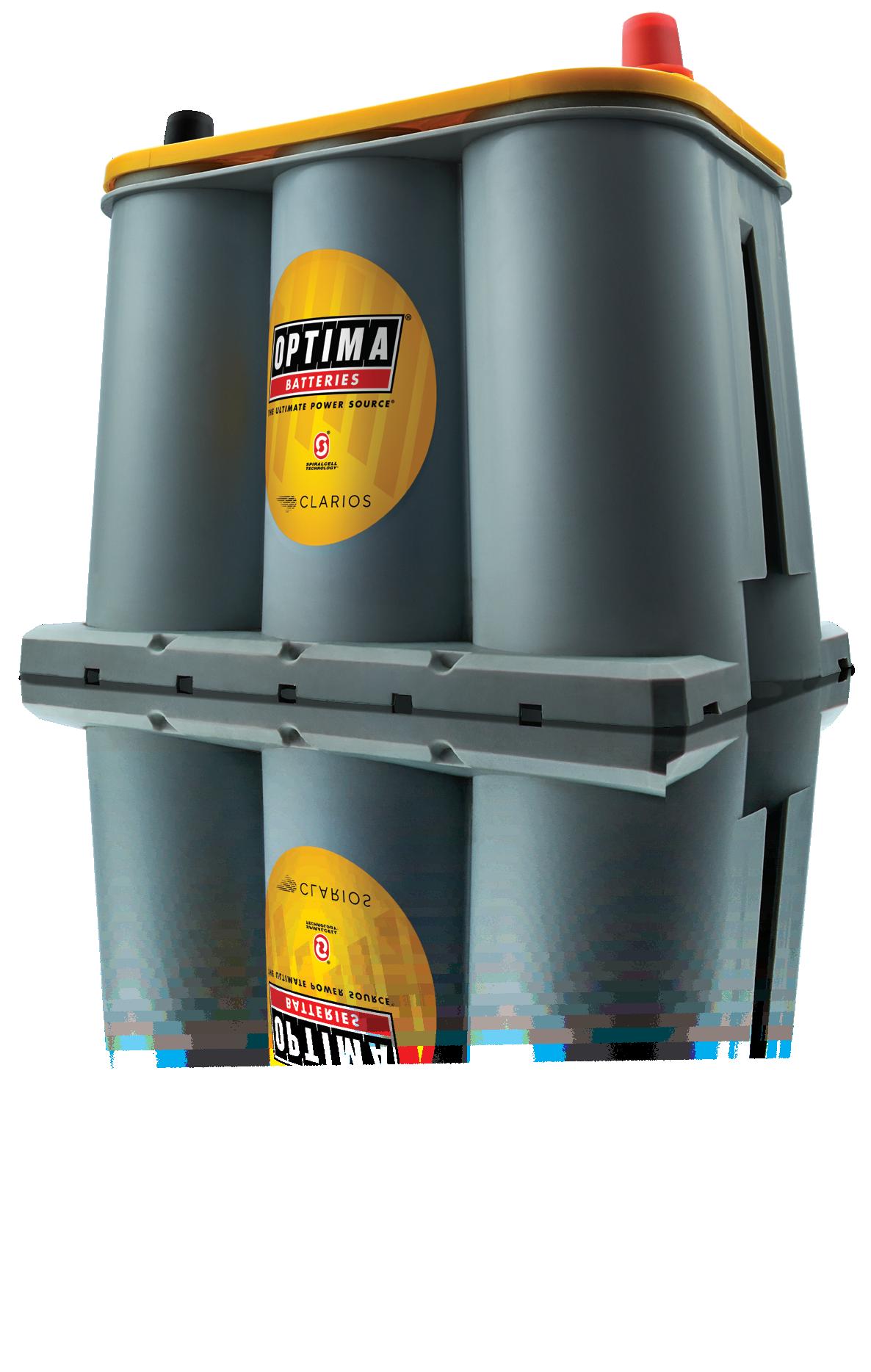
Drones have been firmly embedded in our imagination, especially thanks to the world of cinema and television. Society and industry experts are becoming increasingly inventive in how we can benefit from these robotic aircraft; enter the minerals industry.

Drones have become a familiar feature of mine sites, with rapid incorporation in some aspects of operations, to the point where they are a routine tool for stockpile surveys, some equipment inspections and tailings inspections. More famously, the extractives industry has made the tunnel-mapping drones imagined in movies like Prometheus and The Incredibles a reality, through Emesent's ‘Hovermap’ device.
Globally, the standard workhorse of drone sensing has been photogrammetry. Attach an affordable camera on a drone, combined with some decent GPS, and with computer vision magic we suddenly have accurate photorealistic threedimensional models of our sites. But there is a dazzling and growing array of different sensors or geophysical instruments that can also be mounted.
The first place that both the minerals industry and the drone sector have gone is to adapt sensing technology that already exists in some form, on aircraft or satellites. The world’s largest commercial manufacturer of drones, DJI, has for a few years now, sold platforms integrated with thermal and multispectral cameras for enterprise applications.
Multispectral cameras capture light in specific wavelength ranges, or ‘bands’, from the visible and near-infrared parts of the electromagnetic spectrum (400-1000nm). They effectively capture a dimension of the world that our eyes are incapable of seeing. We can use these bands to make calculations, such as different types of ratios, that reveal everything from vegetation cover to deep water structures, soil disturbance and much more.
At the University of Queensland’s Sustainable Minerals Institute, we have used multispectral cameras to help track
rehabilitation, monitor mine closure sites and map out the distribution of iron oxides in soils and rocks as a proxy for acid mine drainage contamination.
As such, with some straightforward and relatively costeffective equipment, we can use the same drone platform to provide valuable information for different aspects of operations. In other words, drones are interoperable. In this case they provide opportunities for multispectral and photogrammetric technology and resulting insights to be shared between the survey, tailings, environmental and closure teams.
Nonetheless, we know we can do better. Multispectral cameras catch only limited information in their ‘bands’ and have significant gaps between the bands. The most common sensors use the visible and near-infrared parts of the spectrum but miss the short-wave infrared. If, however, our cameras can collect data continuously from the visible all the way to the short-wave infrared (400-2500 nm wavelengths), in narrow increments rather than broad bands, then we open a new world of possibilities.
This is where hyperspectral cameras come in, otherwise known as hyperspectral imaging.
Hyperspectral cameras are not new and have been sensing our world from aircraft, tripods, satellites or mounted to conveyor belts for some time. Due to their weight however, short-wave hyperspectral cameras for drones are new.
We are now beginning to optimise these cameras and overcome the weight barrier. In fact, the next-gen hyperspectral instruments for drones are able to span both the visible nearinfrared to short-wave infrared (VNIR-SWIR) spectrum all in one.
Research has shown that in this era of ‘beyond visible’, there are many new avenues for application, especially with
short-wave infrared at our disposal. In particular, being able to collect high-resolution VNIR-SWIR data helps map individual minerals of key significance to mining, such as carbonates, sulphates and sulfosalts, clays, the different iron oxide species and the phyllosilicate minerals such as chlorite, talc, muscovite and others.
This bewildering array of minerals is well-known in the world of exploration as important for vectoring towards resources. However, the minerals have perhaps even more value for geometallurgy and mineral processing, opening the possibility to use drones as an early warning system from bench-to-mill, to track the ore and waste entering mineral processing plants.
Other applications include monitoring contaminated water chemistry along streams, or mapping varieties of plant species and their health in areas of rehabilitation. Hyperspectral cameras mounted on drones have already been used to create automatic geological maps of open pits, where no geologist is allowed to access.
Satellites have had shortwave infrared, and indeed other useful wavelengths, for some time. The main problems are the obstructions caused by cloud cover and the spatial resolution of their individual pixels being in the order of metres to tens of metres. A single pixel resolution of 10m by 10m is really composed of many different minerals and so it is a challenging exercise to process satellite data, and deconvolute the spectral signal.
The unique characteristics of drones enable us to overcome some of these drawbacks.
For a start, drones can be flown at lower altitudes, close to the ground’s surface. This means they collect data below cloud cover and with very high pixel spatial resolution. In fact, it is possible to get sub-cm resolution if required.
Secondly, drones can do repeat surveys more easily and can potentially scan steep walls as well as large flat areas. This means that we can use drones for change detection and do so in lots of different scenarios. This quality is a good example of where drones allow something new that was not previously possible.
It is not hard to imagine daily flights of production benches and pit walls leading to semi-automatic geological and resource model updates, and much more regular reconciliation. That same instrument can be tracking changes in infrastructure integrity due to corrosion, over major capital investments such as processing plants.
It almost sounds too good to be true. So why is our industry not routinely using this technology or pushing it forward?
Simple sound bites and familiar accusations would point to conservatism in the minerals industry, but these accusations are unfair.
The truth is that the technology is challenging. There is already a level of compliance beyond conventional workplace or mining regulations, related to aviation authorities. This is not a barrier for the industry because we are very good at working to regulatory frameworks, but it does require training, education and time commitments from mining professionals who are already stretched.
The main challenge is that the processing and interpretation of hyperspectral data requires deep expertise. The enterprise software solutions for doing this are not easy to drive and, more importantly, it can take up to three weeks to get results. Such turnaround times are fine for the exploration and environmental management arms of the industry but are not suitable for operations and production, where the most immediate value lies.
The M4Mining consortium Technology is meeting these challenges now, and the Sustainable Minerals Institute and its European partners are providing solutions in a major European project called M4Mining.
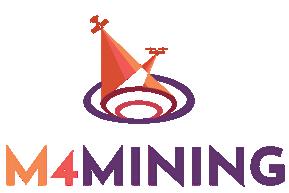

This three-year project will deliver a turnkey drone hyperspectral system by HySpex that can return calibrated, corrected and even interpreted data for mining professionals within 24 hours; in fact, the goal is as little as four hours.

It is an exciting project where we will combine the drone with a hyperspectral imager, LiDAR, a machine vision camera, a gimbal that can rotate the camera at multiple angles, and importantly the software modules for the onboard processing. These technical aspects are only half the journey.
One of the objectives of M4Mining is to develop and demonstrate a cost-effective method for regular mapping, monitoring, and geo-hazard prediction, as well as management of mining operations, including stockpiles and tailings over time. This means running a series of case studies across Australia and Europe in discovery, operational, closure and postclosure environments.
We are also developing whitepapers on the operational context of such instruments, and sampling strategies so that industry will be well-positioned for best practise.
A final key component is to understand how drone data can integrate with satellite data to provide a much better product for industry. Both technologies should be viewed as complementary not competitors.
Drones have limited battery life and though they can be extremely cost-effective for certain applications, they bring more value to the industry when we use their data to improve the quality of satellite data which can cover much larger surface areas.
None of this work is occurring in a vacuum. Without infringing IP, some of the data and publications will be made public through the lifespan of the project. This project also remains open for industry participation and we are actively looking for engagement from those partners who wish to gain early insight from the opportunities that exist ‘beyond visible’.

Vertical drilling has been used to mine oil and gas deposits for over 150 years, but it’s only in recent years that mining owners and operators have come to truly realise the broader benefits that horizontal drilling can offer at mine sites.
The use of vertical drills has been commonplace in Australia’s mining industry for many decades. Less common has been the use of horizontal drilling, but in recent years Australian industry experts have started to showcase the many and varied applications for this technique.
Horizontal directional drilling (HDD) in the Australian mining industry offers various advantages, including improved access to mineral deposits, dewatering tailings dams, lowering water tables for safer mineral extraction, accessing potable water and installing cables or explosives in mines.
Everyone is familiar with the sight of a vertical drill at oil and gas exploration sites. Vertical oil and gas exploration dates back to 1847, and the late 18th century and the early 19th century marked the creation of major oil companies that still dominate the oil and gas industry today.
While vertical exploration has obviously proved to be very successful, in recent years, it’s become clear that utilising directional drilling techniques offers better and broader access to oil and gas deposits by drilling across a deposit, rather than just straight down.
Horizontal directional drilling provides explorers with a more efficient means of searching for new deposits. With exploration being one of the most expensive aspects of mining, anything which enhances efficiency is good news for the industry.
Tailings are a by-product of mining, and the industry’s management of tailings storage dams is a topic that has received considerable attention of late. Following the Brumadinho tailings dam disaster in January 2019, it’s become clear that dewatering these facilities is critical to maintaining site safety and ongoing environmental compliance.
Horizontal directional drilling can access tailings dams in ways that no other technologies can. Screens can now be installed in horizontally drilled wells to facilitate greater coverage of target zones between 500m to 1km with a single pump. Additionally, horizontal screens offer larger surface areas to improve flow and draw down rates. Horizontal wells require less above ground pipework and will reduce CAPEX and OPEX expenditure across the life of a project.
Gaining access to potable water at mining sites can be a critical element of operations. With mines often situated in extremely remote locations, getting water delivered or piped to site can be prohibitively expensive – but in the right location,
a horizontal bore can offer access to better quality water and a larger resource than vertical boreholes ever could. Horizontal bores also allow for more sustainable use and recharge rates of aquifers and water bodies. Consider the effects of placing a borehole precisely where the water body is freely moving. The extracted water will undoubtedly be higher quality and far less susceptible to contamination or replenishment issues.
HDD is widely used in the water and energy industries for the installation of pipelines and conduits for cables, and it is starting to become more commonly used on mine sites for the installation of pipe, high voltage electrical conduits and ventilation ducts. Additionally, these same techniques can be used to deploy explosives from the surface into specific underground locations that may be difficult to access using traditional methods. Utilising the pin-point accuracy that modern horizontal directional drilling provides, mine operators can adopt new ways of thinking when it comes to efficient and cost-effective ore extraction.
As HDD starts to become more commonly used in the mining industry, more applications for the technology are likely to emerge. To fully realise the many benefits HDD can offer the industry, it’s important to work with partners who are experts in the field – and AHD Trenchless is the contractor of choice when it comes to HDD.
AHD Trenchless are one of Australia’s pioneers, and foremost experts, in the use of HDD. As well as installing pipe and cable of various sizes and distances, AHD Trenchless specialises in the design and construction of new applications for HDD technology, working with partners including water and energy utilities and mining companies from around Australia and the world.
As we seek new ways to solve energy concerns and drive environmental compliance, the country will seek extractive and remediation technologies that are less disruptive to the environment and deliver genuine energy productivity benefits and improved profitability for investors. Horizontal directional drilling experts and savvy mine operators are a winning partnership to effectively lead the delivery of a sustainable future for all shareholders.
For more information on how AHD Trenchless, and horizontal directional drilling, can assist on your mine site, head to www.ahdtrenchless.com.au or call 0418 399 062.
It’s a better environmental, whole-of-life cost installation method that protects the surrounding environment and saves you money.


In pursuit of net zero targets, the mining of essential minerals to power the renewable technologies necessary for a decarbonised future has taken centre stage. However, the companies that mine these minerals also face the challenge of protecting the ecosystems and environments in which they work.
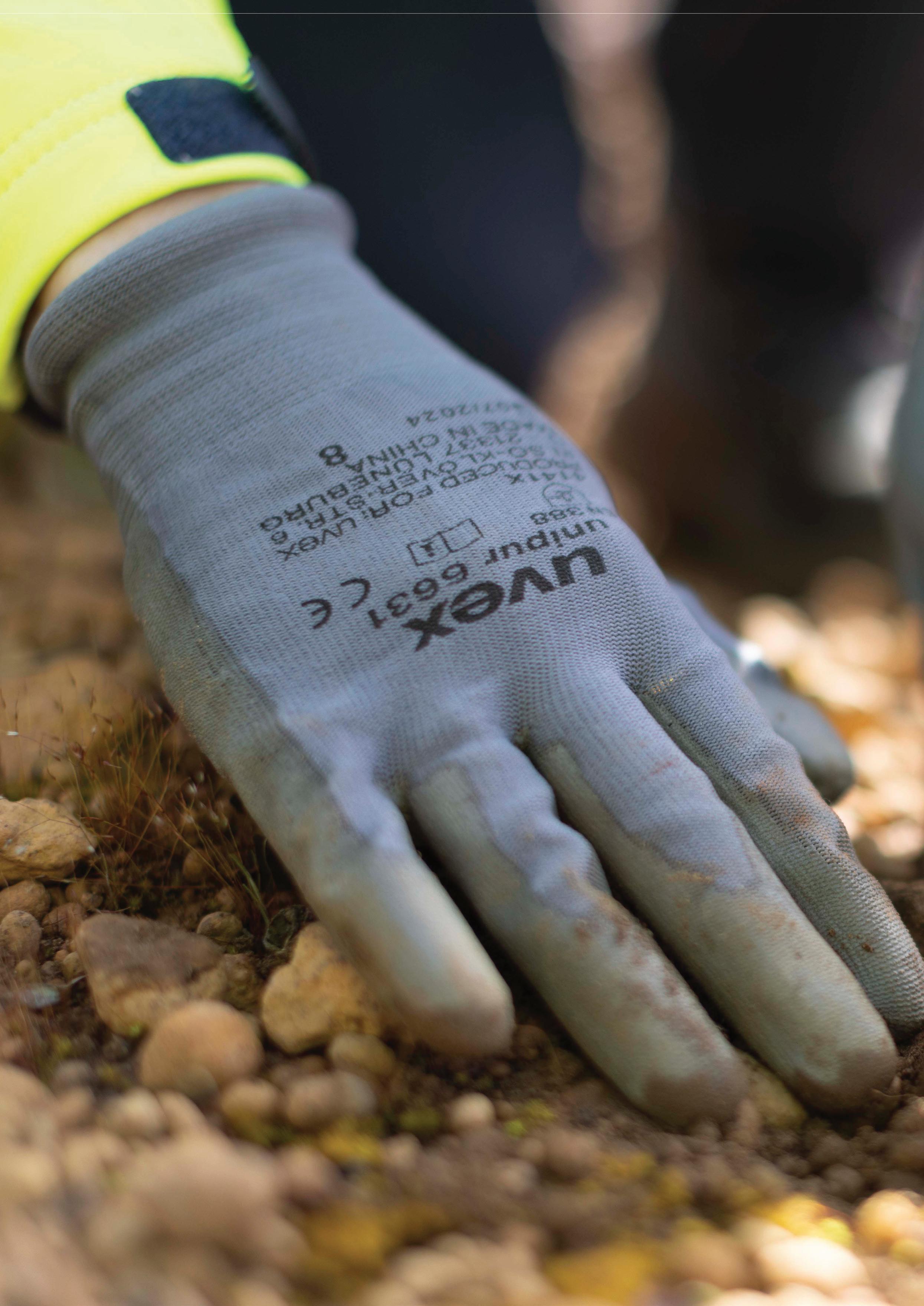
With more people than ever before calling for transparency and increased industry reporting, mining companies around the world are seeking innovative ways to balance production without jeopardising Australia’s unique and fragile habitats.
As Alcoa Australia marks its 60th anniversary, Alcoa Australia President, Matt Reed, explains how the company is looking forward, with a focus on evolving to meet changing expectations.
Mr Reed said Alcoa’s recent commitment to not mine close to the Western Australian forest town of Dwellingup is a testament to the company’s continued focus on evolving to meet changing environmental, social and sustainability requirements.
The 8,344ha ‘no mining zone’ in and around Dwellingup – an area more than four times the size of Western Australia’s Rottnest Island – is set to help protect important environmental and social values. The announcement of the ‘no mine zone’ follows the company’s decision to implement similar zones near Jarrahdale, another Western Australian forest town.
“Previous exploration has identified mineral prospectivity within these no mining zones. However, we made the commitment to protect them following numerous studies and considerable consultation,” Mr Reed said.
“This decision highlights a catch-22 that we are not facing alone. Commodities derived from mining, including our end product aluminium, along with high-demand minerals such as copper and lithium, to name a few, are essential to a decarbonised future.
“People are rightfully calling for faster paths to decarbonisation but some also want an end to extractive industries like the bauxite mining that is critical to aluminium production. You can’t have one without the other, so there’s a necessary balance.”
The International Aluminium Institute forecasts that global demand for aluminium will increase by 80 per cent between 2018 and 2050, and Mr Reed said Alcoa is poised to play a big part in meeting that demand.
“We have a proven track record of mining bauxite, refining alumina, and smelting aluminium in a safe and responsible way. Our vision is to reinvent the aluminium industry for a sustainable future, with innovation and continuous improvement at the heart of who we are,” he said.
In 1963, Alcoa became Australia’s first integrated bauxite, alumina and aluminium industry – mining bauxite near Jarrahdale, refining it into alumina nearby at Kwinana, and smelting alumina to make aluminium in Victoria.
The company currently operates two bauxite mines and three alumina refineries in Western Australia, and an aluminium smelter in Portland, Victoria.
“We produce about 50 per cent of the nation’s alumina in Western Australia and 20 per cent of the country’s aluminium from our Victorian smelter.
“Nationwide, we directly employ about 4,850 people and annually pay more than $760 million in wages, salaries and benefits, spend $2.6 billion with 1,560 Australian suppliers, and invest about $4.9 million in community contributions.
“But it’s not just what we produce or the economic value we deliver, it's how we do it. Responsible production is embedded in our Alcoa values, and in Australia and around the world we are consistently recognised for our approach to sustainability.”


Since its Australian operations began in 1963, Mr Reed said Alcoa has built a reputation as a leader in environmental management.
“We are the world’s lowest CO² emitting alumina producer and our Australian business was the first mining company to receive recognition from the United Nations for rehabilitation excellence. Our teams are working daily to develop and lead new and innovative processes to help achieve our net zero ambition.”
In terms of the company’s bauxite mining, Mr Reed said Alcoa strives to protect areas of high conservation and social value, as evidenced by the recent no mining zone announcements.
“We do not mine in national parks or old growth forests – all areas where we operate have previously been logged. We carry out extensive surveys and planning before any land is cleared and protect areas of high conservation and biodiversity value including large nesting trees used by black cockatoos.”
Mine site rehabilitation objectives around Australia vary according to agreed post-mining land uses, with the objective in some cases to return as near as possible to an area’s original attributes. In other cases, it might be to repurpose land for uses such as farming or recreation.
“Our commitment where we mine is to restore a resilient jarrah forest ecosystem and we have developed an industry leading rehabilitation and forest restoration program over our decades of operating in Western Australia.”

According to Mr Reed, more than 75 per cent of all areas Alcoa have cleared for mining have been rehabilitated to date and are at different stages of development.
“We are working to accelerate our rehabilitation rates even further, hand back more restored areas to the state, as well as evolve our practices in line with emerging science and factors such as the drying climate and increased bushfire risk.
“We’ve dedicated more than 50 years of research and development to jarrah forest restoration and continue to strive for ongoing improvement.”
Mr Reed said the company’s work was instrumental in the Western Australian Government changing the rehabilitation completion criteria from a focus on timber production to that of jarrah forest restoration, meaning that from 1988 only Western Australian native species have been returned to areas where the company mines.
“Over the past 20 years, we have achieved an average of 93 per cent native botanical species richness returns in our mine site rehabilitation. We were the first company to achieved 100 per cent species return, which was first reached in 2001.
“We were also the first mining company in Australia to officially hand back a significant area of rehabilitated land, work that was recognised with a State Government award for environmental excellence.”
Mr Reed said Alcoa’s commitment to forest restoration starts before mining even begins, with the company conducting extensive studies to identify areas that should be protected and to plan how rehabilitation should be carried out post mining. Additionally, the Western Australian Forest Products Commission harvests timber from land that is earmarked for mining.
“After mining, landscaping is carried out to blend with surrounding unmined forest, overburden and seed-rich topsoil removed prior to mining are returned, along with selected logs and rocks to help establish fauna habitat.
"We then sow seeds from about 40 local species and plant about 30 species of nursery-raised recalcitrant seedlings. These are species that don’t grow well from seed.
“Over the past five years, we have rehabilitated more than 500ha of cleared land annually, planted a total of more than two million seedlings and distributed more than eight tonnes of treated seed.”
According to Mr Reed, the company’s focus on water management is just as strong as it is for forest restoration.
“Some of our mining and rehabilitation occurs within the drinking water catchment and in 60 years of operation, we have never had a negative impact on public drinking water supply. We are enhancing our controls to ensure that remains the case.”
Mr Reed said that over the past 12-18 months, Alcoa has installed hundreds of additional water monitoring bores to understand ground water and better inform mine design and risk management. The company has also increased turbidity monitoring to enhance quality management, and prioritised rehabilitation in water catchments with stepped-up drainage assessments and designs backing this work.
“We are committed to evolving our operations to meet changing needs and expectations. That includes our mining approvals.”
Mr Reed said that Alcoa’s mine plans have been reviewed annually by the Western Australian Government’s Mine Management Planning Liaison Group (MMPLG), which takes in various departments and agencies, and have been approved by the Minister for State Development.
Approximately three years ago, the company moved to align its mining approvals with the contemporary approach that involves assessment by the independent State and Commonwealth environmental regulators. Technological innovation is also a key focus.
“We know there are strong evolving needs and expectations when it comes to climate change and that is why Alcoa is striving for zero greenhouse gas emissions by 2050. Our Australian operations are helping lead the charge on a range of carbon reduction initiatives. We’ve brought together experts from around the world to design the alumina refinery of the future,” Mr Reed said.
“Two technologies being trialled in Western Australia have the potential, when combined with a decarbonised electricity grid, to reduce a refinery’s carbon emissions by about 98 per cent and reduce freshwater use by up to 70 per cent.
“We’ve achieved a lot through our 60-year history of operating in Australia and we continue to evolve to deliver the aluminium the world needs in a sustainable and socially responsible manner.”

Mining industry waste is the largest waste stream generated by industries around the world, and of this waste stream, tailings is the most prevalent. Finding ways to effectively treat tailings can help generate a higher yield, reclaiming overlooked trace minerals and turning contaminated water into a profitable asset for mine operators.
Tailings refers to the waste materials left over after the intended mineral is extracted from ore, and can consist of water, crushed rock and, often, trace quantities of metals including mercury, zinc, cadmium and copper.
Tailings are usually deposited in engineered tailings storage facilities (TSFs) onsite, with mining organisations required to follow stringent regulations relating to how this material is stored.
The recent Brumadinho tragedy – where Tailings Dam 1 at Córrego do Feijão iron ore mine in Brazil collapsed and 270 people lost their lives – has uncovered the flaws in this type of tailings management and the potentially catastrophic effects that such storage failures can have on communities and the environment.
This has led the industry to place an emphasis on finding sustainable, long-term solutions to better manage mine tailings.
One of the main drivers for improved tailings management and treatment is the demand for sustainable, long-term practices and circular economy approaches to be adopted throughout the mining industry. Circular economy approaches to tailings treatment could see the reclamation of large amounts of water, as well as the trace mineral elements that often remain following ore extraction.

The treatment of mine water could unlock a large amount of usable water that can then be reused onsite, including in suppressing dust on haul roads and washing vehicles.
Current practice for the treatment of contaminated mine water includes reverse osmosis filtration and mist evaporation, however, due to the difficulty of use, constant maintenance and high cost associated with these mine methods, widespread industry adoption has not transpired.
As such, the mining industry is seeking water treatment solutions that are costeffective, sustainable and easy-to-use.
Mine Water Solutions has developed the most advanced mine water treatment solutions to reshape the mining water industry, with its Catalyst365 delivering the most effective, convenient, economical solution to clients.
Catalyst365 is proudly Australian developed, owned and delivered, and is patented with worldwide protection.
Unlike other systems which mechanically treat contaminated water once it has been pumped, Catalyst365 treats the acid mine water as it is being pumped from the tailings dam. The solution works by mixing the correct ratio of Catalyst365 with the water to neutralise it as it travels through the pumping process.
The Catalyst365 solution disrupts the hydrogen bond in certain molecules creating a reversal of the polarity, causing coagulation and thus precipitation. The solution enables mine water to be converted into a usable resource to assist operations to lower costs and provide a sustainable supply of water.
By also minimising harmful corrosion, the solution also increases pump longevity and has the capability to treat unlimited volumes of water faster than any other method. The Catalyst365 method is the safest, most superior way to treat acid mine water.
Conscious that the water at each mine will have a different composition, Mine Water Solutions’ treatment is customisable, offering bespoke solutions for each application. Each site is treated with a strict confidentially approach and recovered minerals remain the property of the mine owner.
To find out more about Catalyst365, visit the Mine Water Solutions’ website at https://minewatersolutions.com.au




The mining industry, along with many other industries throughout the world, is in the throes of upheaval, as countries scramble to establish secure, reliable supply chains for critical minerals. To stay abreast of this demand, the industry is reassessing the way it looks at mining and is turning towards assessing different ways these minerals can be mined.
Critical minerals are those that are considered critical for the clean energy transition. To keep abreast of the impending increase in demand for these minerals, the mining and resources sector must branch out and expand its mining capabilities.
Dr Éléonore Lèbre from The University of Queensland’s Sustainable Minerals Institute is one individual who is directing the conversation, examining the potential of deep sea mining (DSM) to meet this mineral demand and demonstrating how it may cause more problems for the industry than it can solve.
In a speech delivered at the 26th World Mining Congress, Dr Lèbre discussed the somewhat controversial topic of DSM in international waters and explored some of the overlooked considerations that a reshuffling in the supply source might bring to light.1
Dr Lèbre opened with the disclaimer that she does not consider herself an expert in deep sea mining, and instead examines the issue as a professional with knowledge about the mining industry and addressing global trends, including the energy transition and the global demand for critical minerals.
The topic of DSM is considered by some to be controversial, with many holding strong opinions about it, which led to Dr Lèbre stressing the importance of clearly distinguishing between what is known and what is less known on the topic.
“A global energy transition is underway, and low-carbon energy technologies all require a wide range of minerals and metals that will initially have to be sourced through mining,” Dr Lèbre said.
When considering the methods for mining, many turn to terrestrial mining as the method to mine for these minerals and metals. However, some of these minerals and metals can be found in large quantities in the deep sea. Cobalt, copper, manganese, and nickel in particular, are found in high
concentrations in potato-sized lumps called polymetallic nodules, which have been the main exploration targets in international waters.
According to Dr Lèbre, the nexus between the energy transition and the mining sector has given rise to a lot of concerns. More than 100 new policies have been designed to address the issue of sourcing the critical minerals required to facilitate the energy transition.
Decision makers are concerned about two big issues when it comes to sourcing these minerals; that supply will be disrupted, which would delay or even compromise the energy transition, and that transitioning to renewable energy would come with significant social and environmental impacts, induced by mining activities.
Proponents of DSM claim that the activity would be able to address both of these concerns.
In terms of the concern for supply risk, advocates say that DSM will contribute to energy security by diversifying supply and providing much needed metals at a low cost, thanks to increased competition between suppliers. These supporters also say that DSM would reduce reliance on countries like China that currently have an overly strong influence on supply and in some cases a near monopoly.
Supporters also claim that DSM may have the potential to be less harmful than conventional mining, citing human rights abuses in the Democratic Republic of the Congo around cobalt mining, and deforestation in Indonesia caused by nickel mining.
Among the data spurring critical mineral mining on, Dr Lèbre said there were a few doomsday scenarios, both in academia and elsewhere, that predict that mineral resources are
insufficient to meet the demand for critical minerals. Dr Lèbre said these scenarios are generally not supported by the rest of the scientific community.
“There definitely is a strong demand outlook. A recent study finds that deploying electric vehicles with 100 per cent penetration by 2050 can increase lithium, nickel, cobalt, and manganese demands by 75 times, 54 times, 27 times, and 28 times respectively (Zhang et al. 2023),” Dr Lèbre said.
The availability of these resources does not seem to be an issue, with Dr Lèbre referencing the International Energy Agency's (IEA) 2021 report, in which the IEA did not find any sign of resource shortages.
The real issue, however, appears to be access.
“Mining production is concentrated in a few countries, and accessing large quantities of minerals on time to meet net zero targets may be challenging.”
Dr Lèbre summarised that supply risk appears to be real, with the situation being unprecedented, and a lot of uncertainty in demand projections, which itself contributes to risk.
“As a result, manufacturers of renewable energy technologies are moving fast. Battery makers are moving away from cobalt. Tesla recently announced that they would be moving away from rare earth elements.
“Governments are making strategic moves to onshore production, or secure partnerships with producers, and diversify supply.”
Dr Lèbre said that overall, it seems decision makers are progressing to mitigate this supply risk, and perhaps DSM in international waters is not really needed despite the risk.
She also said that DSM might not really diversify the supply chain after all, and that polymetallic nodules would only supply four of more than 30 critical minerals.
“Besides, DSM might not help diversify supply away from China, given that the country currently holds the highest number of exploration contracts awarded by the International Seabed Authority (5 out of 31 contracts) and has shown strong interest in DSM development.”
“We often hear that transitioning to low-carbon energy means more mining. And there are concerns about the land area that will be needed for mining these critical minerals. More mining means more land disturbance, which has both social and environmental implications.
“But that’s actually not quite right,” Dr Lèbre said.
She said that transitioning to low-carbon energy does not mean more mining, and that factoring in the reduced need for coal mining, and oil and natural gas extraction as the transition progresses, an overall decrease in extractive activities is evident.
In Figure 12 the mineral requirements of the transport and electricity sectors are displayed, with the graph itself a measure of “total material requirement”, and considering all extracted material including overburden, waste rock and tailings.
“The material intensity in the transport sector increases over time, even though fossil fuel consumption decreases. That’s
because electric vehicles are particularly material intensive,” Dr Lèbre said.
When examining the total material requirement curve for the electricity sector (in light brown and grey in Figure 1), there is an evident decrease.
“When you put the two sectors together, there is an overall decrease in total material requirement over time.
“This study shows that there actually is a decrease in extraction rates over time. That’s because, in the current system, fossil fuels need to be constantly fed into the system.
“Whereas in the future renewable system, metals are needed for the production of a solar panel, let’s say, but then this panel can be used for 20 years or so. No need for more metals during that time.”
Dr Lèbre said this is good news as it signifies that transitioning to renewable energy can potentially facilitate the decoupling of growth from material consumption.
“Overall, we can anticipate a net decline in extraction rates over time. This does not mean there is no reason for concern, however. There will still be an increase in critical mineral extraction, and the increasing demand for critical minerals will require opening new mines. At the same time, coal mines will need to be retired, which generates closure challenges.”
Dr Lèbre concluded that the second concern, about social and environmental costs, is justified, but not as much as one may think.
Proponents believe DSM can help alleviate some of the social and environmental impacts induced by conventional mining, and that it will be less harmful than mining on land.
Dr Lèbre referred to a recent scoping study for a social impact assessment for a DSM project.
“The document cites research articles on the negative social and environmental impacts of mining as an argument for exploring alternatives, namely DSM,” she said.
“It says that DSM will not require tailings storage facilities, hence there won’t be a risk of storage failure like the catastrophic ones that happened in Brazil recently. It also claims that DSM will have virtually no social impacts, since nobody lives nearby deep-sea deposits.
“A scientific paper sponsored by a deep-sea mining company also claims that terrestrial mining impacts could be relieved by DSM, ‘in effect trading loss of abyssal biodiversity for maintenance of terrestrial biodiversity’.”
"I am not a biologist, so I won't go into the biodiversity question."
Dr Lèbre .reflected on the impact a rise of DSM would potentially have on the mining sector, referring to a recent paper from the World Economic Forum (WEF).
Dr Lèbre said experts interviewed by the WEF predict that DSM would result in lower revenue flows from terrestrial mining, existing high-cost terrestrial mines would become less commercially viable, and there would be reduced commercial incentives to explore for new mineral deposits on land.
“The increased availability of metals found in the deep sea would affect global commodity markets in the form of decline in metal prices and tougher competition between different market participants.”
The WEF results stress that these effects are highly uncertain. DSM having an effect on the terrestrial mining sector is a conceivable scenario that depends on a range of parameters that are currently unknown. The WEF results introduced the possibility that DSM could generate an economic downturn for terrestrial suppliers, at least the ones producing cobalt, copper, manganese, and nickel.
Triggering a potential economic downturn
When discussing a potential economic downturn for the mining sector, Dr Lèbre said it would be bad news for the current active social and environmental footprint of the sector as the mining sector needs to be financially healthy so that it can share benefits and mitigate its negative impacts.
“Mining-dependent developing countries may get negatively impacted. In these countries, mining has negative impacts, but it also contributes to economic development, including creating opportunities for decent employment, business development, increased fiscal revenues and infrastructure linkages,” she said.
Low commodity prices directly translate into lower mining revenues and therefore lower benefit sharing. In times of economic downturns, the industry will seek to maintain profit levels and minimise financial risk.
“At the local mine site level, this can translate into mine abandonment, resulting in premature and unplanned mine closure; care and maintenance of the project, where operations are halted and staff presence is at a minimum number; and divestment, where the project is sold to another company.
In the case of mine abandonment, Dr Lèbre said site rehabilitation can be compromised, with environmental legacies getting transferred to the state and leaving local communities in limbo. In care and maintenance periods, she said social and environmental programs are frequently cut, and in ownership changes sometimes ‘inherited’ social and environmental commitments are not carried over by the new owner.
“I don’t see why DSM would solve any of our issues,” Dr Lèbre said.
"Unlike DSM, the impacts of conventional mining are well known. And we know how they can be mitigated.
“There have been decades of research on the social and environmental impacts of mining, some of which has been carried out by the Sustainable Minerals Institute.
“We also know what good practice can look like, and we know that the industry has the potential to greatly improve, provided it is given enough incentive for it. We need investors and governments to nudge the industry in the right direction.”
Dr Lèbre outlined a series of recommendations for the sector and stakeholders to consider when it comes to the future and potential DSM mining.
Dr Lèbre encouraged mining companies and jurisdictions to assess their vulnerability to a rise in DSM production, with assets located high in the cost curve potentially being particularly vulnerable. She also recommended assessing the vulnerability of the communities in which these assets are located.
Dr Lèbre said that miners often focus on technical innovation and that social and environmental innovation often gets overlooked. There is an increasing demand for this kind of innovation, so it will become a competitive advantage.
Placing emphasis on “where”, Dr Lèbre said there is a lot of spatial data available that can be used to better understand the local, regional and national context in which a mining project is located. Context knowledge is the first step in social and environmental innovation.
There is untapped potential for recycling at mine sites. Cobalt, for example could potentially be sourced from mining waste instead of th e deep sea.
It is unclear when DSM will commence but pressure is growing for the activity to start. The International Seabed Authority is still due to release a regulatory framework for DSM, which will influence the pace and scale of this activity, and thus its effect on global commodity markets. Dr Lèbre said that people need to look to the future and anticipate what will come next.

While traditional trade publications have quality audiences and high levels of trust, they can lack the full range of services to guarantee a return on your investment. And while traditional marketing agencies offer the latest marketing techniques, they don’t have the audience or the industry understanding the B2B sector needs.
Monkey Media is the missing link that brings together a trusted brand and powerful audience, with a complete agency offering.

Industrial automation has revolutionised mining operations around the world, increasing productivity, reducing human exposure to hazardous environments, and enabling mining companies to streamline operations. However, as this technological shift continues to unfold, it is important to examine both the benefits of the change, and the challenges that automation brings to the mining sector.
Mining in first world countries is dominated by large, well-resourced, multinational companies, with the means to extract megatonnes of resources every year, harnessing trained skilled and unskilled operators, sophisticated technologies, capital and significant METS support industries to get products to market efficiently.
For almost three decades there have been year-on-year increases in productivity in a number of Australian commodities, significantly coal and iron-ore. The quest for efficiency and supply and market domination of key commodities is what drives companies.
At the same time, companies are challenged by a global shortage of labour and declining labour productivity. In addition, lower grade ore bodies demand deeper and more dangerous operations.
There is also growing societal demand for improved and transparent environmental, social and governance (ESG) reporting. These considerations apply consistent pressure on companies to seek out technological improvements to enhance productivity and mine site safety, and minimise environmental impact.
These challenges have been powerful drivers for mining companies to harness sophisticated digital technologies to optimise their return on investment.
In 2008, Rio Tinto pioneered a fully integrated vision to deliver a digitised ’pit-to-port’ operation, coordinating large-scale open cut operators and transport (rail) networks from a remote operation centre located in Perth more than 1,500km from its mines.

Since then, the Australian mining sector, in particular, has quickly adopted digital innovation across a range of sectors
using robotics, autonomous vehicles, drones, sophisticated analytics and smart sensors, in addition to multiple city-based remote operation centres for businesses with large-scale mining operations.
The application of digital technologies has a range of advantages.
Parsed across a long mine life or a rich deposit, there are significant cost savings for the company, both in labour and ancillary onsite costs, with the redundancy of some unskilled labour, many of whom have been retrained for other roles.
The scale and timeliness of operational data transforms business processes, creating intelligent networks along the entire value chain, allowing a better understanding and utilisation of all assets (Storey, 2023).
Enhanced safety is also cited by companies as a feature of the application of digital technologies on a mine site, especially with deeper, more precarious mines. These innovations have resulted in greater productivity, enhanced labour management onsite, and financial and environmental cost savings, delivering increased overall control over mining operations (Botha 2016; McKinsey 2018).
Mining is not the only industry in Australia to be applying these technologies. The impact of the COVID-19 pandemic and the severe episodic lockdowns increased the demand and appreciation of digitalisation and automation of operational tasks across a range of industries, including agriculture and manufacturing.
Automation of mining equipment and sensors means that fewer operators are required for particular jobs.
Automation enables individual operators – usually located in the relative comfort of a city office – to manage more than one piece of equipment, several equipment types, or monitor a range of sensor units.
However, rather than making (usually relatively unskilled, mine-based) people redundant, it has been particular roles, rather than workers, that have been made obsolete from the mine site, due to the application of digitised autonomous work innovations and the introduction of remote operation centres.
Storey (2023) explains how the application of sophisticated workforce technologies, particularly remote operation centres, has created a range of different skill sets and more specialised and sophisticated education and training opportunities, particularly in cities such as Perth, where the remote operations centres are located.
Automation and the introduction of driverless trucks and trains has reduced some unskilled jobs at the mine site but, given the long-term tight labour force conditions, staff that have already been trained in mine site protocols are usually redeployed into other roles.
Consequently, given the continued growth in mining production and the demand for labour which continues unabated, the net impact of automated mine work has been negligible. This is borne out by the relatively benign response by trade unions, who initially were concerned at the potential impact of job losses on workers (rather than communities).
As documented by Storey (2023), trade unions in Australia urged State and Commonwealth Governments “to protect the workers from automation”, but to date, no direction from government or unions has been taken.
At the local level, census data (Australian Bureau of Statistics, 2022) shows there has been minimal net-impact on the workforce and population in mining communities since the introduction of automated mine sites and transport networks.
Given the need for different, sophisticated, skill sets and more specialised education and training for the more complex ‘new collar’ jobs, capital cities such as Brisbane and Perth have been the beneficiaries, just as has been the case from long-distance commuting workforce arrangements.
Cities are the direct beneficiaries through salaries and investment from the development and attraction of ‘new collar’ labour pools (Selko, 2020) to jobs located in metropolitan areas that have access to the lifestyle, amenities and services necessary to attract qualified, ‘new collar’ candidates.
Those operators whose jobs were made redundant by the application of sophisticated autonomous technologies usually remain onsite in other roles and are retrained for new jobs.
As explained by Storey (2023) “even though the equipment may be different and more may be required of workers in terms of communication and decision-making skills, … mining companies have indicated that many existing operators will be able to transition into the new roles.”1
Housing demand across the country has exceeded supply for more than two decades in almost all mining communities across Australia, and the tight housing market was exacerbated not
only by the scale of development in the mining industry but also by tightly restricted movement within and across state borders during COVID-19 lockdowns.
These restrictions forced people who would otherwise have commuted, to relocate to mining communities, or locations within state borders where they could fly-in/fly-out or drive-in/ drive-out.
Given that a large proportion of the mining labour force across Australia commute long distances either by fly-in/fly-out or drive-in/drive-out, from capital cities, the impact of digital technologies on mining towns and communities, particularly bigger regional centres such as Port Hedland, Karratha, Muswellbrook and Emerald, is not likely to be consequential.
Long distance commuting enables companies to respond quickly to the dynamism of market conditions. Moreover, some argue that the flexible cost-effective arrangements of long distance commuting and worker mobility, underwritten by companies, facilitate nimble workforce arrangements and outweigh the expensive infrastructure development costs required for residential workforces (Haslam McKenzie, 2019, Cassells et al., 2014, Morrison et al., 2012).
State governments have not hindered the utilisation of long distance commuting or the application of digital technologies on mine sites across any jurisdiction.
The settlement pattern of Australia reflects a real paradox; many areas where considerable wealth is generated are also those areas with very sparse populations.
Mining communities such as Karratha, Port Hedland and Emerald are not the digital centres attracting new, creative, technical ‘new collar’ jobs, but their role as regional mining centres will likely continue with little change from the status quo.
Potentially it is the smaller, inland towns such as Moranbah (Queensland) and Newman (Western Australia) where impacts from contracting workforce may be noted.
However, these contractions cannot necessarily be attributed to digitisation of mining operations, but rather, are a symptom of mono-economies tied to global market conditions and/or specific mining operations whose resources eventually run out or become unsafe or uneconomic to extract.
Other bigger, mining regional centres such as Karratha, Emerald and Muswellbrook with more diverse economies and raison d’ etre are likely to weather the industry innovations and market conditions with more resilience.
The application of digital, smart, labour-saving technologies has put Australia at the forefront of sophisticated mining practices and while it hasn’t been a boon for mining towns, it has certainly advantaged mining companies and the national economy.
For a comprehensive assessment of the impacts of autonomous digital technologies on mine sites in Australia and some international settings, see Storey (2023).
1. BDO (2018) suggests that while robots will replace more than 50 percent of miners, half of the miners will themselves be retrained to run the technology controlling the robots. BHP claim that over 50% of their mine control team at their Jimblebar iron ore operation in Western Australia are former heavy vehicle operators (Gleeson 2019). In contrast, Cooney and Lansbury (2018) report that less than 10 per cent of workers at BHP’s Brisbane ROC workforce had transferred there from coal basin mine sites.
AUSTRALIAN BUREAU OF STATISTICS 2022. Census of population and housing 2021. Canberra: Australian Bureau of Statistics.
BDO 2018. BDO's energy 2020 vision: The near future of mining. 24.08.22 ed. Brussels: BDO.
CASSELLS, R., DUNCAN, A. & GAO, G. 2014. Sharing the Boom: The distribution of income and wealth in WA. Focus on Western Australia Report Series. Bankwest Curtin Economics Centre.
COONEY, R. & LANSBURY, R. 2018. Socio-technical transitions in mining: Australia and Sweden compared. Global Re-ordering: Prospects for Equality, Democracy and Justice, Society for the Advancement of Socio-Economics. Kyoto, Japan.
GLEESON, D. 2019. BMA's Palmer talks up potential for autonomous haul trucks. International Mining. 26.07.2019 ed. Berkhampstead.
HASLAM MCKENZIE, F. 2019. Long distance commuting: A tool to mitigate the impacts of the resources industries boom and bust cycle. Land Use Policy.
MORRISON, T., WILSON, C. & BELL, M. 2012. The role of private corporations in regional planning and development: Opportunities and challenges for the governance of housing and land use. Journal of Rural Studies, 28, 478-489.
SELKO, A. 2020. The 'new collar' workforce. Industry Week.
STOREY, K. 2023. From FIFO to LILO: From FIFO to LILO: The place effects of digitalization in the mining sector The Extractive Industries and Society, 13. (BDO, 2018, Gleeson, 2019)
If you feel like you’re seeing references to Artificial Intelligence (AI) everywhere you turn, you’re not wrong. AI is a buzzword right now, particularly in mining and industry, but behind all the hype and jargon, it offers genuine opportunity for businesses that wish to level-up their operations.
More and more organisations are turning to AI to increase operative benefits and onsite safety, and as a way to keep business running as profitably as possible through the challenges the mining and mineral industry face. There are hundreds, if not thousands, of tech companies out there pushing tools that promise to be the solution to increased safety, productivity and performance in mining. Not every AI tool is created equal and choosing an AI vendor can feel particularly tricky.
If you're new to AI, ask these questions when considering an AI partner:
1. Is AI technology built for business?
A business-specific AI should be purpose-built to solve business problems, seamlessly integrate, be customisable, security compliant, scalable, and offer comprehensive support to ensure successful implementation and adoption. These criteria ensure that the AI is tailored to enhance business workflows and automate processes, meeting the needs of your business.
2. Is the AI platform stand-alone?
This is important in terms of deployment and use, as the platform must be able to be bought, deployed and operationalised within your organisation without a required and larger software suite, like an OHS, HRIS, CRM, ERP, messaging system, ticketing system, telephony system or call centre platform.
3. Can the product integrate into existing infrastructure?
Integrating AI into your organisation should be a relatively seamless process. A system that can integrate into your existing workflow using your system API to avoid unnecessary complications and excessive training is important to look for.
4. Is the system optimised for accessibility?
Any AI you adopt should enhance communication, collaboration and accessibility. Look for systems with advanced user interfaces such as voice, a natural and 3x faster way to input text that can support a wide selection of languages, understands accents and recognises industry jargon.
5. How much user effort is required during onboarding?
The best AI products offer an out-of-the-box solution with minimal training required, avoiding costly interference to your workflow and day-to-day operations during integration. Look for comprehensive support, staff training material, and easy API integration into your systems to ensure you get started with ease.
6. Will the platform learn and get more accurate over time?
Ask your vendor whether the solution uses advanced AI automation or Robot Process Automation. Robot Process Automation works on a rule-based system and needs proactive rule adjustment to improve, whereas AI automation systems continuously improve over time as more data is collected.
7. Does the system provide end-to-end security and protection?
It goes without saying that no matter the industry, data protection is a must. AI products that provide security and privacy features such as end-to-end encryption, multi-factor authentication and data minimisation to prioritise the confidentiality, integrity, and availability of your data.
HOW MANY CAN YOU CHECK OFF?
AI platform is built for business
Teams communicate, produce and access information with ease and in a natural way
Data is encrypted and protected by enterprise-level security
Quick onboarding with little to no employee downtime
AI platform is standalone and can operationalise without having to replace existing systems
Integrate easily with current databases and systems
Continuous improvement as data is collected
Contact Harald and its Australian engineering and design teams take products from inception to integrated hardware, voice, and AI solution delivery in 19 countries. This integrated design approach tightly couples the entire experience, delivering better, more human technology solutions.
For the past decade, its products have concentrated on emerging IoT and tracking technologies and, more recently, voice-based and AI technologies. Today, its human-centred design combines voice, AI, and IoT systems to improve your teams’ experiences while delivering more profound, meaningful insights.
To learn more about Ask Harry, visit www.askharry.it
Ask Harry puts artificial intelligence to work within your operation.
Ask Harry is a voice-based AI assistant designed to simplify communication, find information and increase on-site safety.

Using the power and simplicity of voice, a simple call to Ask Harry connects you to your teams and critical business information.
In less than a minute:
• Report a hazard or incident
• Access critical information and documents

• Retrieve Standard Operating Procedures (SOP)
• Create handover notes and daily updates
One conversation, done.
Built for business
Accessibility using the latest user interface; voice
High level security and data protection
Fast to onboard and deploy
Integrates into existing systems and workflow
In recent years, a variety of factors and an ever-changing global landscape have exposed an urgent need for countries to secure new supply chains for critical minerals. Mining Magazine spoke to KPMG’s National Mining and Metals Leader, Nick Harridge, about Australia’s critical minerals landscape, as well as key issues concerning supply and demand, downstream processing, ESG and innovation.
Events on the global stage have had a significant impact on supply chains across the country, and around the world. The COVID-19 pandemic uncovered vulnerabilities in global supply chains, disrupting trade and underscoring the importance of self-sufficiency. Simultaneously, the changing geopolitical landscape has highlighted concern about the stability and reliability of existing mineral supply sources.
These developments have spurred nations into reevaluating their existing strategies – seeking resilient and diversified supply chains for critical minerals essential to technology, defence and economic advancement.
The recent AUKUS agreement – a strategic partnership between Australia, the UK, and the US – has highlighted the need and the value of establishing secure supply chains.
With the expected increase in global demand for critical minerals, some speculate that the sector may not be able to meet the growing requirements, leading to potential shortages.
In order to place this speculation in the right context, Mr Harridge said it was important to understand the broader mining outlook for the sector, before focusing on critical minerals.
“According to the KPMG Global Mining Outlook 2023 Report released on 22 May 2023, technological changes are the most important factor affecting the five-year demand projections of executives surveyed,” Mr Harridge said.

“The findings indicate the technologies that will have the most impact on mineral supplies are focused on advances in exploration and extraction technology, AI, 5G networks, and Internet of Things (IoT) and provide an important framework for thinking about the critical minerals sector.”
Referring to the report, Mr Harridge said 41 per cent of executives surveyed said their biggest opportunities over the next five years lay in operational cost efficiency through technology investments, while 43 per cent indicated transforming the carbon footprint through technology.

“54 per cent saw changes in technology as the most important factor affecting their company’s range of demand projections over the next five years. Transforming the cost-efficiency of operations through technology investments comes a close second.”
When assessing the technologies likely to have the most impact on increasing mineral supplies over the next five years, 26 per cent said 5G technologies while 24 per cent called out advances in exploration techniques and technology, IoT, and new extraction technology all in equal second place.
The report also asked participants about the two technologies likely to have the most impact on increasing metal supplies over the next five years, with 48 per cent saying artificial intelligence while 42 per cent identified data and analytics.
The report showed that the rapid progress mining companies are already making to reduce carbon emissions is encouraging them to invest more in decarbonisation efforts. The survey showed that improving energy consumption efficiency is the highest priority for tackling the environmental challenges from mining and metals processing.
Mining and metals executives are confident the industry can increase production without compromising its own objectives for a net zero future and respond to environmental, social and governance (ESG) concerns. The ratio of optimists to pessimists is nearly ten to one.
While mining and metals companies invest heavily in reducing their carbon footprint, they are also focusing on ESG goals. Executives consider that the highest priority for tackling the social impact of mining and metals processing is to provide its workforce with healthcare, paid leave and retirement benefits.
When asked how Australia can provide critical minerals on a global scale to achieve a successful energy transition, Mr Harridge said the country needed funding.
“Announcement of the Inflation Reduction Act (IRA) by the US Federal Government in May 2023 is interesting and notable for mining and metals but it’s still early days in understanding its impact. We believe that broadly speaking the IRA will have a positive impact on the sector as will the Australian Government’s Northern Australia Infrastructure Facility (NAIF).”

Mr Harridge said funding sources through Australian investors can only help meet the critical mineral’s supply and processing challenges but that more funding sources will be needed from Europe, Asia and the US, together with debt financing and alternative investment funding.
“We will need the funds to deliver the enormous projects required to produce the critical minerals and manufacture the materials to meet demand.”
Mr Harridge said that Australia’s abundance of minerals to support the energy transition puts the country in an advantageous position, especially in four of the top five minerals: copper, lithium, nickel and cobalt.
“We also have strengths in technology solutions and knowhow. In addition, Australia is ESG savvy – we have labour and skills access to get things done. We’re also a good location for both mining and processing.”
Referring to the report, he said, “We continue to see minerals to support the energy transition as the centrepiece for the sector in 2023. We note that Australia has an abundance of lithium, nickel, aluminium, cobalt and copper – together with a
number of rare earths and mineral sands. The key demand story is highlighted with lithium.”
The Federal Government’s announcement in May 2023 of $50 million to be invested into 13 projects, each with a downstream element, aims to build Australia’s ability to deliver great downstream opportunities.
“KPMG believes the funding will support the emergence of Australia as a critical minerals manufacturing hub. We’re looking forward to further government initiatives like this.
“The Western Australian Government is working on supporting the development of such a manufacturing hub for critical minerals in the state. In addition, the Safeguard Mechanism that came into effect on 1 July will place further focus on the energy transition and the solutions to get there – a key aspect being critical minerals.”
“Rare earth elements are 17 elements which, despite their name, are not actually all that rare in the earth’s crust. They are, however, rare in terms of accessibility, as in most places they are not found in sufficient concentrations to support commercial mining operations, meaning it is neither economically nor environmentally feasible to extract and process them.”
Mr Harridge said that while there are deposits around the world, they are costly to develop, and have long lead times, usually around a decade. Additional challenges also lie in the social licence to operate, and environmental, social and governance (ESG) concerns.
“Everyone uses rare earths, and demand is growing exponentially. REEs are used for everything from lighting, glass and magnets to hybrid and electric vehicles, wind turbines, and defence systems,” he said.
“REEs are essential for the transition to carbon neutral economies. As critical components of ‘Industrial Revolution 4.0’, they are essential for the production of high-tech applications that underpin, for example, the deployment of 5G, and the development of artificial intelligence.”
Mr Harridge said rapid technological advances, along with the trend towards the decarbonisation of the global economy and corresponding demand for renewable energy creation and storage, are driving a growing demand for REEs and critical minerals around the world.
The rising cash rate set at 4.1 per cent has successfully engineered a fall in consumer spending through lifting standard variable mortgage rates to 6.5 per cent and leaving less disposable income in the household budget for monthly expenses. However, bond markets are now starting to factor in recessionary risks due to recent slow growth, with the March quarter recording just a 0.2 per cent GDP increase as struggling households continue to cut back spending and businesses struggle to maintain their employees.
Historically, Australia’s mining sector has played an important role in shaping the national economy and enhancing resilience to such recessions. The sector continues to make a significant contribution to the economy as the largest industry share of output (14.6 per cent according to the RBA) and driver of higher living standards.
More recently, it has been recognised that critical minerals such as lithium, nickel and cobalt are fundamental to many renewable energy technologies including batteries, wind turbines and EV motors, and are crucial for future growth.
What distinguishes this present situation to that of the pandemic where Australia experienced a small recession? The luxury of abundant government spending across industries took place in 2020 to boost the economy given that inflation was low. However, in the present environment, excessive government spending in an effort to create jobs would only perpetuate the existing inflationary circumstance.
Government spending is now required to be targeted towards initiatives that will create both a short and long term economic advantage for Australia. Experts speculate that a focused investment in

industries that rely on critical minerals could act as a solution to combat the short term risk of a recession while also contributing to long term economic stability.

Critical minerals are defined as metals and non-metals that are considered to be essential to modern technologies, economies and national security, and whose supply chains are vulnerable to disruption. In order to keep pace with the projected growth of demand to support the global energy transition, supply will need to expand rapidly.
Global demand for lithium is expected to increase four-fold by 2030 to two million tonnes annually, however mining capacity will fall short by 700,000 tonnes at its current pace. Similarly, copper supply is projected to fall 4.7 million tonnes short of demand by 2030.
Australia's mining sector, accounting for the largest share of national GDP, is vital to the nation’s economic sustainability. Despite there being a historical focus on the mining of iron ore, coal and gold, Australia is well positioned to capitalise on both the mining and processing of critical minerals.
The country is already the secondlargest producer of cobalt, the fourthlargest producer of rare earth elements, and supplies approximately 55 per cent of the world's lithium. However, the nation only holds a small share of the processing industry, and no share of the battery precursor, cell production, or pack assembly industries.
Australia’s 2022 Critical Minerals Strategy was in favour of capitalising on the country’s geographical position, with the Federal Government seeking to grow the sector, expand
downstream processing and meet future global demand.
The strategy included a $50 million investment into research and development funding, $4 million to scope investment proposals for regional critical minerals hubs, and international initiatives to cohere new global supply chains running through Australia to attract new foreign investment in the mining sector.
If Australia were to enter a recessionary period, government stimulus injections into the economy will be a likely policy response. If these injections were to focus on industries that rely on critical minerals to support global decarbonisation targets and enable Australia to reach net zero targets by 2050, it will not only reduce short term unemployment, but simultaneously serve a purpose to build capability that will support future jobs.
However, it can be difficult to apply a case for investment into these industries if current revenue from coal production is ten times larger than revenue from energy transition minerals. According to the International Energy Agency, revenue from coal equated to US$431 billion as opposed to critical minerals (US$38.8 billion) in 2020.
Coal is still forecast to derive more revenue than critical minerals by 2030, projected at US$294 billion compared to critical minerals (US$129.2 billion). Therefore, a short term compromise exists, as investment into coal is likely to derive greater employment benefits than investment into critical minerals.
Among other risks, a high geographical concentration of critical mineral production and processing perpetuates
As the Reserve Bank of Australia (RBA) continues to navigate the challenge of reducing inflation – which now sits at an annual rate of seven per cent – while maintaining low unemployment, the aftermath of hefty monetary policy tightening is yet to be felt through the economy.
threats to the reliability, affordability and sustainability of mineral supply.
In 2019, the Democratic Republic of the Congo (DRC) and People’s Republic of China were responsible for 70 per cent of cobalt production and 60 per cent of rare earth elements.
China’s share of processing is approximately 35 per cent for nickel, 50-70 per cent for lithium and cobalt, and almost 90 per cent for rare earth elements. High levels of concentration, compounded by complex supply chains, increase risk exposure to physical disruption, trade restrictions or other developments in major producing countries. Continuous reported human rights breaches in the DRC, such as violations to the prohibition of child labour in mines, further perpetuates concerns regarding the high proportion of minerals produced and processed in these locations.
These risks present an opportunity for Australia to become a prime destination for critical mineral processing and foreign direct investment with low sovereign risk. Australia already contains significant reserves of these minerals which drive the modern global economy and can be used to manufacture advanced technologies such as electric vehicles, mobile phones and renewable energy systems.
However, given the majority of primary ores are shipped overseas for processing, Australia derives a small share of the overall potential benefit and the economy is more vulnerable to changes in global commodity prices.
If the supply chain pinch point for critical minerals sits at the processing and early manufacturing stages, moving further downstream will not only diversify global supply chains, it will generate new high-paying jobs and manufacturing activity across Australia.
Australia’s 2023-2030 Critical Minerals Strategy aims to “increase investment from, and collaboration with, like-minded partners to grow Australia’s downstream processing capability and build diverse, resilient and sustainable global supply chains”. This in turn will extract more value onshore from domestic resources, creating jobs, economic opportunity, and serving as a purpose to maintain and grow Australia’s sovereign capability.
Increasing exports to maintain Australia's market position for critical and other energy transition minerals is predicted to add $71.2 billion in GDP and increase employment by 115,100 from 2022 to 2040. However, building
downstream refining and processing capability and securing a greater share of trade and investment could generate far more value, projected to add $133.5 billion in GDP and increase the number of jobs by 262,600 from 2022 to 2040.
Australia hosts prominent global critical minerals firms who are currently exploring opportunities to develop cost-competitive processing operations across the country.
Lynas Corporation Limited currently supplies up to 30 per cent of global rare earth elements and acts as a prototype for downstream processing. Lynas’ AU$575 million processing facility on the outskirts of Kalgoorlie-Boulder has entered its final stage of construction as demand for its products outside of China continues to grow.
Meanwhile, Core Lithium opened its Finniss Lithium Project just south of Darwin’s port in October 2022, with intentions to operationalise processing facilities in the near future and Iluka Resources, a heavy mineral sand company, operates as a major supplier of processed zircon and titanium minerals.
Further, the delivery of Australia’s state-owned mineral processing facility – Queensland Resources Common User Facility (QRCUF) – for critical minerals is progressing from the inception phase, focused initially on vanadium processing, with capacity to expand over time to encompass processing other critical minerals including cobalt and rare earth elements.
QRCUF will accelerate the development of commercial mining projects, promote investment in advanced mineral manufacturing opportunities and support supply chain and industry development.
There are, however, a few things that Australia will need in order to process these chemically-complex raw materials competitively and commercially to effectively scale operations, drive productivity, and improve sustainability across the resources value chain in order to make these investments economically worthwhile in the long run.
Targeted Federal Government investment and support will be required first to propel a skilled workforce. Australia’s labour market largely relies on STEM and vocational skills to support emerging technologies and relies on the advanced manufacturing skills needed for downstream critical minerals processing.

Australia still has a large challenge ahead to close the skills shortage and is already heavily dependent on foreign engineers. Recent figures indicate 70 per cent of engineers in the country have migrated from overseas.
Access to capital will also be required to bring projects to full-scale production and improve access to debt and equity finance. In addition to this, ethical certifications will need to be a priority to strengthen Australian manufacturers’ ability to boost export markets. Finally, Australian manufacturers will need to demonstrate reliable processing viability and the ability to scale in order to remain competitive and attract investors.
However, a key barrier the Australian resources technology sector faces in achieving scaled operations is the initial investment required to establish processing facilities in Australia. This is a costly exercise as there are substantial investment overheads to develop domestic capabilities. Australia’s capital markets are often reluctant to lend to this sector and end users are slow to adopt new technologies. As a byproduct, companies struggle to commercialise or resort to heading offshore to raise capital, develop opportunities to attract finance, and build resilience to market fluctuations in the absence of public funding.
Further barriers to entry include technical risks associated with highly complex and custom processing, paired with commodity price volatility in markets that lack transparency, and high product qualification thresholds, making it difficult to compete in the market.
Public and private investment into downstream processing and industries that rely on critical minerals will be a financial compromise in the short run as Australia continues its journey to achieve economies of scale and improve sustainability across the value chain. However, communities will benefit in the long run. The growth of the critical minerals sector will not only serve to cushion Australia's economy from a recession in the short term, it will support future growth and resilience.
In a future state, this will limit exposure to commodity price fluctuations through adding value along the value chain, create new industries, and support secure jobs with skill pathways for future generations.
The International Mining and Resources Conference (IMARC) is where the most influential people in the mining industry come together, delivering ideas, inspiration and serving as a meeting ground for the industry. From ground-breaking technology and world-class content to a vivid showcase of all the elements that make the mining industry great, IMARC is an opportunity to learn from more than 500 mining leaders and resource experts with a program covering the entire mining value chain.
The world-class conference program now features seven concurrent streams with more than 340 technical talks, panel discussions and strategic keynote presentations taking place throughout the three days. Gain strategic insights from c-suite executives on topics including reshaping the mining value chain, progressing ESG and environmental resilience, accelerating mining’s energy transition and so much more.
Attend one of the many networking events or simply catch up with industry colleagues on the 18,500m2 expo show floor featuring 470+ leading companies. There are thousands of opportunities to network, brainstorm, and knowledge share across the three days at the ICC Sydney from 31 October - 2 November 2023.
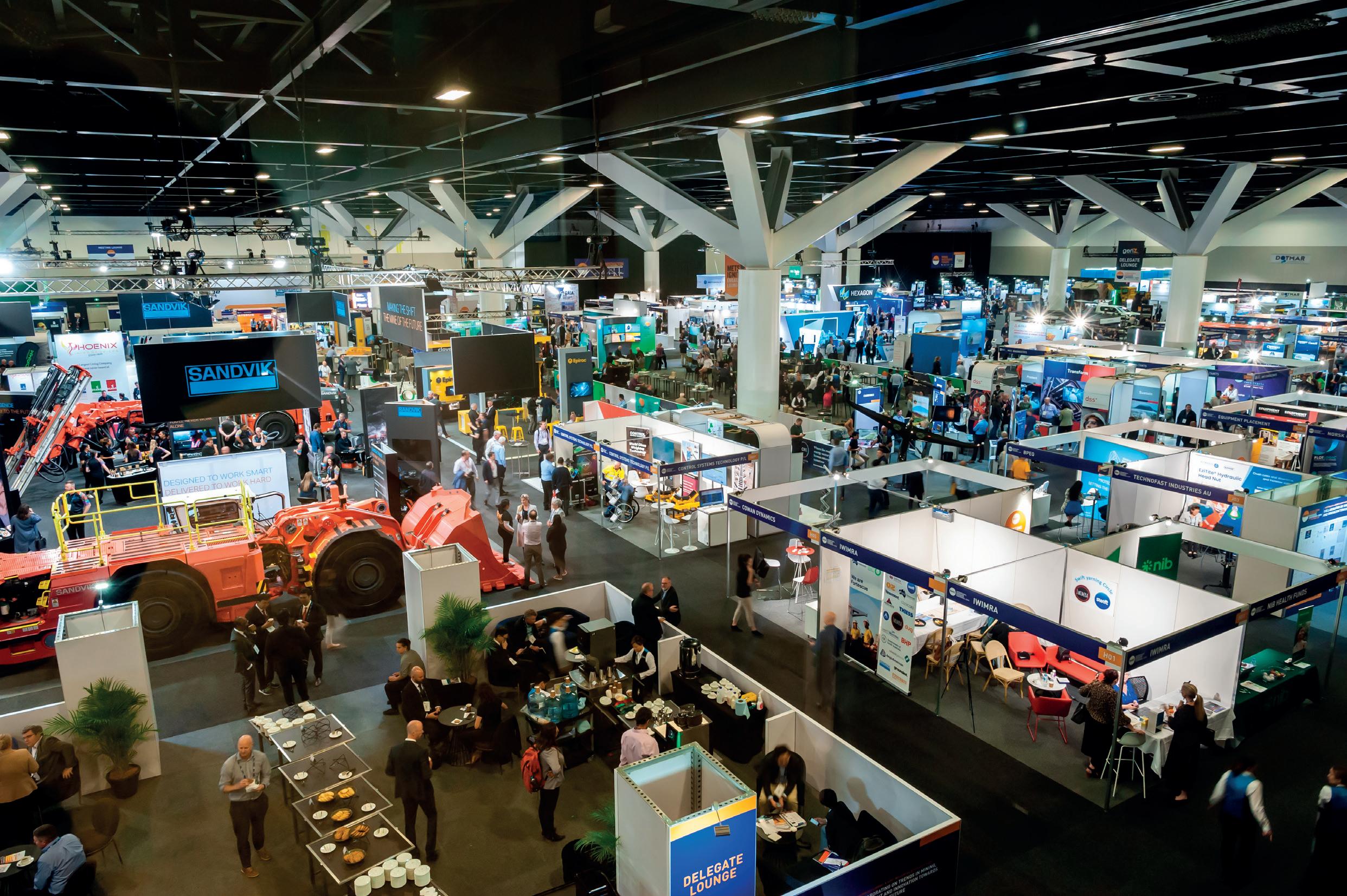
IMARC 2023 will also see us celebrate 10 years of IMARC and industry, reflecting on the progress the industry has made, and the new directions that mining companies, METS, Governments, and
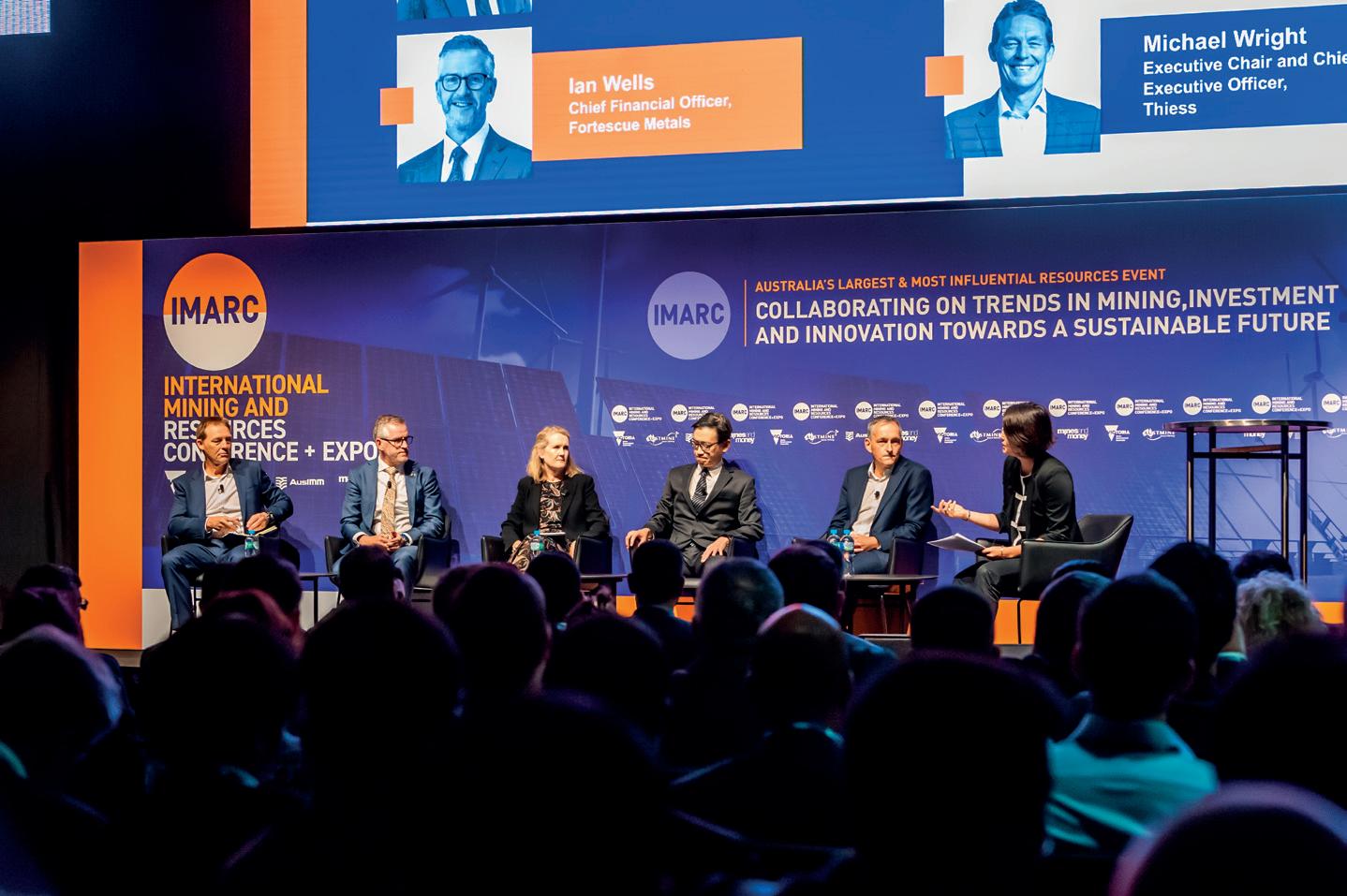
TO REGISTER FOR
MINING EVENT AND RECEIVE 10% OFF WITH THE DISCOUNT CODE MONKEY10
AUSTRALIA'S MOST INFLUENTIAL7 conference streams across 3 days
WA Mining Conference and Exhibition is the destination for thought-provoking content and technical and digital solutions transforming the mining industry. The high-calibre conference will explore the mining sector’s evolution through technological and sustainable improvements across the entire mining value chain. Alongside the conference will be an expanded exhibition featuring over 120 leading suppliers where you can see first-hand the latest equipment and digital innovation shaping the sector. New at WA Mining this year is the Decarbonisation Zone.
industry connections 3000+ leading suppliers 120+ expert speakers 60+
